October 16 — 18, 2024
AI goes from sci-fi to reality
Zors connect with multi-unit zees


October 16 — 18, 2024
AI goes from sci-fi to reality
Zors connect with multi-unit zees






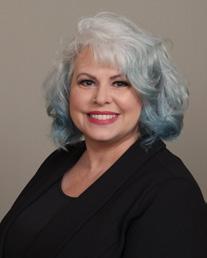


October 16-18, 2024
InterContinental Buckhead, Atlanta www.franchisedevelopmentconference.com


Check out what’s in store for the 25th anniversary of the Franchise Leadership & Development Conference. Join us this October in Atlanta!
Franchise Update’s 6th Annual Franchise Marketing Report examines the tool kits of marketing professionals and shares the results with you.
Brands recognize that franchisees who successfully run more than one location or territory most likely already possess operational know-how.
From
Discovering
IFA
Profitability
CHAIRMAN
Gary Gardner
CEO
Therese Thilgen
EXECUTIVE VP OPERATIONS
Sue Logan
EVP, CHIEF CONTENT OFFICER
Diane Phibbs
VP BUSINESS DEVELOPMENT
Barbara Yelmene
BUSINESS DEVELOPMENT EXECUTIVES
Kry stal Acre Hope Alteri
Jeff Katis Judy Reichman
EXECUTIVE EDITOR
Kerr y Pipes
MANAGING EDITOR
M. Scott Morris
Leaders gather to learn from
of
Tropical Smoothie Cafe promises “Tropic Time Now”
The latest digital marketing tactics get results
A new prescription for employee recruitment
DIGITAL EDITOR
Kevin Behan
WRITER AT LARGE
Eddy Goldberg
CREATIVE DIRECTOR
Cindy Cruz
Homewatch CareGivers wins with Total Care Solutions
Franchisors see common cause with multi-unit operators
“How do you identify, target, and recruit multi-unit franchisees to your brand?”
AI revolution is transforming the franchising industry
Results and highlights from the 2024 AFMR
88 Market Trends
Using AI, ChatGPT, and more to gain franchise insights
Melting Pot CMO Ana Malmqvist stays customer centric
“How do you use technology, such as AI and ChatGPT, to enhance your brand’s overall customer experience?”
DIRECTOR OF TECHNOLOGY
Benjamin Foley
SENIOR WEB DEVELOPER
Matt Wing
WEB DEVELOPER
Don Rush
WEB PRODUCTION ASSISTANTS
Esther Foley
Juliana Foley
DIRECTOR, EVENT OPERATIONS
Katy Coutts
SENIOR SUPPORT MANAGER
Sharon Wilkinson
SENIOR SUPPORT COORDINATOR
FRANCHISEE LIAISON
Leticia Pascal
SENIOR GRAPHIC DESIGNER
Michael Llantin
VIDEO PRODUCTION MANAGER
Greg Del Bene
90 International
Expert advice for growing around the globe
94 It’s Closing Time
Telling the difference between targets and forecasts
CONTRIBUTING WRITERS
Helen Bond Colleen McMillar
CONTRIBUTING EDITORS
Art Coley John DiJulius
William Edwards Evan Hackel
Matthew Haller Jack Monson
Jayson Pearl Paul Wilbur
DIRECTOR, CUSTOMER EXPERIENCE
Chelsea Weitzman
CONTENT & MARKETING MANAGER
Taylor Williams
SPONSORSHIP
BENEFITS MANAGER
Heather Stoner
Article Inquiries
editorial@franchiseupdate.com
Subscriptions subscriptions@franchising.com 408-402-5681
Technology continues evolving and changing, creating new tools that need to be adapted and implemented. Nowhere is that clearer than in the franchising space, where keeping pace with the latest trends is essential for success.
In this issue of Franchise Update magazine, we shine the light on artificial intelligence (AI) and ChatGPT and how franchisors use AI in marketing, sales, recruiting, and more. As Contributing Editor Evan Hackel writes, “The AI revolution in franchising is here, and those who adopt it will lead the way into a new era of growth and prosperity.”
We also dive into how franchisors can better recruit multi-unit franchisees. There are a lot of advantages to working with high-performing operators and tapping into their hard-earned know-how.
As we were putting this issue together, we were coming off the recent Franchise Consumer Experience Conference (FCXC), which was a resounding success. You’ll find a recap of the event’s highlights.
The FCXC also served as the platform to unveil the finalists for the 6th Annual Franchise Innovation Awards, showcasing cutting-edge concepts across various categories. We talked with the Franchise Marketing Leadership and Operations & Technology Leadership Award winners. Congratulations to the teams at Tropical Smoothie Cafe for their award-winning “Tropic Time Concierge” campaign and Homewatch CareGivers for their innovative Total Care Solutions program. You can read more about the winners in this issue.
Another highlight of every FCXC is the overview of the Annual Franchise Marketing Report (AFMR). The key findings from the 2024 version were presented at the conference and are covered in this issue. The report offers valuable insights into the marketing strategies of today’s franchise brands.
We also had a chance to find out more about two successful franchise CEOs. We get to know Andy Bell, the leader behind Ace Handyman Services & Ace Hardware Painting, which has more than 390 locations. The 58-year-old Bell has spent more than 20 years in franchising. We also hear from Heather Leed Neary, the president and CEO of Taco John’s International. She too has been in franchising for 20 years, and many of you may know her from her leadership at Auntie Anne’s. She’s only been with Taco John’s for a few months but has big plans going forward.
We also profile Ana Malmqvist, the CMO leading the marketing charge for Melting Pot, the fondue restaurant chain with more than 90 locations across North America.
In addition to these featured articles, you’ll find plenty of the expert takes that you’ve come to expect from Franchise Update magazine and our experienced columnists.
Kerry Pipes
KERRY PIPES Executive Editor
Written by ANDREW SEID
Successful franchise growth depends heavily on recruiting the proper set of franchisees for your brand and system. Single-unit franchisees can be owner-operators or investors. A multi-unit franchisee can be a former single-unit operator looking to grow or a multi-unit developer wanting to expand. The major trend over the past five to 10 years has been multi-unit developers opening units with different brands.
Each class of franchisee needs different support structures. Recruiting into each class requires specific techniques and strategies.
Single-unit franchisees are the largest group of franchisees. Especially for emerging brands, they are the bread and butter of franchising as they are more likely to fall in love with and give a chance to new and less proven brands. They are often first-time business owners looking to be hands-on operators but can also be investors looking to have an operator run the day-to-day business.
While they bring their own skills and expertise, single-unit franchisees often haven’t run their own business before. Highlight how your franchise system provides training, marketing support, and operational guidance and show why your brand has been successful in the past.
Many single-unit franchisees want to leave their corporate jobs and gain some control over their work-life balance. Focus on the areas of your brand’s unit-level operations that speak to this desire. Can the franchisee hire a manager to run the day-to-day business and still take home a comfortable ROI? Can they ensure that they have more time at home with their families rather than working late at the office?
Without sharing anything too sensitive or confidential, provide candidates with the opportunity to experience some of the dayto-day operations firsthand at an existing location. That hands-on experience can give insight into whether this business is the right fit. It also serves to get them excited to be part of your brand. It helps them visualize what they will be building with your help and guidance.
SINGLE-UNIT TIPS INCLUDE:
• Offer financing assistance. Partner with lenders or financial consultants who can
help candidates navigate and overcome hurdles in the investment process.
• Leverage local marketing. Use targeted local advertising and community events to reach potential franchisees in specific markets.
• Highlight success stories. Share testimonials from successful franchisees to inspire confidence.
More than half of all franchised units in the U.S. are owned by multi-unit franchisees. They are looking to scale their operations in a specific brand based on their previous business experience. The pool of potential candidates continues to grow as the industry moves toward the increased efficiencies of the multiunit structure.
Demonstrate how your franchise model can be replicated across multiple locations. Explain how economies of scale can improve profitability as franchisees expand. Identify whether the franchisee candidate is growth minded or operations minded. The unit operations have to meet your high brand standards, but the most effective multi-unit franchisee will be pushing to see how fast they can effectively grow out of whatever territory they’ve been granted.
Multi-unit franchisees provide more value to a brand for less support than single-unit franchisees. The fee structure, territory grants, and other elements of the franchise program should reflect that. It’s common to provide discounted initial franchise fees to developers who commit to multiple locations, but also consider reduced or descending royalty structures based on commitment and performance. You are spending less time and money to support each location and can afford to reduce some of the costs paid directly to you.
Multi-unit franchisees typically see increased efficiency by centralizing many aspects of their operations, such as supply chain and human resources. Highlight what elements of your brand can be best leveraged to help impact their ROI.
• Emphasize brand strength. Showcase your market position and growth potential to attract experienced investors.
• Facilitate networking. Connect prospects with current multi-unit franchisees to share experiences and best practices.
The fastest growing segment of franchising is multi-brand operators. They are typically sophisticated investors looking to diversify. They often start out as multi-unit franchisees who have built out their market and are looking for new brands for that market rather than venturing into different markets with their original brand.
Highlight how your franchise can complement or supplement existing brands in a portfolio. Often, the same customer base, employee base, or suppliers can be leveraged for multiple noncompeting brands. Brands may have similar company cultures and values to ensure that there aren’t conflicting goals.
Your brand may have the flexibility to adapt to a variety of systems, technologies, or other elements of either the franchisee’s existing operations or those imposed by another brand. Demonstrate how you could help the franchisee increase efficiency.
One great way to get in front of multi-brand franchisees is to participate in expos, such as Franchise Update Media’s Multi-Unit Franchising Conference. Such events are priceless opportunities to engage with sophisticated candidates.
MULTI-BRAND TIPS INCLUDE:
• Highlight cross-promotion opportunities. Explain how your brand can benefit from and contribute to a diverse portfolio.
• Provide comprehensive market analysis. Offer data on how your brand performs alongside other concepts in various markets.
• Emphasize franchisor stability. Showcase your company’s financial strength and long-term vision.
Recruiting the right franchisees requires tailored strategies for different operator classes. By understanding the unique motivations and needs of single-unit, multi-unit, and multibrand franchisees, franchisors can attract candidates who are best positioned to succeed.
Andrew Seid is senior consultant at MSA Worldwide. Contact him at aseid@msaworldwide.com or 860-604-9189.
Written by JOE KIM
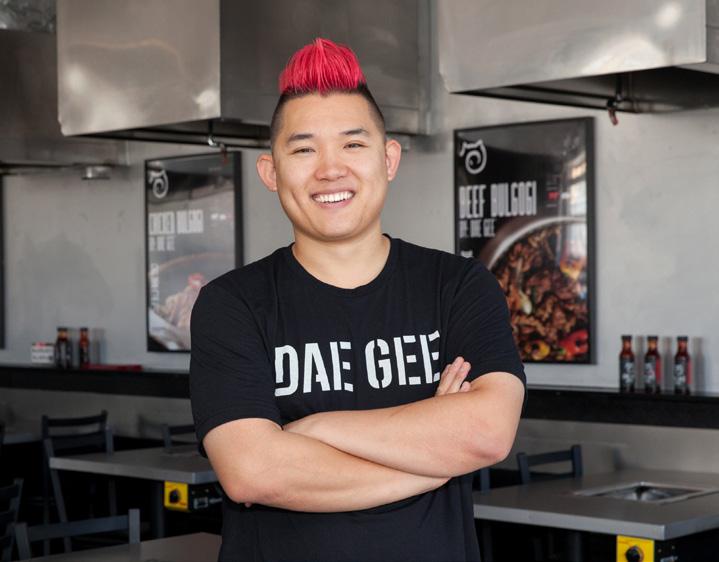
Ihad no food service experience when I opened the first Dae Gee Korean BBQ more than 10 years ago. I had never worked in a restaurant. Never bussed tables. Never cooked in my life. Instead, I worked in the family dry cleaning business for much of my 20s until my mother-in-law approached me with the idea of opening a Korean barbeque restaurant.
Like me, my mother-in-law is Korean American, but unlike me, she’s a seasoned cook and even owned a Korean restaurant in Hawaii in the 1990s. She developed the menu while I tended to branding, business permits, payroll, and other operational details. We opened the very first Dae Gee restaurant in the Denver suburb of Westminster in 2012 and have since been captivating a wide audience with my youthful energy and my mother-in-law’s homemade recipes.
Today, Dae Gee has firmly anchored itself as a modern, full-service Korean barbeque spot, progressively blending Korean food tradition with American culture. In fact, culinary star and restaurateur Guy Fieri, who previously featured Dae Gee on his reality television series, “Diners, Drive-Ins and Dives,” has said of our franchise, “This isn’t just any Korean restaurant. This one’s off the hook!”
Why Korean barbecue?
From music to movies and technology to fashion, the world has fallen in love with ev-
erything Korean. The collective results of that Korean coolness, which has flourished across the world over the past decade or more, is also increasing the popularity of Korean food.
Yelp recently reported that relative demand for Korean cuisine grew 140% in Phoenix, 80% in San Francisco, Portland, Seattle, and Boston, 70% in New York, and 50% in Atlanta, San Jose, Chicago, and Houston. After all, with a complex mix of flavors and cuisines plus proteins, vegetables, grains, and assorted spices, Korean food is a great choice for the health-conscious and clean-eating consumer. It’s not just about food; it’s about the experience.
When Americans (or Westerners in general) go out to dinner, they often get a huge personal plate of one type of food. Maybe you’ll throw in a side of potatoes for some variety, but for the most part, you’re eating one thing for your meal, like steak, chicken, or pasta. In Korea, however, meals usually feature one large communal dish for everyone to share. That can range from grilling your own pork to digging into a large boiling pot of ramen.
Typically, you don’t have your own plate and things go right from the grill/dish to your mouth. This family style of eating becomes a centerpiece for conversation with your family and friends. It’s no longer “Do you want to try mine?” It’s, “Here try this!” In addition to the main item, you almost always have “banchan,” which are small, coaster-sized dishes filled with little bites to try.
Let’s pig out!
Dae Gee, which means pig in Korean, is about pigging out or pig out: doing everything to the maximum. Whether it’s a crazy red mohawk, like the one I sport, or indulging in eccentric flavors and filling up, it’s about pushing the limits of how things are done.
Dae Gee is known for progressively blending Korean food tradition with American culture
and exposing customers to an interactive experience that allows them to cook their own meat on grill tops at their tables when they dine.
Customers have the option to choose from a variety of traditional Korean meats like galbee (beef short ribs), sam gyeob sal (sliced pork belly), and dak bulgogi (chicken), which are soaked in our secret marinade. Each choice of meat, as well as fish and vegetarian options, can be enjoyed in a bowl or hot stone pot or tucked inside lettuce and eaten as a wrap. Entrees can be piled high with your choice of side dishes, including rice, fresh slaw, kimchee, broccoli, radishes, and fish cakes. Spicy sauce can add to the flavors.
In short, Dae Gee lights up your senses and enriches the full human experience. Thanks to generations of recipes passed down, we leave our customers well fed with culture, humor, and top-quality Korean food.
Better together
Since our 2012 debut, Dae Gee has grown to five restaurants serving throngs of customers throughout Colorado’s Front Range, and we recently opened our first restaurant outside of the United States in Puerto Vallarta, Mexico. Our brand has more than 20 units in various stages of development across Indiana, Massachusetts, New Hampshire, South Dakota, Texas, and Mexico. We plan to open as many as five to 10 new restaurants nationwide over the next 12 months and at least that many each year thereafter.
Dae Gee is also focused on expanding its international footprint across Australia, England, Korea, Japan, Singapore, and Taiwan, among other select European and Asian markets.
There is no preference between single-unit or multi-unit operators. The ideal candidate should not only have strong financial backing, but also an ambitious and perseverant mindset.
To augment this growth, Dae Gee is seeking franchise partners looking to get in on the ground floor of an emerging brand in the increasingly popular Korean cuisine industry. Including a franchise fee of $45,000, the total investment to open a 1,500 to 2,000-square-foot restaurant ranges from $408,875 to $948,625.
Joe Kim is the founder and CEO of Dae Gee Korean BBQ.


Easy Accounting Software Import
Create Relevant Comparisons
Identify Opportunities & Trends

“My leadership style is grounded in the understanding that everyone is human no matter what their role.”
Written by KERRY PIPES
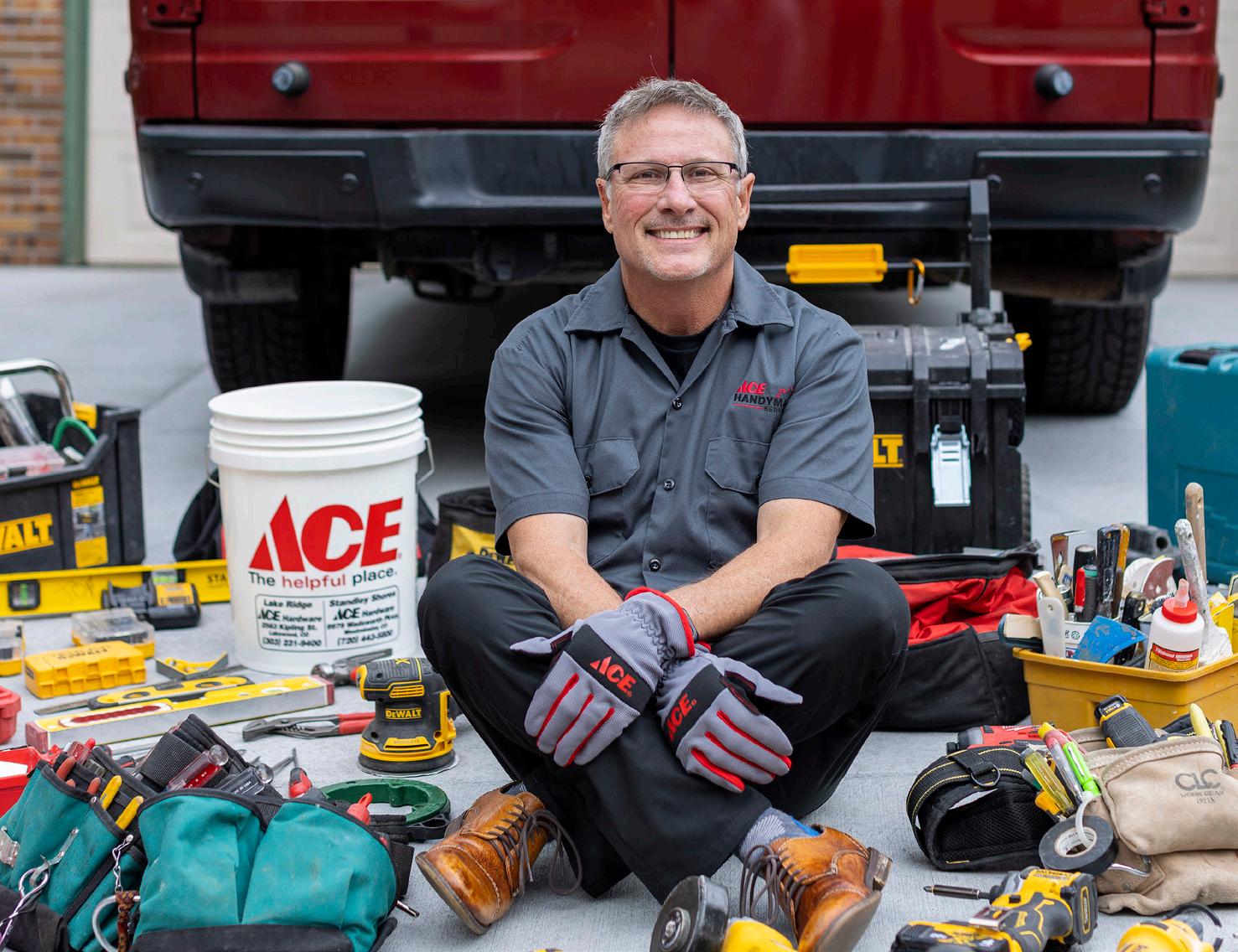
ANDY BELL CEO and Founder
Company: Ace Handyman Services & Ace Hardware Painting
Units: 392
Age: 58
Years in franchising: 24
Years in current position: 26
Andy Bell founded the home improvement and renovation company Handyman Matters in 1998 and started franchising in 2001. When the company was acquired by Ace Hardware in 2019, the name changed to Ace Handyman Services, and Bell stayed on as CEO to help it grow.
The cash flow injected by Ace Hardware has enhanced Ace Handyman Services in everything from training and support to marketing and operations. The brand now has more than 390 franchise territories across more than 40 states and continues to expand.
Based in Denver, Bell, 58, leads his team with what he calls a “supportive and enthusiastic” style and says it’s important to make
sure his team has the right tools to do their jobs. He’s also particular about who is hired. “Every colleague and craftsman in our organization is a brand ambassador who must embody Ace’s values, mission, and vision,” he says, “so hiring kind, service-hearted people across the organization—not just at the top—is of utmost importance.”
Lately, Ace Handyman Services has been upgrading its technology, says Bell, “so that we can optimize the way we do business.” The move has involved changing out the brand’s POS system, data management system, and website. “The system is more complex than ever, but it’s more accurate and gives us instruments to fly this plane faster, farther, and higher than ever before,” he says.
Bell says taking advantage of the Ace Hardware name should help him with his goal to have an Ace Handyman Services & Ace Hardware Painting location near every one of the more than 5,500 Ace Hardware store locations across the U.S.
“There is no challenge I won’t tackle,” he says, “and I do my best to lead and grow people beyond their expectations.”
What is your role as CEO? I would define my role as chief energy officer because I inspire people to go beyond what they believe they’re capable of.
How has Covid-19 affected the way you have led your brand? Covid-19 has led companies to implement a greater level of accountability. Technology now allows us to hire remote employees from anywhere in the country. Things must be structured so that everyone knows what they’re doing, when they’re doing it, and what they’re accountable for and then report weekly to make sure we’re moving the needle on whatever will get us closer to our goals.
Describe your leadership style. Supportive and enthusiastic. I always want to ensure that my team has the right tools to do their jobs well.
What has inspired your leadership style? My leadership style is grounded in the under-
standing that everyone is human no matter what their role. Mistakes will be made at every stage of business, so encouraging an environment of learning is crucial.
What is your biggest leadership challenge? One of our biggest challenges right now is upgrading our entire franchise system to implement and optimize robust, world-class technologies. We just changed our POS system, data management system, and website for roughly 400 franchises all around the country. Things are much more complex compared to when I started back in 1998 when administration equated to a pen, paper, and a filing system. As technology advances, we prioritize onboarding our team onto the latest systems so that we can optimize the way we do business.
How do you transmit your culture from your office to frontline employees? I believe culture is defined by your actions. Taking accountability is important. I’m quick to apologize when I make a mistake and determined to learn from those mistakes.
How can a CEO help their CMO develop and grow? Setting the tone and culture for new colleagues is paramount because culture feeds brand voice. Culture trickles from the top, so if we have a strong culture in place, our leaders will embody that.
Where is the best place to prepare for leadership: an MBA school or OTJ? On the job. I don’t have an MBA, but I’d suggest that my 26 years of life experience running a business have served as an MBA+. As CEO, I can perform every function within this organization, and I’m proud of that unique quality. I believe it’s important to understand all of the pieces that make your machine run.
Are tough decisions best taken by one person? How do you make tough decisions? I think it’s best to put heads together to form a consensus. Diversity of opinion is important, and decisions are stronger when there’s a focused, collective effort.
Do you want to be liked or respected? Respected. I work hard. I treat people with dignity and respect. All I ask is the same in return. Advice to CEO wannabes: Clarity is kindness. Figure out your communication style and plan so that everybody’s clear on expectations.
Describe your management style: At the forefront, I’m always asking our team, What does winning look like? As a leader, listening is key. I want to hear my team, truly understand
their thoughts and needs, and ask questions that steer us strategically. I think it’s important for everyone to understand why we take on each initiative, why it matters, and where it’s meant to go.
What does your management team look like? Ace Handyman Franchising is run by Andy Bell, CEO, and Chris Bue, president. We have a team of vice presidents who also cover marketing, operations, IT, and development. How does your management team help you lead? Our management team is phenomenal. They operate seamlessly on the front lines, which protects my time so that I can continue keeping the big picture in mind and drive us forward.
Favorite management gurus: Do you read management books? Though a less traditional perspective, Endurance: Shackleton’s Incredible Voyage by Alfred Lansing is an incredible maritime story about leadership and resilience. It’s about Sir Ernest Shackleton, who led his crew on a treacherous expedition around the Antarctic. Against unbelievable odds, including their ship being crushed by pack ice, he didn’t lose one man.
What makes you say, “Yes, now that’s why I do what I do!”? The opportunity to lift people up. I have high energy, high optimism, and high accolades for those around me. That is my style.
What trends are you seeing with consumer spending habits in your territories? While the costs of services and products are higher than before, we’re not seeing a reduction in consumers asking for services. We’re typically seeing a reduction in the duration of projects or flexibility in our repair timelines. When Ace Hardware acquired us in 2019, they saw a sweet spot between the DIY homeowner demo and do-it-for-me homeowners. The do-it-for-me demo is fairly represented in the homeownership of the millennial generation.
How is the economy driving consumer behavior in your system? Consumers are more discerning and delaying some home improvement projects due to caution or prioritizing travel and entertainment. But hybrid and remote work are also part of our new normal, so people want to invest in home improvements that benefit their work and personal lives.
What are you expecting from your market in the next 12 months? I think we’re
returning to a new normal. Overall home values are rising, so there’s some discretionary equity there. As interest rates come down, I hope people become encouraged to enter small business ownership.
Are your franchisees bullish or bearish about growth and adding additional units? I can’t speak for all of my franchisees—it’s a matter of individual perspective. If your mindset is bullish, you see opportunity no matter the climate. But if you depend on the economy to forecast your opportunities, you’re probably bearish. Personally, I believe when it comes to business, we have to do what we will with what we have.
Are commodity/supply costs any cause for concern in your system? Commodity and supply costs don’t affect us as greatly as other businesses.
In what ways are political/global issues impacting the market and your brand? Election years create unrest. People tend to hold back on major decisions until new country leadership has been defined. I don’t see this year as being any different. This pattern has happened every four years in the 26 years I’ve been in business.
How much influence does your IT department have on your brand? Our IT team is critical. Online presence is how people find us and review us and where we can create an initial point of contact after they’ve researched our company.
How have your company’s tech tools changed over the past five years? If this was a physiology class, we would have removed every organ and replaced them with new ones. We’ve recently changed our website platform, POS platform, and data management platform.
How does technology influence your decisions? Technology allows us to see real-time data from our franchise units so that we can make decisions based on today’s insights instead of some lag indicator in six weeks. It’s made us more responsive, nimble, and wiser about running and controlling our business operations. We can act on franchisee/customer feedback today instead of tomorrow.
Are you using AI? How? We don’t use AI for content or anything that would be consumer facing. We want our own, personal brand voice to communicate authentically to our consumers and community. However, I
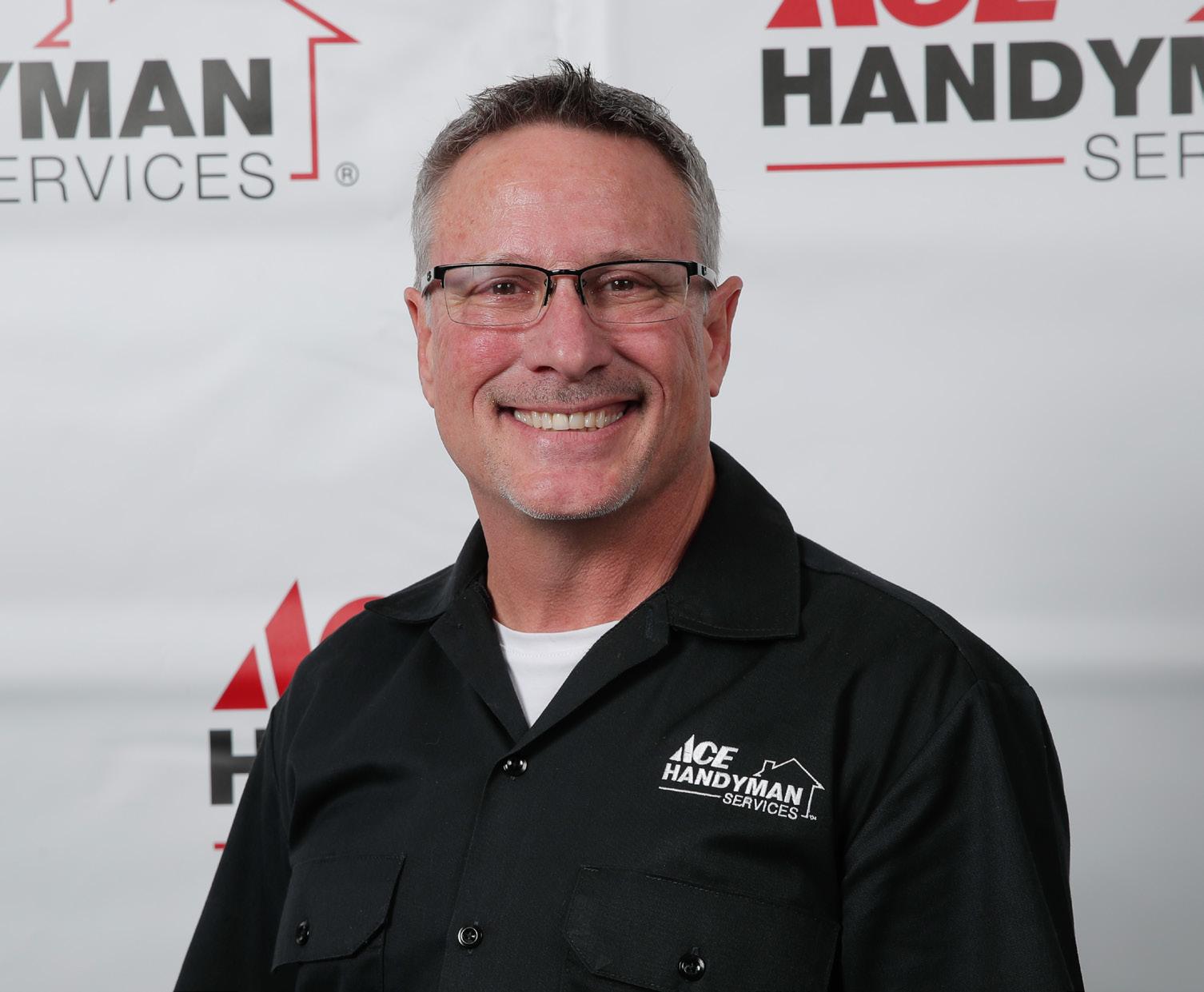
do think it’s a useful tool for brainstorming and training.
How do you measure your ROI on technology investments? Our ROI is largely based on franchisee unit economics. Introducing new technology might come with an initial learning curve for franchise owners, but once your team is trained and competent, you can start to optimize the tech and experience its full benefits.
How did/do you create a culture where use of technology advancements is welcome and used? I constantly listen to my staff’s needs and requests for new tools and do my best to deliver what they need to do their jobs well.
What time do you like to be at your desk? I’m up every day at 5 a.m. to get work done, so I can be fully present by the time I hit my desk at 8 a.m. It’s important for me to be available to my staff even if it’s just offering a pleasant “Good morning!”
Exercise in the morning? Wine with lunch? I don’t exercise as much as I should though it’s one of my goals. I don’t drink. Do you socialize with your team after work/outside the office? I love socializing with my team at company events. Outside of work, I’m not much of a partier. I’m more energized by life.
Last two books read: Two great books I read recently are The 4 Disciplines of Execution: Achieving Your Wildly Important Goals by Sean Covey, Chris McChesney, and Jim Huling and Profitable Partnerships: Improve Your Franchise Relationships and Change Your Life by Greg Nathan. The latter I’ve read many times before, but every time I revisit it, I discover something new. When not reading industry books, I enjoy John Grisham. What technology do you take on the road? I run everything on my iPhone. I could run my entire business off of it.
How do you relax/balance life and work? I draw a line in the sand every evening at 6 p.m. and spend my Sunday evenings organizing myself for the next week. The rest of my time is for my family.
Favorite vacation destination(s): My family recently went to Portugal and had an amazing time. The culture and people are beautiful.
Favorite occasions to send employees notes: I like sending notes of appreciation to teammates when they’re covering for someone who is out sick or on vacation—working extra hard to ensure we’re operating at the same level. I’m a big believer in what you appreciate appreciates.
Favorite company product/service: My Bluetooth speaker can light up any dull moment, so I always have it on me. Sometimes,
I’ll even play music before online meetings. Music inspires me, especially classic rock, like Tom Petty.
What are your long-term goals for the company? Ace Handyman Services and Ace Hardware Painting in every territory that has an Ace Hardware (5,500-plus U.S. locations).
How has the economy changed your goals for your company? Paired with grit and determination, we’ve been fortunate to keep our strategy consistent. We’re layering on more services that will let us continue to build out our commercial services as well as our residential business.
Where can capital be found these days? All around if you do your research and stay prepared. You can get an SBA loan, a HELOC, approach angel investors, or borrow from friends or family and pay them back with interest—the list goes on. Capital is based on a solid business plan and an enthusiastic pitch to the right person.
How do you measure success? To me, success is lifting up others around you. I love to see people exceed their expectations. There’s nothing more rewarding than asking someone where they want to be in five years and then watching them achieve just that—and often more.
What has been your greatest success? My family. I have two fantastic boys and a beautiful, wonderful wife. Holding that together for more than 30 years has been my greatest personal accomplishment. To me, success is seeing my two boys as gentlemen and scholars in the community, paying it forward by lifting up those around them.
Any regrets? I don’t think there are any wrong turns in life, but I was offered a college scholarship to run cross country, and I didn’t do it. If I could rewind, I’d love to have followed that path and seen how it would have impacted my approach to business.
What can we expect from your company in the next 12 to 18 months? Our continued pursuit of perfection and excellence as ambassadors of the wonderful 100-year-old Ace Hardware brand. One of my dad’s favorite quotes that resonates here is from the great coach Vince Lombardi: “Perfection is not attainable, but if we chase perfection, we can catch excellence.”







There’s no catch! We don’t require any credit cards or obligations.

5 of your locations will get access to our full suite of services.

Over $2,700 in targeted ad spend covered by SocialMadeSimple.

3 custom posts published to each location’s social networks.





Julien Paul Chief Revenue Officer
“I work hard every day to lead with humility, passion, and directness.”
Written by KERRY PIPES

Heather Leed Neary made a big career move in March when she joined legacy Mexican QSR brand Taco John’s as president & CEO.
President
& CEO
Company: Taco John’s International
Units: Approximately 360
Age: 49
Years in franchising: 20
Years in current position: 6 months
Neary has been in franchise leadership roles for nearly two decades. Fifteen of those years were at Auntie Anne’s. That’s where she moved through the marketing department to the top spot as brand president for the pretzel chain, which saw gross sales grow to more than $550 million under her leadership. Her next move took her to KBP Brands, a mega multi-brand franchise operator with more than 1,100 KFC, Taco Bell, and Arby’s locations, where she served as brand president for almost three years.
She is known for her commitment to excellence and operational efficiency. She also
encourages a culture of collaboration and empowerment that focuses on people. “Not a week goes by that I don’t talk or text or email with my team (Auntie Anne’s) there and my franchisees there,” she says.
Now, a few months into her tenure at the 55-year-old Taco John’s, she’s leading the brand into an expansion in its Midwest stronghold as well as into new markets and, of course, building relationships with her new team members.
She says she’s looking at “lowering costs and driving top-line sales” and continuing to “grow the footprint of the brand in a smart and thoughtful way.” She says the brand will be expanding its marketing efforts and reach by targeting different media channels, and guests can expect new menu items on the way.
On the development side, Neary says the brand is working to optimize build-out and remodeling costs and to enhance unit-level economics. She says Taco John’s wants to “deliver a great value proposition to our current and future franchisees.”
What is your role as CEO? At Taco John’s, I am here to remove barriers, so our incredible team can support our franchisees and grow our business.
How has Covid-19 affected the way you have led your brand? I wasn’t here at Taco John’s during Covid. I was the brand president at Auntie Anne’s. In a matter of three days, we went from having one of our best years ever to closing more than 80% of our restaurants and laying off or furloughing 72% of our team. It was a devastating time for the brand and, more importantly, for the people I’d come to call my extended family and friends. I definitely think Covid taught me more compassion and taught me to never take anything for granted. The time during the pandemic also taught me how resilient the team was at Auntie Anne’s and how gritty we were to figure out alternate ways to bring in revenue during times when our malls and airports were ghost towns. I wouldn’t ever want to go back there, and I also really appreciate the lessons learned during that time.
Describe your leadership style. I want all our team members to feel respected, trusted, and honored. I am here to coach and serve our team to help them reach their goals, so they can help us reach our goals. In a nutshell, I work hard every day to lead with humility, passion, and directness.
What has inspired your leadership style? I’ve had the honor to work for many amazing leaders in my past. I like to think I take a little from each of them to move forward. I also turn to my friends and family and learn from them. I’ve been fortunate to have many inspirational leaders over the years, and I hope I can honor them in how I lead today.
What is your biggest leadership challenge? Hands down, patience is an opportunity for me. I am constantly reminding myself that good work takes time. We have so much awesome work ahead of us at Taco John’s; I can’t wait to see it come to fruition. And that’s the issue: Sometimes, I literally can’t wait.
How do you transmit your culture from your office to frontline employees? I believe culture is the responsibility of every single one of us. I want to learn from all our team members in restaurants, in the field, and in our offices. A culture of diversity, inclusion, and respect is a recipe for success. We honor each other, we celebrate our successes, and we work together to improve the areas that require a little work.
How can a CEO help their CMO develop and grow? A CEO is responsible for helping all the leaders on the team to achieve their goals and, by default, the goals of the organization. It’s important to stay close to the CMO and understand their challenges and help them work through tough spots. I’ve always believed that everyone fancies themselves a marketer, and the CMO tends to have quite a bit of scrutiny. Support, coaching, sounding board: This is how we help our CMO develop and grow.
Where is the best place to prepare for leadership: an MBA school or OTJ? I don’t think it has to be an either/or proposition. There’s something to be said for formal education, and there’s also no doubt that the school of hard knocks (aka, life) is also a great teacher. I believe in both and think one can be successful without an MBA, but on-the-job experience is critical for growth. In the restaurant industry, being able to walk the walk and talk the talk of your operators gives you far more credibility than a degree hanging on a wall.
Are tough decisions best taken by one person? How do you make tough decisions? As CEO, it is my responsibility to take in all the perspectives and viewpoints that lead to that decision. At the end of the day, it is my responsibility to make that decision, explain the why behind the decision, and own it. I tend to look at the decision from all angles, and I play out for myself what would happen depending on different scenarios. Not every decision will be right, but I will learn from all of them, and I will take accountability for those decisions.
Do you want to be liked or respected? Again, not an either/or here. I think everyone wants to be liked. In my role, though, I understand that I can’t make everyone happy. Ultimately, I need to do what’s right for our people and for Taco John’s. I treat everyone with respect and hope that even if I’m not liked for a particular decision, I’m respected for how I treat people.
Advice to CEO wannabes: Be curious. Ask questions. Read a ton. Listen to podcasts. Don’t hesitate to ask your board for help. Turn to your mentors for advice. Recognize that you won’t always get it right. Understand that vulnerability and humility will take you far. Never compromise your values. It’s not easy. It is rewarding. It is worth it.
Describe your management style: Working with my leadership team, we set the strategies and goals, and from there, I expect our team to work toward those goals autonomously. I am not a micromanager. I am here to support, coach, and guide along the way.
What does your management team look like? We have a great blend of experiences and personalities, and I’m fortunate to work with such a strong, high-integrity team. Our head of HR and our GC have both been here for quite a while and have a deep history of the brand that’s so important. We also have folks on our team who are newer to the brand but have a wealth of industry experience and knowledge. We make a great team!
How does your management team help you lead? We work together. Lots of communication. We’re all in this together, and focusing on people and culture will lead to results.
Favorite management gurus: Do you read management books? I read constantly. I have a pile on my nightstand that is rarely less than 10–12 books. Right now, I’m rereading
“I believe culture is the responsibility of every single one of us. I want to learn from all our team members in restaurants, in the field, and in our offices. A culture of diversity, inclusion, and respect is a recipe for success. We honor each other, we celebrate our successes, and we work together to improve the areas that require a little work.”
“We need to continue to be flexible in what we offer our guests while making sure to focus on profitability for our franchisees. The margins in our business are super slim, so every decision and every promotion are weighed heavily in collaboration with our data analysts, our franchisees, and our partners.”
Begin with We by Kyle McDowell. It’s an amazing, quick read on building culture. I like anything from Adam Grant. I also recently read Atomic Habits by James Clear and The Comfort Crisis by Michael Easter. All are great leadership books and help me continue to refine my approach and style.
What makes you say, “Yes, now that’s why I do what I do!”? Oh man, so many times! I love this industry—it’s truly the industry of opportunity. I was just talking to a franchisee last night at dinner. He had to drop out of college many years ago when his dad fell ill, and he had to support his family. He started at Taco John’s as a crew member, eventually rising to GM. At some point, our founders offered him a franchise, and the rest is history. I think his quote last night was something like, “I’m living the dream. The son of a truck driver, and I own my own restaurants.” There are countless stories like this.
What trends are you seeing with consumer spending habits in your stores? Our guests are looking for quality and value, and we can deliver both for them. We have a robust value menu that we continue to enhance, and we offer a really fresh product. Our taco shells are prepared in-house daily, our pico is made fresh in the restaurant every day, and we have signature items like Potato Olés and Churros that really make us a destination.
How is the economy driving consumer behavior in your system? We need to continue to be flexible in what we offer our guests while making sure to focus on profitability for our franchisees. The margins in our business are super slim, so every decision and every promotion are weighed heavily in collaboration with our data analysts, our franchisees, and our partners.
What are you expecting from your market in the next 12 months? We are doing some branding work to really identify who we are and who we want to be based on deep consumer insights. We’ll use this information to make sure we’re positioned competitively in the marketplace and also ensure that we’re relevant to our guests. This will happen with new menu items and expanding the outreach of our marketing efforts by targeting different channels.
Are your franchisees bullish or bearish about growth and adding additional units? Our franchisees are eager to grow. We are working on further improving our develop-
ment process so that the build-out costs are optimized and the remodel costs are optimized. We’re also working on improving unit-level economics for our restaurants.
Are commodity/supply costs any cause for concern in your system? All costs that impact our business are a concern. We continue to work with our vendor partners to identify ways to be as efficient as possible in all our buying.
In what ways are political/global issues impacting the market and your brand? Any factors that impact our guests impact us too. We are a fun brand that delivers great-tasting tacos to our guests. We want to bring some levity to our guests in a world that can be heavy at times.
How much influence does your IT department have on your brand? Our IT team is top-notch, and we collaborate across marketing, ops, technology, and our franchisees to make sure we’re as efficient and effective as possible.
How does technology influence your decisions? We weigh the value/cost equation when making tech decisions in collaboration with our franchisees. Will this deliver a better guest experience? Will this decision make our restaurants more efficient? What is the ROI? Are you using AI? How? We’ve recently partnered with Presto to improve the guest experience at the drive-thru with an AI tool. We have this in two restaurants now and plan to continue our implementation efforts. It’s an exciting time, and we need to be prudent and data-forward when thinking about how we use AI in our business model.
How do you measure your ROI on technology investments? It’s a value-based equation. Are we speeding up service? Are we driving sales? Are we being more efficient? These are all ways for us to measure the ROI of technology investments.
How did/do you create a culture where use of technology advancements is welcome and used? Technology is meant to enhance, not hinder, our business model. If we can confidently explain the why and how, we can gain buy-in from our franchisee system to advance technology forward.
What time do you like to be at your desk? I’m a morning person. You’re likely to find me working between 7 and 8 a.m.












































































“I am a better leader when I decompress and find time for myself. I don’t think about it as balance—that implies 50/50. I love to work, and I love to play. It’s about harmony and finding the happy medium. I’m a pretty high-energy person, so I don’t need a ton of downtime, but I do know when it’s time for me to pause, and I don’t mind taking the time to refresh when that happens.”
Exercise in the morning? Wine with lunch? I am an avid, some might say OCD, runner. I get up between 4:30 and 5 a.m. daily to run five to six miles, stretch, and do core and strength training. I am a better person, physically and mentally when I exercise first thing in the morning.
Do you socialize with your team after work/outside the office? Developing deep relationships with our team and our franchisees is important for our success. Sometimes, talking through a challenge over a great dinner is the best way to advance the brand forward. I am still very close to my team at Auntie Anne’s. We worked together through some pretty dramatic challenges, and I consider them all to be dear friends. I left Auntie Anne’s in 2020 after 15 years, and I can say that, to this day, not a week goes by that I don’t talk or text or email with my team there and my franchisees there. We became very close, especially during Covid when we had to temporarily close almost our entire system.
Last two books read: Beautiful Country by Qian Julie Wang and Invisible Child by Andrea Elliott.
What technology do you take on the road? When traveling for work, laptop, iPad, iPhone, and AirPods.
How do you relax/balance life and work? I have the most amazing friends and family and love to play golf, run, and enjoy a great meal with these folks. My grandkids are the light of my life, and I love hanging with my two adult daughters and their significant others. I am a better leader when I decompress and find time for myself. I don’t think about it as balance—that implies 50/50. I love to work, and I love to play. It’s about harmony and finding the happy medium. I’m a pretty high-energy
person, so I don’t need a ton of downtime, but I do know when it’s time for me to pause, and I don’t mind taking the time to refresh when that happens.
Favorite vacation destination(s): I have a ton of wanderlust. I love to travel and explore the world. It’s hard to pick one place. I love the beach. I love Europe. I love visiting our national parks. I’ve also had the opportunity to visit Africa a couple of times and am going back next year. Travel is so nourishing to my soul. Favorite occasions to send employees notes: Gratitude and recognition are two pillars for me. I am a big fan of handwritten thank-you notes and tend to do this when a team member goes above and beyond and when a team member presents on behalf of the company—anytime, really. I make a point to send out thank-you notes at least once a week.
Favorite company product/service: Peloton! I’m a Peloton junkie. I used to be a gym gal, but during the pandemic, I discovered this amazing platform and haven’t been in a gym since. The content is top-notch: running, biking, strength, cardio, yoga, and meditation. And the coaches are really motivating to me.
What are your long-term goals for the company? This is a 55-year-old legacy brand with an incredible history. I am eager to continue improving the business model by lowering costs and driving top-line sales. Long-term goals are to continue to grow the footprint of the brand in a smart and thoughtful way.
How has the economy changed your goals for your company? The economy will always influence the goals of our organization. Interest rates, construction costs, and consumer confidence: We will adjust our goals as these areas ebb and flow.
Where can capital be found these days? Capital is available. It’s just a matter of how much one has to spend to secure capital. This will continue to impact our organization.
How do you measure success? Am I living by my values? Am I honoring my team and helping them reach their goals? Am I honoring my family? Am I helping my franchisees realize their goals? These are the questions I ask myself every day.
What has been your greatest success? I am very proud of my relationship with my husband. We’ve been together for more than 25 years, and I love him today more than ever. We are a true team, and I am beyond fortunate for his support and encouragement. We are polar opposites in many ways, and that’s worked so well for us. I am blessed to have two amazing daughters who make me so proud too. Life isn’t always easy. Take the high road, and you’ll never be disappointed.
Any regrets? I remember being in college, maybe 20 years old or so, and thinking I didn’t want to get to the old age of 30 and have regrets. To that end, I have always taken risks and done what my heart and my head told me was right, and I’ve made many mistakes and learned so much. So, no. No regrets!
What can we expect from your company in the next 12 to 18 months? You’ll continue to see amazingly tasty products from Taco John’s. You’ll also see us dial into our audiences in new and unexpected ways, connecting with our loyal fans and reaching out to new fans. Look for continued product innovation, unit growth, and a lot more relevant news from Taco John’s.


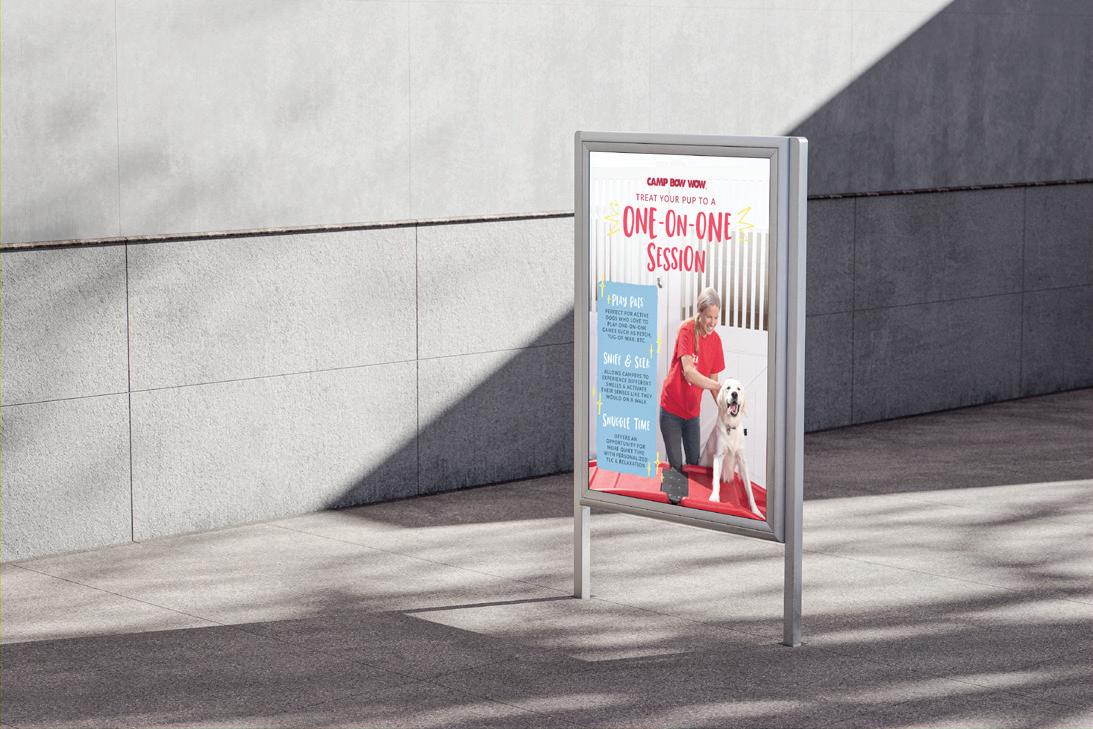











After existing primarily in science fiction stories for decades, artificial intelligence is having a real-world moment. Experts say AI is here to stay and that it will transform franchising in significant ways.
Ryan Farris, president and COO of AlphaGraphics, PostNet, Multicopy, World Options, Pack & Send, and Mail Box Etc., has been charting the AI course for the companies he leads.
“If you look at the Goldman Sachs report, they show four in 10 jobs can be 30% more productive using generative AI,” Farris says. “When we start with the mindset that maybe my individual teams could be 30% more productive, we want to introduce those colleagues to AI. Then we want to introduce them to the guardrails of how to be safe with the data.”
Franchisors use AI for market analysis, research, training, support, sales, marketing, and more. Tools are being developed to operate drive-thru windows. Chatbots will soon be able to tell what potentially life-saving lab tests a person needs. Someday, AI might be in charge of scheduling your child’s swim lessons and playdates.
Business leaders owe it to themselves to investigate the possibilities. There will be pushback, but Kelly Crompvoets, vice president of marketing for Any Lab Test Now, says technological advances have always generated skepticism.
“You switch everyone over to a new CRM, and that’s hard to change,” Crompvoets says. “I used to train people. And I used to say to my
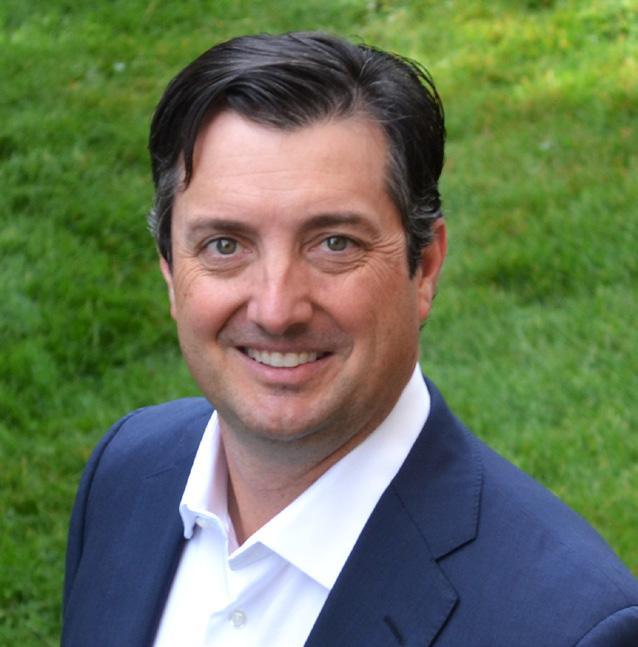
classroom of franchise owners, ‘Look around. Nobody here has a haircut, clothes, or whatever from 1975.”
For years, AI was a sci-fi writer’s dream. Now, it’s a tool available to anyone with an Internet connection, which leads to a natural question: “How will AI be used?” These are early days, and the answers are wide open.
Farris says people often imagine sophisticated AI solutions that require massive investments and extensive overhauls, but AI can start small and inexpensively. “Make it easy. Start simple. Crawl before you run,” he says. “You might find that your team, once they understand how to use it in their own roles, departments, and functions, will then give you better ideas of how to invest for those bigger initiatives.”
He and his team developed four AI workstreams. It starts by getting people used to working with it to conduct research, build tables of content, do translations, perform competitive analysis, and discover their own uses. The goal is to increase efficiency without making AI seem foreign or threatening. That involves letting staff members play around and have fun with accounts that are shared by departments.
“They can see each other’s scripts. They can see what everyone was doing to play with it,” he says, “and then they talk.”
The second workstream is about streamlining utilities. For a time, different people brought recording tools to each meeting, but only one recording was needed. A team looked into each tool and created a standardized list of approved AI as part of a companywide policy.
“This is what every employee is going to be trained on. This is what they’re going to use. This is how they’re going to use it. And this is how we’re going to accelerate best practices,” Farris says, “so we’re not individually learning, individually reinventing the wheel. Now, it’s an organizational effort.”

Vice President of Marketing Any Lab Test Now
Examples include automating customer messaging, prospect identification, and social media posts. Everything needs to be personalized, and it needs to be clear and correct, so it doesn’t give a prospect a reason to shut the proverbial door.
Farris cautioned that workstreams three and four should be treated as aspirational in the beginning. Starting with simple tasks and scaling up allows for better adaptation and strategic investments. “Everybody seems to think you need these big, huge, lofty enterprise solutions,” he says, “and they’re missing the fundamentals.”
SPEED, SPEED
At Any Lab Test Now, the team is working with a vendor to create an AI-driven chatbot designed to guide customers to appropriate lab tests. Crompvoets says the chatbot will ask the consumer questions about their situation and symptoms before providing tailored recommendations. If a 35-year-old woman is considering pregnancy, the chatbot will suggest relevant tests to help her start the journey. Crompvoets says the goal is to reduce the time she spends searching the website and give her quick, accurate suggestions.
“AI is all about more data, more learning, becoming smarter, becoming refined with what it returns back to the consumer,” Crompvoets says, “but we’re using it so that it can be a much more conversational approach.”
RYAN FARRIS President
&
COO
AlphaGraphics, PostNet, Multicopy, World Options, Pack & Send, and Mail Box Etc.
The investment increases for the third and fourth workstreams. The third involves giving AI access to company data to improve efficiency. Reports that might have taken the finance team days to compile could be ready in seconds, allowing for on-the-fly financial analysis and trend comparisons.
“The fourth workstream is sales and marketing,” Farris says. “What can we do to actually generate more sales and grow our network better, faster?”
To protect a client’s privacy, the AI chatbot will not collect any personal information, such as names or contact details, during the initial interaction. “If they then choose to give us

their email address a little bit further down the funnel, then at that point, we can start to market to them,” Crompvoets says. “But the first interaction is really just trying to say how our company can serve them.”
The project, which began at the start of the year, is in the testing phase with a planned full deployment in Q3 and a system-wide launch scheduled for the company’s September conference.
That’s also when another AI project is expected to debut. It’s a platform to aid franchise owners by automatically indexing and scanning documents, eliminating the need for manual tagging. “Franchisors send documentation. They send written updates. Everything is documented in the library,” Crompvoets says. “Somebody might have gone looking for something traditionally online. They get frustrated. They can’t find it. They’re searching for a different name than what somebody tagged it or titled it. They get frustrated. They call their business coach, who may or may not be able to answer the phone or be able to answer their email.”
The AI is being designed to serve as both library and librarian, streamlining access to documentation. Crompvoets says the approach mirrors the in-store experience, emphasizing quick and efficient service to meet consumer needs.
The company also uses AI internally to help with brainstorming, writing the first drafts of emails, and coming up with new promotions. “Sometimes, you need time to be thoughtful and to let things marinate, and that’s where AI has definitely helped. You can just kind of spit
out your unedited brain dump and see what it comes back to you with. That’s been super helpful,” she says. “It’s been helpful for the team. We have one person on the team who looks to AI as almost like her assistant or a co-worker to bounce ideas off of.”
The plan is for AI to become an integral part of business operations. Crompvoets expects some franchisees will resist the change at first, but new owners will accept AI as part of the way Any Lab Test Now does business.
“I just hope people see the importance of AI for their businesses,” she says.
Dennis Leskowski took over as chief technology officer at Goldfish Swim School less than a year ago. He brought a history of software development and AI experience. “What I feel like is that we’re at the beginning of the space race in the 1960s. There is a moon out there. There’s a Mars out there,” Leskowski says. “The question becomes less about how are we going to get there and more about where do you want to go?”
At its core, AI is about data, he says. It comes into play anytime there’s a need to analyze, recognize trends, or match data points. For instance, scheduling is matching someone’s availability (A) to open slots (B).
“My wife and I were trying to get a playdate for our daughter to hang out with another person’s daughter,” he recalls. “I said, ‘Listen, in about a year and a half, it’s going to be your
AI talking to her AI. They’ll both know the schedules, they’ll both know the preferences, and they’ll just set it up. That’s what’s going to happen.’”
Leskowski says that for AI to be truly effective, two main prerequisites must be met: data organization and a structured software development life cycle.
Without well-structured data, AI systems can’t function properly. He says the technology team at Goldfish serves as educators for the AI, ensuring it learns the right subjects and corrects any errors, much like a teacher would with a student.
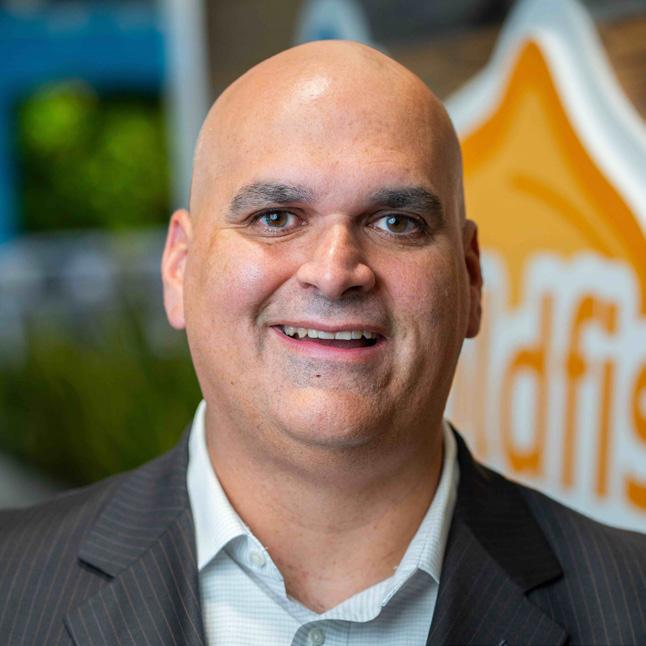
DENNIS LESKOWSKI Chief Technology Officer Goldfish Swim School

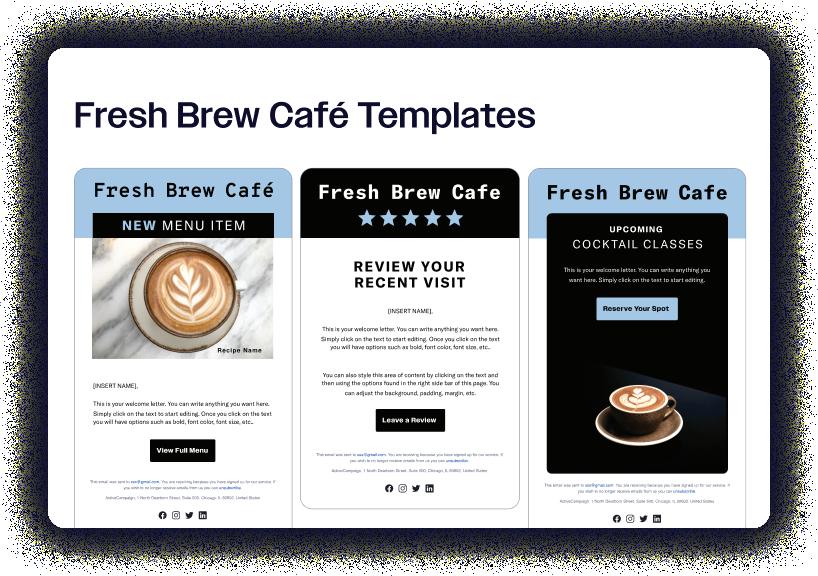

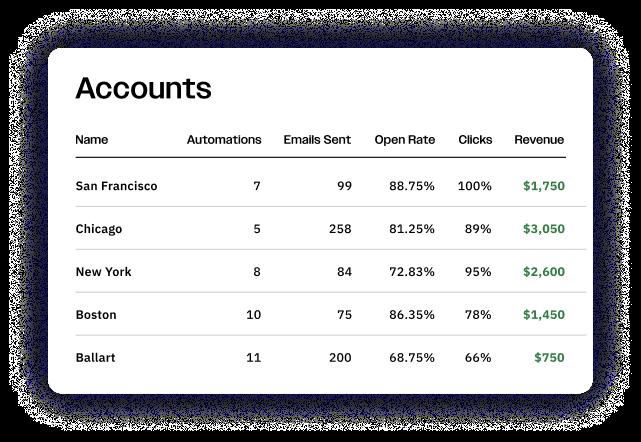
Say goodbye to fragmented franchise marketing. Run on-brand email and SMS campaigns across all your locations, with total control from one dashboard. All while giving each franchisee their own local, personalized voice.
The #1 marketing automation platform for f ranchises
• Send localized campaigns at scale
• Easily connect hundreds of accounts
• Consolidate your revenue reporting
• Sync templates across every account
• Implement three-tier testing

“The formal term would be metadata tags,” he says. “If you just threw out a bunch of data, a bunch of numbers, and it doesn’t know, ‘Oh, that’s revenue. Oh, that’s enrollment. Oh, that’s my workforce employee,’ then it’s just a bunch of worthless numbers.”
The second prerequisite is to apply the software development life cycle to AI. This means understanding the entire process from idea inception through development and testing to deployment and ongoing refinement. “AI is not a switch where it’s turned on and turned off,” he says.
He compared working with AI to walking into a gold mine without a bucket. AI’s potential is exponentially larger than anyone’s ability to fully exploit it. He and his team prioritize projects, develop them, and test them.
With access to data from a quarter million swimmers, AI can help identify patterns and trends that humans might miss, assisting the curriculum team in refining the lesson experience. AI can also analyze seasonal sales data, allowing the company to focus on precise areas for improvement. “Instead of taking a sledgehammer and trying to fix everything, it’s using a scalpel,” he says.
Goldfish Swim School has chatbots and other AI features under development. Leskowski says patience is key; there’s no reason to rush deployment. If someone asks for the hours of operation and the AI responds with “hamburger,” it wouldn’t reflect well on Goldfish Swim School.
“Do you remember when those voicemail prompts came out like 20 years ago?” he says. “And everyone’s getting caught in a loop of press one for this, press two for that. Everyone started pressing zero because they just wanted to talk to a live person.”
Since Goldfish Swim School deals with children’s data, privacy is paramount. While aggregated data for trend analysis poses little risk, using AI for personalized communication requires careful consideration.
“I can envision a world in which an AI chatbot is interacting with a person, and we know things about them—who they are, where they live, which children they are—because we need to know the ages of their children,” he says. “But I’m hesitant to apply AI to that simply because we’re talking about a children’s service industry.”
Ultimately, AI can handle numerous mundane tasks, but important decisions, including
how to protect customer data, should be made by people. “What can’t be handled by AI is what we call the ‘everyday golden experience,’ our edge, as well as the swim lessons themselves,” he says. “We joke that we’ll never have robot swimmers helping kids in the water.”
Bojangles, which specializes in chicken and biscuits, has an AI taking drive-thru orders at more than 150 of its restaurants. “Bo-Linda” is a conversational, cloud-based AI platform, and it can take guest orders more than 96% of the time without help from human staff members, according to Richard Del Valle, chief information officer.
“I wouldn’t be surprised if, by the end of the year, we were in the mid-200s in terms of deployment, maybe even higher,” he says.
When Del Valle joined the company, Bo-Linda was on the back burner, but it had been in listening mode, recording transactions, learning how people order, and connecting words to actions. “We kicked Bo-Linda into high gear,” Del Valle says. “We recognized very quickly that it was something that needed to be prioritized for us.”
The AI had plenty of learning to do before it was ready for the public. For Bo-Linda to function, the Bojangles team and the vendor had to make sure all menu items, including multiple variations, had a corresponding number that the AI could recognize. Those numbers have to be consistent across the network, or it won’t work.
“Occasionally, we’ll get a guest who wants a hollowed-out biscuit. They want their sandwich, but they don’t want all the fluffiness of the biscuit in the middle. They really just want the outer shell, right?” he says. “Well, for 30 years, we handled that by typing a message into the POS called ‘hollow biscuit.’ But when you launch a product like Bo-Linda, you can’t do that because Bo-Linda needs a menu item to reference.”
It was a difficult, detail-oriented job to provide the information for Bo-Linda, but now, all the company and franchise restaurants use the same item numbers for each product, which made the rollout possible.
Bojangles also uses AI to improve its food forecasting and labor scheduling. An AI engine can analyze sales data from previous years to predict how much food will be needed on a given day. This helps prevent running out of popular items or having too much waste.
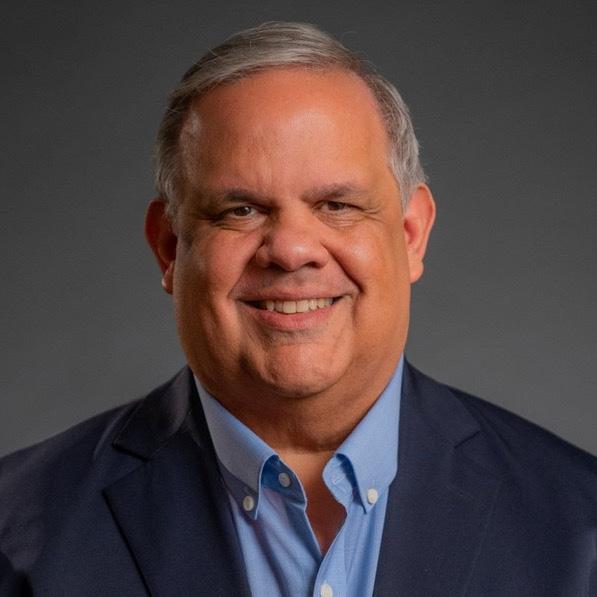
RICHARD DEL VALLE
Chief Information Officer Bojangles
“It’s like, ‘Hey, Mr. General Manager, here’s your food order based on your sales forecast and what you have on hand. Here’s what you need,’” Del Valle says. “The manager can focus on other things.”
The AI engine can also create labor schedules. By considering sales data and employee skill sets, the AI can suggest a schedule that will ensure that there are enough staff members on hand to meet customer demand.
“These are very powerful tools. We like them because they improve the quality of life of our managers, and they improve the guest experience,” Del Valle says. “If I can get the right people on shift at the right time to deliver great service, the guest is going to get great service.”
AI is there to augment humans, not replace them. “These tools provide guidance and suggestions. We tell our managers all the time that the most important AI engine we have is the one between their two ears,” Del Valle says. “The tool doesn’t know everything. It might not know that you have a parade scheduled for next week. Or it might not know that you had a parade last week.”
It was decided that Bo-Linda shouldn’t sound human so that customers wouldn’t think they were getting fooled. Even so, Del Valle says Bojangles’ employees often think of Bo-Linda as a member of the team.
“As human beings, we create this relationship,” he says. “Nobody knows this technology better than I do, and I thank Bo-Linda all the time, and then I think to myself, ‘Why did you just do that?’”
As AI becomes more integrated into our daily lives, understanding its strengths and limitations is crucial. AI requires a certain finesse to be used effectively. The ability to ask the right questions and to interpret its responses is more of an art than a science. For AI to function correctly, it needs human beings and their experiences, says Mike Chadwick, executive vice president of growth with Ironside, a data science and management company that helps businesses get started with AI.
“The human brain is absolutely freaking amazing, and the number of data points your brain takes in, processes, and understands what to use and what not to use is unbelievable,” Chadwick says. “AI still is way behind. It can take amazing amounts of data, but it doesn’t always understand the nuance of the context and what to ignore and what’s important.”
An easy introduction to working with AI is to ask it to write a business email. It’s great at producing a first draft, but don’t click “send” yet. Chadwick recently received an email from a client. The email included a note from the AI that advised the sender to edit the email before sending it. “You always have to edit,” Chadwick says. “You have to add your special sauce to it and your insights.”
While AI can handle structured tasks within a defined set of rules, it falters when faced with the unexpected. For example, ordering a custom item at a fast-food restaurant could be a straightforward task for a human but might confound an AI.

“It needs to be kept targeted and specific,” Chadwick says. “If you’re in a certain game board—that’s a metaphor, right?—there are rules and boundaries around what this is going to do. AI will be phenomenal. The more that board game grows and the more complicated multiple factors become, the more it’s going to struggle because there’s going to be more ambiguity in the answer, and AI doesn’t like ambiguity.”
Humans provide context and make decisions based on a variety of factors. AI, on the other hand, can process vast amounts of data but often misses the subtle cues and contextual nuances that guide human decision-making.
“The data will come from literally almost an infinite number of sources, and some of those social sources will be so minuscule in their effect that you can ignore them,” Chadwick says. “AI can’t really ignore anything. It has to go through all the permutations, and it doesn’t always know which one of those is more important at a given moment.”
As AI continues to evolve, the key will be finding a balance between leveraging its computational power and retaining the human touch that provides context and nuance, Chadwick says. A decision to expand a business might have 1,000 data points in its favor and only one data point against it, so an AI might say, “Go for it.” But what if the plan is to expand operations to Israel on the day after Oct. 7, 2023?
Chadwick says AI should be treated as a tool, and human operators and/or team members should follow time-honored advice: “Trust but verify.” The art of asking the right questions and interpreting AI’s responses is where the true power lies, ensuring that technology serves as an effective partner rather than a potentially flawed replacement.
“Getting all that free-form data and an answer to those things is just unbelievable power for someone who has knowledge and understands the key factors in play,” Chadwick says. “The human being is bringing the context to the conversation. They’re able to make gut-feel decisions based on their experience.”
If you’re planning to introduce, or continue introducing, artificial intelligence to your organization, here are some tips:
• START SMALL. Introduce AI tools that are accessible and easy to use, allowing individuals to explore their potential.
• ENCOURAGE DISCUSSION. Give employees ways to bounce ideas off each other and share what they learn.
• FORMALIZE WITHIN THE ORGANIZATION. Develop a structured approach with small budgets initially and expand as the organization becomes more comfortable with AI.
• STANDARDIZE UTILITIES. Avoid using multiple similar tools and streamline processes with standardized utilities.
• OFFER COMPREHENSIVE TRAINING: Ensure employees receive thorough training and support to maximize the benefits of AI tools.
• FIND DEPARTMENTAL CHAMPIONS. Appoint AI champions within each department to lead initiatives and facilitate learning.
• DO REGULAR FOLLOW-UPS. Conduct 30 and 60-day checks to evaluate progress, address challenges, and ensure continuous improvement.
MIKE CHADWICK Executive Vice President of Growth Ironside


Imagine a future where a frandev tech stack combines analytics with paid ads data, CRM metrics, AI-driven lead quali er stats, and even the latest territory checking software to provide the most comprehensive sales funnel experience ever built...



Written by MATTHEW HALLER
Even in a country divided politically, one thing can unite us all: The state of franchising remains strong. The growth of our model continues to outperform the broader economy, creating upward mobility and countless opportunities for individuals, families, and communities.
At the International Franchise Association (IFA), we have been working in overdrive to protect, enhance, and promote franchising.
The road hasn’t been easy. Working alongside our partners and members, we have slayed a “three-headed monster” of policy threats. These efforts have created a better environment for our franchise community, which will always remain our North Star.
First, there was the threat of joint employer. The National Labor Relations Board (NLRB) made clear it intended to replace the workable 2020 joint employer standard with the previous administration’s version—the one that cost franchises $33.3 billion per year, eliminated hundreds of thousands of jobs, and increased lawsuits by 93%.
When the joint employer proposal arrived, we hit back with a comprehensive two-track plan. First, mobilizing our members and congressional champions, we helped push a repeal effort—known as a Congressional Review Act—which passed both chambers of Congress in bipartisan fashion.
When President Joe Biden issued a misguided veto, the second track of our strategy bore fruit: A federal judge in the Eastern District of Texas struck down the expanded joint employer, citing the NLRB’s overreach and the economic consequences the rule would bring. But that’s no longer a concern. In July, the NLRB withdrew its appeal of the ruling. The appropriate 2020 joint employer rule remains the law of the land, and that’s a positive for franchising.
The second head of the monster was California’s Fast Food Recovery Act (AB 257), one of the most detrimental bills franchising has ever faced, singling out the state’s thriving quick-service restaurant sector and paving the way for sectoral bargaining.
Despite the Golden State’s unfriendly business climate, we helped mitigate the most problematic components of the legislation, most notably removing the joint-employer provision (AB 1228). The power of the unelected fast-food council was watered down, and the minimum wage was reduced from $24 to $20.
While the damage could have been worse, the implementation has been harmful. During the first two months of the $20 wage hike, at least 10,000 jobs were lost.
Finally, there is the Federal Trade Commission (FTC), which, under the leadership of Chairwoman Lina Khan, has aggressively targeted a slew of companies and industries. In March 2023, the FTC opened a Request for Information (RFI) on franchise agreements and franchisor business practices. By the nature of the questioning, it was clear that the effort was designed to elicit negative responses toward franchising.
To proactively address the FTC’s concerns and offer a constructive path forward, IFA assembled working groups of franchisors, franchisees, and suppliers along with attorneys, consultants, and third-party franchise sellers. The groups focused on improvements to the presale process. Over the course of a year, we developed a series of commonsense policy recommendations to strengthen the business model.
The guiding principle of these recommendations is providing a prospective franchisee with key information necessary to conduct due diligence aligned with the significance of their investment before making a franchise purchasing decision.
Those who attended our 2024 Legal Symposium in Washington heard about our Responsible Franchising principles and how these new recommendations are critical components of that effort. They are a concrete example of staying on offense to proactively tell our story and set our policy goals on our terms rather than let our opponents define the rules of the game.
As U.S. Rep. Kevin Hern, R-Okla., co-chair of the Franchise Caucus and keynote speaker at our Legal Symposium, wrote in a recent op-ed for The Hill, “Policy recommendations put forward by the International Franchise Association, the official trade organization for franchises, offer commonsense improvements to the presale negotiations between a franchisor and prospective franchisee—all to help the franchisee understand exactly what they’re investing in.”
The future of potential FTC changes hangs in the balance of the November election, but whatever happens, we will continue advocating for Responsible Franchising because it is imperative to the future of the business model.
After all, the threat level remains high. Rest assured that we will stay proactive and vigilant against the Department of Labor’s overtime rule and its new independent contractor standard as well as continued threats on the state level brought forward by our opponents. We will also keep telling your stories to the world. Doing so will create a better environment for your businesses to thrive, which is our job and top priority.
There is no better time to do this than in Washington, D.C., this September at the IFA Advocacy Summit. Join us—just months before this year’s pivotal election—to make sure lawmakers hear directly from you before making changes that can define the way you do business.
Franchising is the ultimate American business model, and we need to ensure it stays that way.
Matthew Haller is president and CEO of the International Franchise Association.


Profitability begins with a clear, compelling “why”
Written by JAYSON PEARL
One of the most surprising insights from our three years of research and the launch of the Franchise Customer Experience Certification is the impact of a brand’s culture in driving franchise success. Initially, we believed that our certification would focus on how effective a brand acts on consumer and franchisee feedback. However, our work with top franchise brands showed us that the companies most effective at driving franchisee profitability lead with their “why,” the core purpose of the brand and the vision for consumers and franchisees.
The following are 12 examples of how brands set their cultures from the start and create the through line to the bottom line for franchisees.
Robust culture
Studies show a strong link between high customer satisfaction and robust cultures. Each franchise’s culture must align with the overall brand culture to ensure brand integrity and significantly contribute to profitability.
For example, Fastsigns, a part of Propelled Brands, emphasizes its mission. Franchisees noted the mission’s consistency and how it has expanded to include the “Five Key Characteristics of a Successful Person,” championed by CEO Catherine Monson.
At Any Lab Test Now, the leadership team focuses on aligning franchisee candidates with the culture, emphasizing their purpose statement and core values on discovery day.
Before diving into selling, marketing, or operations, a franchise company must define The Brand Way. This concept involves operationalizing the methods by which the team will consistently conduct business with consumers and franchisees based on the brand’s mission, purpose, and core values. It entails defining proven processes, training the team, and using tools and technology to ensure consistency.
QC Kinetix has developed a university platform with specialized processes for every
position and mandatory training. The company deploys territory managers to visit each location at least twice a year for support and to ensure brand consistency.
Massage Heights created a guest experience handbook that has become the heart of consumer service. It’s backed by robust testing for team member skills that are assessed by franchise business consultants.
My Salon Suite sets culture expectations and ensures a great brand experience based on core values by communicating processes for prospective tenants in its Reserve a Suite portal, including an online resource with virtual tours and live tour scheduling.
Once a brand has established its vision and culture, it’s time to serve consumers. The most effective way to serve customers is to ask for feedback, learn from it, and apply it.
Homewatch CareGivers franchisees use multiple technology platforms for social listening, review monitoring, and conducting client satisfaction surveys. The company provides franchisees with access to online reviews from across the system.
Chicken Salad Chick breaks down its overall guest experience into specific elements and gathers consumer feedback to assess how those elements drive overall satisfaction and likelihood to return.
If a franchisee feels disengaged, unsupported, or operationally challenged, it’s unlikely they’ll deliver a great consumer experience or recommend the franchise brand to others. Helping franchisees succeed from day one starts with effective business consulting, seeking and acting on feedback, and providing opportunities for franchisees to benchmark and support each other.
Christian Brothers Automotive’s home office sets annual department goals largely based on feedback from an annual franchisee satisfaction survey conducted by Franchise Business
Review. It’s driven by Christian Brothers’ mission: “Love Your Neighbor as Yourself.”
Wild Birds Unlimited builds a culture of continuous improvement by requesting and acting on feedback, including annual surveys by Franchise Business Review, internal surveys, and seeking input before franchise advisory council meetings.
It’s been said that the ultimate strength of a franchise brand is the unit economics. Research demonstrates how a great customer experience impacts revenue and profit growth, but a brand must show a franchisee how that occurs within its system. Providing franchisees with the data and practices that chart The Profit Path from customer experience builds credibility, adoption, and consistency with franchisees and their teams.
At PuroClean, franchisees are celebrated at a ceremony at their annual convention with awards based on growth but tied to consumer experience and engagement with the brand.
Batteries Plus has created a business intelligence suite with predictive customer experience modeling to link value outcomes, like revenue growth and loyalty, with customer experience metrics.
NerdsToGo has established a standard chart of accounts in its financial software to create consistent profit and loss statements, enabling dedicated business strategy consultants to support franchisees in achieving their annual plans.
The journey to franchisee profitability begins with a clear and compelling “why.” By focusing on a robust mission or purpose statement, franchisors can cultivate a strong, cohesive culture that prioritizes both franchisee and consumer experiences. Embracing this approach and implementing the practices recognized in the Franchise Customer Experience Certification can create a thriving franchise network that delivers exceptional value, drives improved profitability and builds a legacy of commitment to purpose.
Jayson Pearl, founder of the Franchise Customer Experience Institute and ServiceScore, works with leading brands to drive better results through improved consumer and franchisee experiences. Contact him at jayson@servicescore.net.
Vendasta’s technology allows you to curate brand-approved digital marketing and operations solutions for your franchisees in one convenient platform. By streamlining vendor relationships and bringing franchisee data into one place, you’ll gain incredible efficiency and powerful new data-driven insights that ensure comprehensive improvement across your entire network.





From AI-powered reputation, listings, and social media management to SEO and Digital Advertising at a national and local level, our platform brings vendor relationships under one umbrella at the franchisor level. Helping you position franchisees for stellar marketing performance in their local marketing.
Access tailored marketing metrics for franchisors and franchisees. Optimize local and national marketing, track individual location data, and assess franchise performance seamlessly in one dashboard. By leveraging our unique insights, you can utilize that data to enhance marketing efforts across franchisee units and improve franchisee satisfaction with their technology.
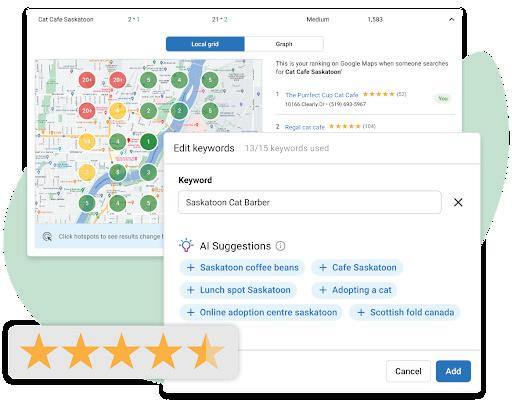


Help your franchisees easily turn leads into loyal repeat customers with their own all-in-one customer experience platform. Reduce the login clutter by giving them one place for their daily essentials like messaging, social media, reporting, CRM and so much more.
Our mission is to empower franchises with the tools they need to thrive in the digital landscape. Book a meeting with any member of our team to delve into innovative strategies and unlock pathways to accelerated growth for your franchise endeavors.
Meet Our Vendasta Franchise & Multi Location Team


June 17 – 20, 2024 • Atlanta, GA
Leaders examine the many facets of customer experience
Written by Kerry Pipes
Artificial intelligence (AI) took center stage at this year’s Franchise Customer Experience Conference (FCXC) in Atlanta. In sessions and during hallway conversations, attendees discussed the rapid development of AI and its potential applications in consumer marketing, including franchisee benchmarking, training, and recruitment.
Franchise Update Media and the International Franchise Association invited franchise executives to examine the many facets of the customer experience. Held at the InterContinental Buckhead hotel in June, the annual FCXC gathering covered a wide range of topics, such as operations, technology, branding, and consumer marketing. Top minds in franchise marketing were on hand to share their expertise while also picking up ideas for their own brands.
Three Summits helped to kick off the event. The CEO Summit and CMO/COO Summit were joined by the new CTO Summit. In addition, the conference featured key findings from the Annual Franchise Marketing Report (AFMR), and the winners of the 2024 Franchise Innovation Awards were announced. Attendees also had plenty of time to connect, learn, and potentially strike new deals.
Keynote speakers, general sessions, breakout sessions, and a sold-out Sponsor Networking Area were made possible thanks to sponsors like AnswerConnect and Baesman Group. Both were Platinum Sponsors for this year’s event.
Day one kicked off with three concurrent summits. The CEO Summit, “AI Deployment Insights,” offered franchise leaders real-life examples of AI integration into existing business


functions. The goal was to provide attendees with practical strategies on how to use AI to improve their customer experience, drive growth, and stay ahead of the curve on AI trends in franchising.
Clarissa Bradstock, conference chair and CEO of Any Lab Test Now, moderated high-powered discussions of how franchise brands are using AI. She offered several examples of how her company is evaluating the pros and cons of several AI-based tools.
The first of two roundtables saw participants discussing their own use cases, such as using AI for email responses, call centers, content and image generation, digital marketing, and training. Participants examined the risks and challenges of implementing AI, including high costs, the rapid pace of change in the technology, staff and franchisee adoption, and protecting intellectual property. “AI is like a 7-yearold,” noted one attendee.
The CMO/COO Summit dealt with ways these two departments could merge operational efficiencies with innovative marketing strategies to create new opportunities for brand growth. The session examined ways to enhance brand consistency system wide, refine local marketing efforts, and leverage technology and data integration to help make better decisions for the brand and franchisees.
The session was moderated by Sunny Ashman, a consultant with Experiential Brands. It featured Kelly Crompvoets, VP, marketing for Any Lab Text Now; Brenda Elpers, SVP, operations for Chick N Max; Russell Hoff, COO, for Massage Heights; and Rob Elliot, EVP, marketing for Hungry Howie’s.
“We don’t want to be siloed,” Elliot said. “We want to be one united team. That’s what we try to do.”
Nearby, the new kid on the block, “CTO Summit: Tech Stack Readiness,” focused on how technology can help streamline operations, improve franchisor-franchisee communication, and enhance franchisee performance. The workshop, led by Greg Cory, CEO of CTO Nation, tackled ways to improve a franchise’s tech stack, digging into topics such as identifying gaps in existing systems, adopting new budget-friendly technology options, and ensuring those technologies align with overall goals.
The session offered expert-led discussions that provided insights on evaluating and integrating existing systems to determine what new, scalable solutions are needed to support franchise operations. Participants explored methods to ensure that technology deployments align with broad organizational goals. Panelists included Goldfish Swim School CTO Dennis Leskowski, Floor Coverings International CIO Ryan Aschauer, and Daddy’s Chicken Shack/Port of Subs President and CTO Tony Adams.
Every FCXC event is laser-focused on addressing the key issues facing franchise marketing executives today. It’s designed to be educational and interactive. Whether it was a workshop on mapping the customer experience journey, a business solution roundtable, or impromptu hallway conversations, FCXC provided attendees with plenty of information to take back to their home offices.
“We are here to explore the transformative power of the consumer experience and learn how to reimagine traditional marketing,” Franchise Update Media’s CEO Therese Thilgen said in her opening address.
Conference Chair Bradstock then took the stage: “The key thing about this conference is the people you meet here. We all step up our game by getting to know people here.”
Next up was keynote speaker and futurist Mike Walsh, a best-selling author and CEO of Tomorrow, a global innovation consultancy. He talked about what it will mean to live in an AI world for customers and workers.
“AI will make every company a technology company,” he said as he tossed out what he called “mind grenades” of thoughts and observations. “Does AI have us at the dawn of a new industrial revolution?”
He encouraged attendees to find ways to use AI to make themselves better leaders and create value for their companies.
The general session continued with a short “Fireside Chat on Responsible Franchising,” followed by a general session panel called

“Cross-Functional Approach to CX.” This panel featured Scott Taylor, CEO of Cherry Bounce Hospitality; Liz McCurtain, VP, operations at Papa Johns Mike Rotondo, CEO of Altitude Trampoline Park; and Larisa Walega, CGO of Ziebart International Corporation. The discussion covered how brands can seamlessly collaborate with different departments and franchisees. The panelists considered how technology tools, training, and a dedicated corporate team can advance the customer experience at all levels.
Next, FRANdata President Darrell Johnson presented his economic report. He said the economic outlook is a mixed bag. Consumers are worried about inflation, and even though wages are rising, interest rates remain high. He noted that household debt is on the rise along with delinquencies.
He said Gen Z is poised to become the dominant spending force in the next decade. Unlike previous generations, they rely more on social media than search engines to discover brands. “This shift in consumer behavior necessitates a reevaluation of marketing strategies,” he said.

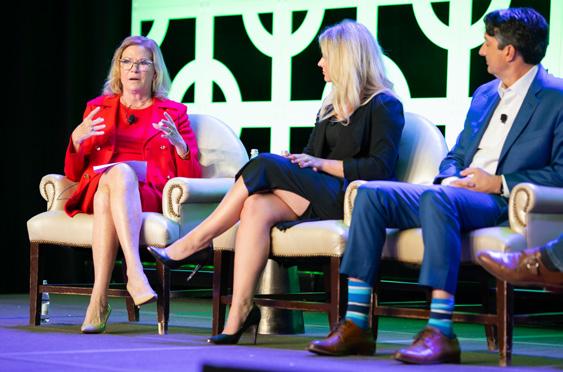

On the topic of AI, Johnson said the technology is changing operations in areas such as training, franchisee support, predictive analytics, and customer feedback management. “Marketing is changing in the face of AI,” he said, but advised listeners to “be careful what you’re looking at and interpreting.”
The first full day of the conference concluded with two hours in the Sponsor Networking Area, allowing attendees one-on-one access to vendors, suppliers, networking, and of course, refreshments.
Day two of the event began with a general session and case study of Batteries Plus. A panel from the brand highlighted efforts to create solutions for franchisees and their customers. They gave examples of how they developed relationships and supported franchisees trying to land commercial business. The goal, the panelists said, was making sure there was a customer-centric culture backed by consistency. Sam Ballas, CEO, president, and founder of East Coast Wings + Grill, moderated the session that included Batteries Plus executives Joe Malmuth, Derek Detenber,
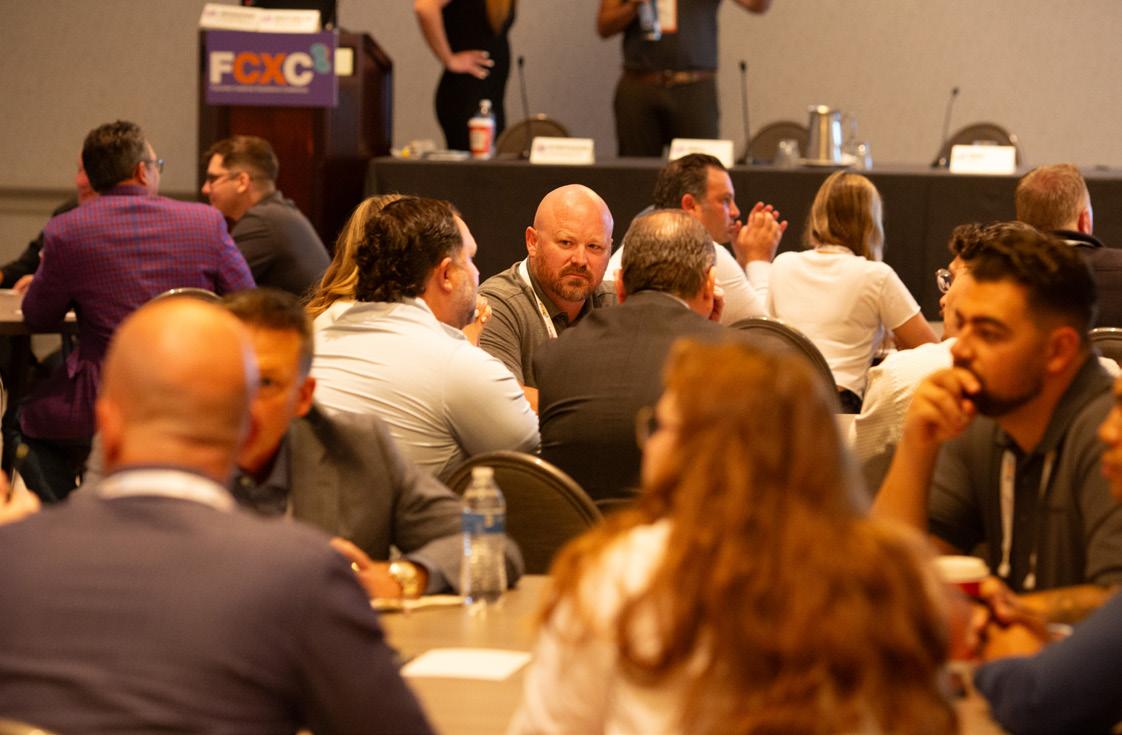

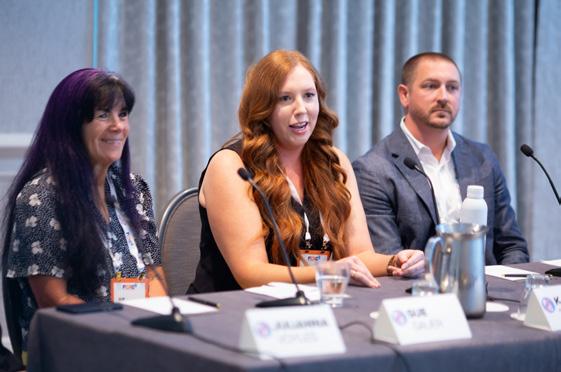
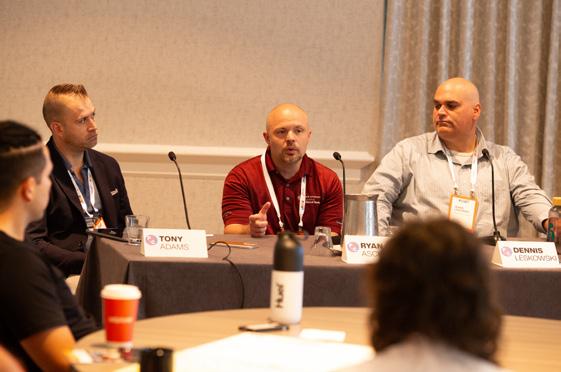
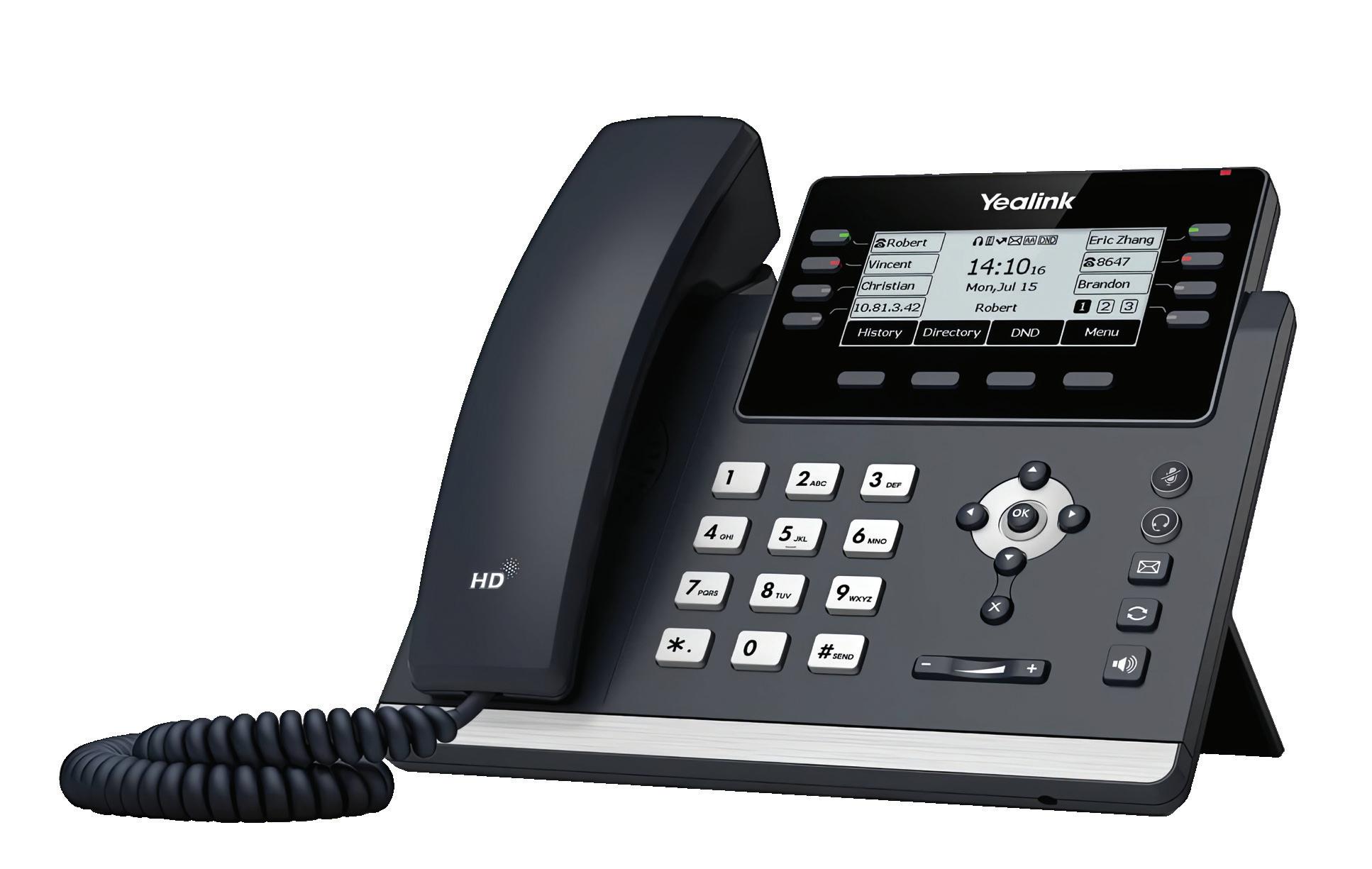

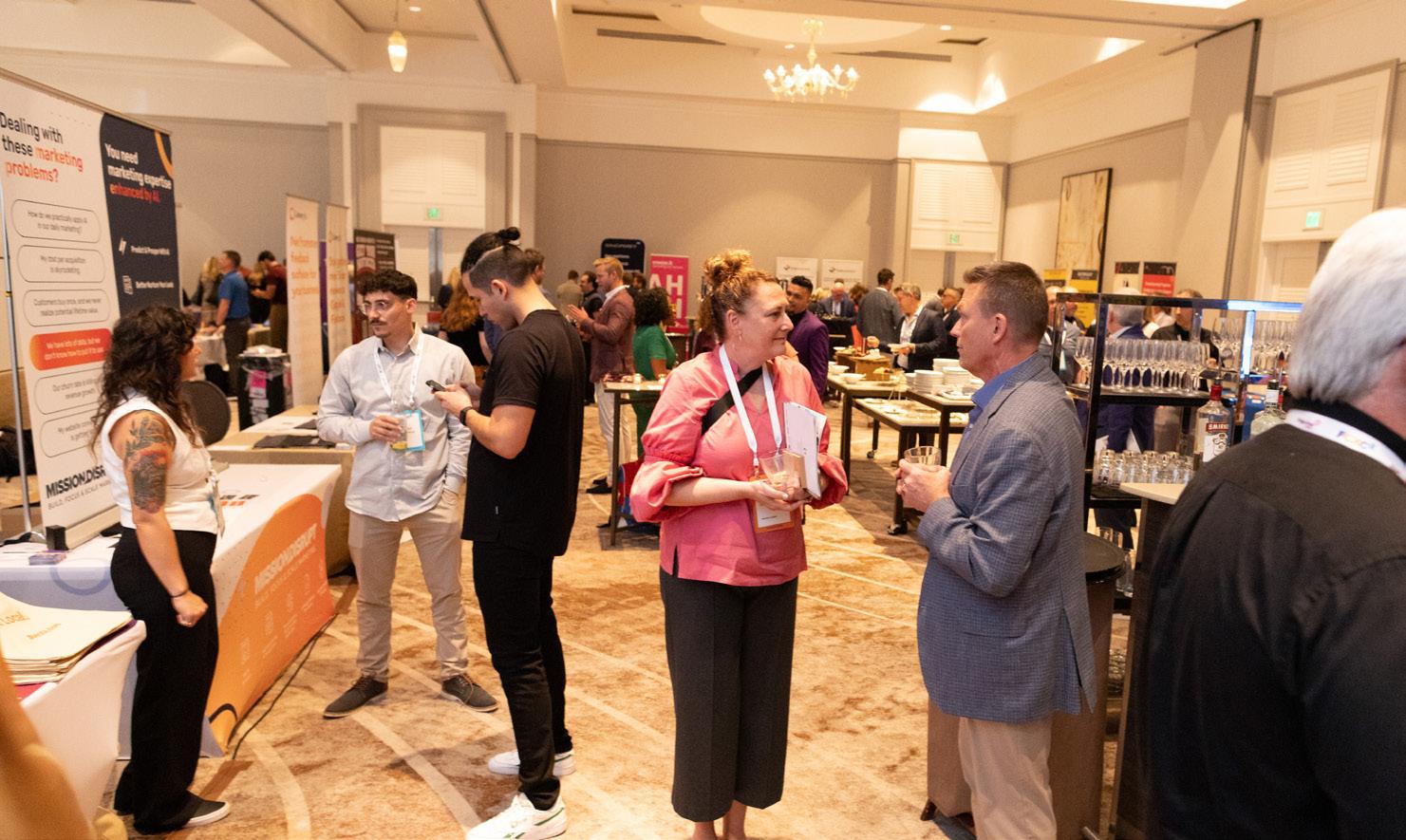
Kranthi Malreddy, Jason Moss, and Jon Sica and franchisee Alyson Watson.
The Innovation Awards overall winners for Marketing and Operations & Technology Innovator of the Year awards were recognized for excellence in franchising. Finalists from each of the two categories presented their innovative ideas, strategies to execute them, and the successful results of their initiatives. This year, four finalists in each category vied for the top overall awards.
Franchise Update Media’s EVP & Chief Content Officer Diane Phibbs unveiled key takeaways from the 2024 Annual Franchise Marketing Report (AFMR). This proprietary, in-depth survey conducted by Franchise Update Media measured the marketing practices and strategies of dozens of franchise brands. You can find a more comprehensive analysis of the report’s findings on page 56.
One more general session panel, “Monetizing the Customer Experience Across Discipline–How to Build a CX Program That Drives Top and Bottom-Line Revenue,” was led by Barbara Moran-Goodrich, president and CEO of Moran Family of Brands. The panel included Ryan Farris, COO of AlphaGraphics; Kristen Pechacek, president and CEO of MassageLuXe; and Scott Snyder, CEO of Royal Aloha Franchise Company (Bad Ass Coffee of Hawaii).
The afternoon then featured several breakout sessions, including “Using Data To Create Personalized Marketing Experiences,” “Maintaining Consistent Customer Experiences Across the System,” and “What To Do with a Botched Tech Rollout.” Other afternoon sessions included “Marketing Programs That Maximize
Spend, Execution & Results,” “Using AI To Improve Execution and Customer Experience,” and “Utilizing Customer Feedback & Data to Improve Customer Experience.”
New to the FCXC this year was a fully interactive session called “Meet Your Match with Supplier Sponsors.” Conference sponsors got the chance to make two-minute business pitches with franchisors before each brand executive rotated to another sponsor spot. The rapid-fire pitches gave franchise executives opportunities to learn about products and services, identify potential partners, and collect information to share with their brands. The room buzzed for two back-to-back sessions, and both sponsors and franchisors responded positively.
The Franchise Innovation Awards Ceremony closed out the day with an open bar and heavy hors d’oeuvres.
The reviews are in FCXC attendees seemed pleased with their investment to attend the conference.
Madeleine Zook, CMO of Premium Service Brands, said, “I love coming because you get a lot of great minds in one place talking about what’s working and what’s not working. And we can also talk about what we can build in this industry that’s better. That’s different than a lot of other conferences. This conference has brainstorming, sharing, and benchmarking. We get not just good ideas, but actionable plans from this conference.”
Amanda Maquet, VP of marketing of Moran Family of Brands, said, “This conference provides access to a great wealth of knowledge from both speakers and peers. I love hearing what’s working, seeing the
transparency and communication that takes place at this conference, and having an open line of communication that gives you great ideas to apply in your franchise system.”
Rob Elliot, EVP of marketing at Hungry Howie’s, added, “I love the hallway conversations. I love talking to my peers and finding out what they are doing to maximize their advertising presence and investment.”
Next year’s FCXC will be June 24–26 at the InterContinental Buckhead in Atlanta. You can find out more about the event on franchising.com.










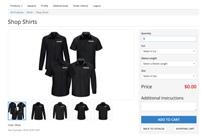











Tropical Smoothie Cafe
Budget Blinds
KFC
Blaze Pizza
Mooyah Burgers, Fries & Shakes
Primrose Schools
Smalls Sliders
Tropical Smoothie Cafe
PRODUCTS & SERVICES
Hungry Howie’s Pizza
Homewatch CareGivers
Camp Bow Wow
Goldfish Swim School
AlphaGraphics
This year marked the 6th Annual Franchise Innovation Awards. Once again, there were more than 100 entrants in four main categories and 22 subcategories. The best of the best innovators, game changers, and disruptors competed in four categories: Marketing & Branding, Operations & Technology, Products & Services, and Human Resources. The winners of a new category, Franchise Development, will be released in October at the Franchise Leadership Development Conference in Atlanta.
A panel of judges evaluated each entry based on a brand’s stated objective, the problem or improvement targeted, and the metrics they provided about the results. Complete coverage of the Innovation Awards and the Overall Winners for Marketing and Operations & Technology starts on page 38.
Here are this year’s winners by category:
OPERATIONS & TECHNOLOGY
Little Caesars Pizza
Homewatch CareGivers
Cousins Maine Lobster
Goldfish Swim School
Batteries Plus
Best Big Budget Campaign
Best Digital Campaign
Local Marketing Leadership
Best Limited Budget Campaign (under $1 million)
Best Loyalty App
Best PR Campaign
Best Social Media Campaign
Cause Marketing Champion
Most Innovative Product Introduction
Most Innovative Service Introduction
Most Innovative Use of Customer-Facing Digital Tools
Most Innovative Use of Data
Most Innovative Use of Technology: Services
Most Innovative Building Design, Remodel, or Prototype
Most Innovative Franchisee Support
Most Innovative Operations Team
Most Innovative Use of Data
Most Innovative Use of Technology
Generator Supercenter Franchising Most Innovative Employee Hiring
Generator Supercenter Franchising Most Innovative Employee Recruiting
BrightStar Care
Altitude Trampoline Park
Most Innovative Employee Retention
Most Innovative Employee Training




























Written by KEVIN BEHAN
This year’s Franchise Update Media Franchise Innovation Award winners were franchise brands that used technological innovations and strategies to engage customers, cut costs, and save time.
More than 150 brands—large, small, legacy, and emerging—competed, and two were recognized as “Best of the Best” overall winners: Tropical Smoothie Cafe won the Franchise Marketing Leadership Award, and Homewatch CareGivers took home the Operations & Technology Leadership Award.
This category asked brands what innovative solutions they employed to grow consumer awareness, engagement, and loyalty. This includes traditional advertising, PR campaigns, social media, rewards programs, new product launches, and local store marketing campaigns.
Systems and processes, along with replicability and scalability, are essential for franchising success. And who could do all that without advanced technology? Judges reviewed the most forward-thinking operations teams and how they improved and streamlined their processes and practices through innovation.
A panel of expert judges evaluated each entry’s objective, the problem it solved, and the innovations required to achieve the stated goals. Winners in each of the four major categories and 22 subcategories are highlighted on the following pages. Winners of a new category, Franchise Development, will be announced at the Franchise Leadership and Development Conference in October.
To meet the needs of today’s consumers, franchise systems must evolve their products, services, and delivery options to serve customer needs. For many entrants, technology played a huge role in adapting to how customers ordered, paid for, and received their products or services in the past year.
Growing a great brand requires the best people at every level. This category examined how brands employed unique, innovative strategies and tactics to attract, hire, train, and retain the employees who best suited their vision and culture.
OBJECTIVE: Tropical Smoothie Cafe sought to evolve and modernize its menu with the launch of the new Tropic Bowl menu category. It wanted to capitalize on the growing popularity of bowls with a new line of products that fit perfectly with the brand’s better-for-you offering of smoothies, wraps, and flatbreads. The brand also sought to use this opportunity to achieve the secondary objective of creatively refreshing the “You’re on Tropic Time Now” campaign, which has been running successfully since 2020.
OVERVIEW: Through social listening, Tropical Smoothie identified a “treat yourself” theme and created the “Tropic Time Concierge”campaign. It featured a concierge character, played by Chloe Fineman from “Saturday Night Live,” who walks the viewer through the “Tropic Time” experience at a fictional tropical resort. She introduces the new line of bowls, calling them “five-star luxury,” and then closes with a warm and playful message of “You’re on Tropic Time Now.”
RESULTS: Two months after the campaign started, the average cafe sold almost three times the volume of Tropic Bowls compared to what was sold during the product testing stages. The Acai Bowl was the leading seller and had the highest sales of any item on the Tropical Smoothie Cafe menu. The attention generated by this new line of bowls impacted the business more broadly as the number of total entrees and smoothies per check increased by 4.3% in the first several months after the launch of the campaign.
OBJECTIVE: Budget Blinds sought a creative campaign that reflected a recent shift to authentic content that focused on consumer preferences, real experiences, and genuine connections with customers.
OVERVIEW: Budget Blinds shot TikTok-style videos centered around real customer experiences that felt genuine and relatable. The use of a selfie-style point of view created a personal connection with the audience and combined TikTok’s appeal with strategic storytelling and viewer engagement potential. The shaky camera in the introduction drew viewers in from the start, and an exciting hook ensured that viewers were captivated and motivated to continue watching. The resources for the videos were also minimized due to the nature of TikTok-style creative, which necessitated only an iPhone without the need for professional lighting. All assets were efficiently captured within a four-hour time frame.
RESULTS: The campaign was one of Budget Blinds’ highest-performing creatives and also drove tangible results. The company initially reported 25,000 leads across TikTok and Meta platforms and an estimated $7,166,756 in revenue for the network. The campaign showcased to their franchisees the power of adapting to evolving consumer preferences and leveraging limited resources creatively. It boosted brand visibility and translated into increased business opportunities and growth for franchisees.
OBJECTIVE: KFC tasked Adgile Media Group with promoting the brand’s $20 Fill Up Box and driving foot traffic to all brick-and-mortar locations across the Atlanta designated marketing area.
OVERVIEW: Adgile analyzed delivery vehicles to identify those that consistently travel in close proximity to KFC locations across Atlanta. Ten vehicles were identified and wrapped with KFC creative, making them mobile billboards as they traveled their usual business routes. These vehicles mainly delivered food and beverages to restaurants and grocery stores in the market. They were not supplying to KFC locations, but the audience did not know that. The audience in Atlanta saw many KFC vehicles and assumed that the $20 Fill Up Box was the hot new item being delivered to, and consumed by, their neighbors. They did not know it was a paid ad, and the visual encouraged them to visit KFC locations and try the promoted product.
RESULTS: This campaign drove 104,000 customers into Atlanta KFC locations. That was an 88% increase when compared to a control group who were not exposed to the advertisement.
OBJECTIVE: The goal was to generate 8–10% incremental sales from existing loyalty members within one month by using CRM tactics and strategies within Blaze Pizza’s existing martech stack.
OVERVIEW: Blaze Pizza aimed to leverage CRM tactics to boost sales and prove the value of marketing automation technology. The approach involved creating a Summer Send-Off campaign, offering exclusive deals to various loyalty segments over one month. It used Punchh’s smart segments for audience segmentation and tested offers to determine their effectiveness. Despite limitations in marketing automation, the campaign was managed effectively. The production involved designing assets, scheduling deployments, and analyzing data for continuous optimization.
RESULTS: By the Summer Send-Off conclusion, Blaze exceeded its objective by achieving more than 15% in incremental net sales. This figure represented a significant 14% increase compared to the previous month and a 12% surge over August 2022. Moreover, the campaign yielded a notable 21% month-over-month increase in loyalty check-ins. These outcomes culminated in a 22% incremental lift from the Summer Send-Off initiative alone. The comprehensive approach delivered tangible results and provided insights and methodologies for future campaigns in which Blaze can effectively leverage CRM tactics and marketing automation technology.
OBJECTIVE: To significantly expand its app membership and cultivate a stronger customer connection, Mooyah made strategic enhancements to its loyalty program. Through the introduction of a challenges module, personalized SMS campaigns, and creative promotions, Mooyah Rewards aimed to transform customers into devoted fans of the brand.
OVERVIEW: Beginning in Q4 of 2023, Mooyah made significant investments in enhancing its loyalty program to expand its membership and enrich the overall dining experience. This included several key integrations, such as the introduction of a dynamic challenges module, which incentivized rewards members to complete tasks, like purchasing a certain number of burgers, to unlock additional rewards. By tapping into a spirit of competition, this feature increased engagement and allowed guests to closely track their progress through an interactive dashboard. The brand also implemented personalized SMS campaigns for opt-in members that delivered exclusive promotions and rewards directly to their phones. Mooyah increased promotional strategies that offered creative rewards via push notifications, emails, and text messaging and exclusive limited-time food deals. Targeted digital marketing campaigns on Facebook and Instagram helped amplify brand visibility and drive increased traffic to the rewards app.
RESULTS: Mooyah’s strategic app updates resulted in increased customer engagement and acquisition. Data tracked from the beginning of October 2023 to March 2024 showed a 107% growth in weekly app sign-ups, a 22% jump in weekly app transactions recorded by the brand’s POS system, and a 20% increase in weekly loyalty program sales. Additionally, the cost to acquire a new loyalty app sign-up has decreased by 71% since the campaign’s launch.

OBJECTIVE: The Primrose PR team aimed to drive awareness of how the franchise is a leader in raising good citizens of the world through its annual Caring and Giving Food Drive. As a secondary goal, the team sought to educate current and prospective Primrose families on how they can practice and teach lessons of generosity at home by starting their own giving traditions. During the Caring and Giving Food Drive, children at more than 500 Primrose schools nationwide worked together to engage in simple chores, activities, and hands-on projects in their classrooms and at home to raise money and donate food to underserved children and families. Donations were made to local food banks and charities to combat food insecurity in underserved communities.
OVERVIEW: Primrose developed a comprehensive earned media relations strategy to position Primrose and its curriculum as the solution for all current and prospective parents looking for character-development learning opportunities for their children. It developed an interactive blog with step-by-step instructions on how to start a family-giving tradition and nurture lessons of caring and generosity at home. Primrose provided school leadership teams with graphics and messaging to help them showcase the Caring and Giving unit of learning to share on their social media channels. Increasing the appeal to families with young children, Primrose leveraged Benjamin the Bear in social media content at the school and brand levels.
RESULTS: The PR campaign generated more than 550 million media impressions and 455 placements, including a special feature on “NBC Nightly News with Lester Holt.” Primrose exceeded Facebook reach year over year by 187% by sharing three campaign videos. The interactive blog on how to start a giving tradition at home achieved a bounce rate of 56.29%. The two influencer posts collectively drove more than 600 followers to the blog and reached more than 9,500 engagements. There were 684 total posts using the #CaringandGiving hashtag in 2023 and 327 total schools that posted, exceeding 2022’s total by 20%. The campaign helped Primrose schools exceed their goal by donating 406,996 food items to underserved children and families in communities throughout the country.
OBJECTIVE: Given the brand’s ties to Louisiana, Smalls Sliders drew inspiration from the Mardi Gras holiday to introduce a festive LTO that would drive traffic to its restaurants and increase engagement on social media. The brand had a goal to increase sales among target demographics, like Gen Z and Gen X audiences, primarily on social media through a variety of influencer and local business partnerships and giveaways. The initiative surrounding the launch of the LTO was designed to complement the menu while simultaneously tapping into consumer preferences and psychographics.
OVERVIEW: Smalls Sliders launched its King Cake Shake LTO on Jan. 1, and the promotion ran through Feb. 18. To increase awareness for the launch, Smalls Sliders collaborated with influencers, King Cake brands, and several local organizations. The brand partnered with Lafayette, Louisiana, native Kayla Giddings, a star of “Is It Cake?” on Netflix, Joe Gambino’s Bakery, a brand known for its iconic King Cakes, and Lafayette-based Caroline’s Cookies. Each helped raise awareness of Smalls Sliders and the LTO through social media engagement.
RESULTS: There was a significant increase in foot traffic in the restaurants during the campaign period and an increase in sales system wide. Smalls Sliders sold more than 11,700 King Cake Shakes, which is more than the average amount of shakes sold monthly throughout 2023.
OBJECTIVE: Tropical Smoothie Cafe partnered with No Kid Hungry to provide children with access to nutritious meals both in and outside of school. The franchise had a goal of donating $1 million to the organization through its 1,350 cafes nationwide. Tropical Smoothie had an ongoing goal to connect with two major target demographics that make up its core guests, Gen Z and Gen Alpha, as that particular age set is far more likely to be loyal to brands that actively exhibit social responsibility.
OVERVIEW: The initial fundraising efforts began with $1 donated to No Kid Hungry with every purchase of a Sunshine Smoothie. The fundraising then took on other avenues, such as a free smoothie and wrap, money off their order, or buy-one-get-one menu items when guests donated $5 to No Kid Hungry. The fundraiser inspired franchisees to host friendly competitions and get their communities to rally behind the cause.
RESULTS: Tropical Smoothie Cafe franchisees and guests raised more than $1.7 million to benefit No Kid Hungry. The Sunshine Smoothie was reintroduced to online ordering and generated 40% of the total funds raised, amounting to nearly $700,000. Franchisees, employees, and guests were engaged throughout the campaign thanks to the brand’s efforts to amplify the partnership through paid, owned, and earned media. The funds raised by cafe operators and guests can help to provide an estimated 17 million meals to kids in need.
For more than 50 years, AlphaGraphics has helped businesses of all sizes get noticed and get business.
agEnterprise, powered by AlphaGraphics, is your central hub for branded, customizable marketing assets. The platform ensures brand consistency, streamlines marketing processes, and empowers your people with the tools to achieve marketing excellence.
MAINTAIN BRAND CONSISTENCY

ACHIEVE NATIONAL CONTROL AND LOCAL CUSTOMIZATION
LEVERAGE TECHNOLOGY TO STREAMLINE MARKETING PROCESSES
MONITOR AND MANAGE MARKETING FUND AND CO-OP DOLLARS
PROVIDE EVERY LOCATION LOCAL PRODUCTION AND MARKETING SUPPORT Why choose
LOCAL, IN-PERSON SUPPORT
QUALITY AND COST ASSURANCE
INTUITIVE, USER-FRIENDLY DESIGN STUDIO
PERSONALIZED PLATFORM AND CUSTOMER
EXPERIENCE
Schedule a demo today!
Visit shop.alphagraphics.com/agenterprise or scan the QR code below.
OBJECTIVE: As a response to evolving trends and the economic landscape with restaurant real estate, Little Caesars Pizza launched the Pod restaurant prototype in December 2023. This new, contemporary restaurant design features a cutting-edge modular unit that’s manufactured off-site and transported via a semitruck to the concrete foundation on location. Because of the way they are manufactured, Pods have lower building costs and quicker construction timelines than most traditional restaurants, averaging 90 days from start to opening date. Little Caesars Pods are a great solution to regions in the U.S. that are limited on space and real estate. While most freestanding units average about 1,400 to 1,600 square feet, Pods are a little more than 1,000 square feet once the glass enclosure and storage spaces are added.
OVERVIEW: Once the Pod arrives at the Little Caesars location, it is ready to assemble. The Pod features a drive-thru window for easy ordering as well as an indoor walk-up window open all year with access to the Little Caesars Pizza Portal. These units can be developed and delivered nationwide with ease in around three months from start to finish, giving the franchise owner the opportunity to start operating and making sales quicker than with a traditional location. Additionally, the construction of Pods may qualify as a tax write-off, providing franchisees an additional financial incentive to use the units.
RESULTS: Little Caesars debuted the first Pod in December 2023 in Keokuk, Iowa. It received positive reviews from guests for the convenience offered by the drive-thru and walk-up options. Transactions, engagement, and satisfaction from guests have been strong. Since the opening of the first Pod, Little Caesars has received significant interest from both existing and prospective franchisees to learn more about this new modular unit. The company anticipates more Pods to come into development in 2024.
OBJECTIVE: Homewatch CareGivers’ goal was to identify a lead support manager for all 128 franchisees in its network and ensure contact with all of these owners on a consistent basis. The company determined that not all franchise owners want or need the same type or level of support, so they created different levels of support for various groups.
OVERVIEW: Homewatch CareGivers determined five unique support groups for franchisees based on revenue, years in network, and current level of engagement. Each group had specific intent as drivers of support conversations, implementers of new programs, or leaders in the adoption of new initiatives. Lead operational support team members managed franchise owners within all five of the groups and provided tailored support based on the needs of each franchisee.
RESULTS: Homewatch saw a 50% increase in franchisee participation in regularly scheduled support calls. In addition, 85% of the performance group reached the goal of $1 million annual revenue or higher and averaged 26% higher growth than nonparticipants. The brand also experienced double-digit same-store sales year over year.
OBJECTIVE: Cousins Maine Lobster’s goal was to create an immersive learning experience for its franchisees by teaching them about the lobster and food truck industry. It begins with an onboarding program to educate new franchisees about the CML brand and provide insights from the beginning of the product life cycle to the post-consumer visit reviews. Franchisees were trained in multiple locations and given a video learning library and in-market visits to support ongoing learning and development.
OVERVIEW: Cousins Maine Lobster created a new franchisee onboarding and training process to help franchisees acclimate to the brand through a four-phase training plan that is conducted over 21 days with ongoing development happening throughout the year as needed. Training begins at the corporate headquarters in Maine, where they learn about the history of the brand. They then have training in a company market with a member of the operations team followed by grand opening training in the franchisee’s new market. CML also created a platform of video-based training to allow franchisees to continue learning as a refresher for their teams on demand as new managers and crew are hired.
RESULTS: This onboarding process gives CML franchisees the confidence and skills to build, operate, and launch the business efficiently and effectively. In many cases, they are onboarding, training, and launching a new franchise in approximately 90 days. The company reported that it is differentiating itself from other food brands with this comprehensive education and training program and setting franchisees up for success.
OBJECTIVE: The Goldfish Swim School’s Data Factory is a cloud-based, comprehensive program in which data requests and sources are aggregated and prioritized to manufacture products that provide data-driven decision-making for the system.
OVERVIEW: Goldfish Swim School was faced with navigating a complex data landscape sprawling across a dozen SaaS providers and their dashboards. This included crafting new data reports, updating existing dashboards, integrating fresh data streams, and conducting urgent ad hoc data analyses. The technology team introduced a consolidated, agile-based, cloud-powered hub with a one-stop destination where data requests and sources are harmonized and prioritized. This transformative setup operates like a true factory that is tailored for informed decision-making across the organization. Some examples of its functions include taking requests from users, incorporating API data sources, producing reuseable data stockpiles through ETL/ELT in Google Big Query, and efficiently producing data products in Google Looker out the factory door.
RESULTS: Goldfish Swim School’s Data Factory is making data-driven decision-making a reality. With the new program, individual schools and the entire system are able to find their data easily, analyze it quickly, and retain it for future use. As a result, in-house data analysts can research the franchise’s most in-depth questions now that they have both the business context and the data available to them.
OBJECTIVE: Batteries Plus created the AI Center of Excellence with the primary goals of enhancing operational efficiency, improving the franchisee experience, and elevating customer service. It focused on harnessing artificial intelligence’s potential to set new benchmarks in franchise operations and customer satisfaction. The initiative represents a strategic move to integrate AI across all aspects of the business, from internal processes to customer-facing interactions.
OVERVIEW: The AI Center of Excellence serves as the hub for exploring and implementing AI solutions within Batteries Plus. The center is dedicated to researching and developing AI applications that can streamline operations, boost productivity, and create a rich customer experience. By adopting technologies like conversational chatbots for tech support, Batteries Plus is actively integrating AI to benefit both the consumer and the operational side of the business. AI plays a pivotal role in franchise development, employing advanced analytics to match potential franchisees with the brand’s ideal buyer personas and optimizing marketing strategies to attract qualified candidates.
RESULTS: The proactive approach to leveraging AI has transformed the franchise development landscape at Batteries Plus. AI-powered tools have streamlined traditional processes, making lead generation and relationship building more efficient and targeted. This shift has resulted in a notable increase in qualified appointments, demonstrating AI’s practical advantages in refining franchise development efforts. By prioritizing a cloud-first strategy and centralizing data management, Batteries Plus can continue leading in AI advancements, providing significant value to franchise owners and enhancing the overall customer experience.


Commercial Banking
Wells Fargo is a proud sponsor of the 2024 Franchise Leadership & Development Conference. Wells Fargo has been a leading SBA lender for over two decades, helping small businesses obtain the financing required to grow and thrive. Our approach to supporting your development efforts is unique and may drive greater results. We welcome the opportunity to connect and discuss how Wells Fargo SBA Lending can assist you in achieving your development goals.
Feel free to reach out to set up a meeting before, during, or after the conference. I look forward to joining you at FLDC 2024.
Brad Hunnings
SBA Lending 912-658-4857
brad.hunnings@wellsfargo.com
OBJECTIVE: In celebration of 50 years in business, Hungry Howie’s expanded its menu by adding the interactive Secret Menu to its portfolio, a hidden selection that featured five new offerings for guests to discover in a new way.
OVERVIEW: Hungry Howie’s announced the launch of its Secret Menu in 2023. It included a variety of new, customized pizza offerings available exclusively through a QR code displayed on Hungry Howie’s pizza boxes and in-store cash registers nationwide. This interactive component unlocked the five Secret Menu pizza options in 3D and redirects customers to an online ordering page with their chosen items. Each item on the menu paid tribute to the brand’s 50-year history while offering new options for customers to enjoy items outside of the regular menu. Items included five different flavor combinations: the ‘73 Classic, Tie Dye, Howie 5-0, The Greektown, and Disco Inferno Crust pizzas.
RESULTS: Hungry Howie’s sold 49,334 pizzas from the Secret Menu across all stores system wide in August 2023, resulting in more than $515,000 in sales and 1.42% of total sales. The brand gained more than 5,200 new users during the month with a user return rate of 19%. The Secret Menu’s popularity created an increase in social media engagement as a post of the Tie Dye pizza on Hungry Howie’s Instagram page saw a 2,500% increase in likes compared to recent posts. The Secret Menu initiative was so successful that Hungry Howie’s has continued and expanded the menu in 2024.
OBJECTIVE: Realizing home care is not a one-size-fitsall approach and wanting to deliver personalized care that meets each client’s needs, the team at Homewatch CareGivers developed Total Care Solutions. More than 60% of the population reports a feeling of isolation and loneliness, and this service was developed to help reduce that percentage. Each client is unique and deserves an individual, customized care approach.
OVERVIEW: Homewatch CareGivers's Total Care Solutions meets the care needs of each client, gives their loved ones peace of mind, provides opportunities for caregivers, and increases profit and efficiencies for the franchise owners. Rather than adopting the industry standard of minimum-hour requirements, Homewatch’s service is based on the needs of each individual. When a caregiver is not in the home, oversight can be provided by using technology for socialization, reminder notifications, increased monitoring of client well-being, and virtual appointments with medical providers. This helps to reduce the client’s feelings of loneliness and isolation and gives friends and family peace of mind knowing their loved one has ongoing engagement and care. Homewatch Connect technology allows for virtual monitoring of the client’s well-being, resulting in fewer trips to the hospital. The average length of care increases the revenue opportunity for franchisees and allows clients to age comfortably and remain at their homes.
RESULTS: By providing customized care to clients based on needs rather than minimum-hour requirements, Homewatch CareGivers was able to provide care to more clients each day than before the change. With the introduction of Homewatch Connect technology services, clients have reported reduced feelings of isolation and loneliness. Caregiver turnover reduced by 40%, and several caregivers have been promoted to care specialists, providing more care to clients virtually. Homewatch Connect’s technology allows monitoring of the client’s well-being during each virtual care visit, and this ability to quickly respond to changes in condition has reduced emergency room visits by 40%. The introduction of Homewatch CareGivers's Total Care Solutions has lengthened the average period of care for a client from 13 months to 16 months, which increases revenue for franchise owners.
OBJECTIVE: Camp Bow Wow developed a customer-facing app to better serve customers as well as provide more efficiency for camps. The new app launched in April 2023, and a web version of the app was also developed with the same functionality to support users interacting via their desktop computers.
OVERVIEW: To prepare for the launch, Camp Bow Wow made significant updates to its proprietary POS system in order to integrate with a new customer-facing app. The app retained the core functionalities of the ability to view the live webcams and request reservations while adding several new features. It included the ability to add or remove campers, manage feeding and care instructions, upload vaccination records, save favorite locations, purchase day-care packages, and securely save a credit card on file. The new app gave pet parents a seamless camp experience and peace of mind that their dogs had everything they needed for a great stay. It also enabled camp staff to spend more time with the campers and less time on administrative tasks, like updating customer accounts, verifying vaccinations, managing reservations, and conducting check-ins.
RESULTS: Camp Bow Wow saw a significant increase in customer engagement in the app. Through the first 10 months after the launch, more than 350,000 users registered for an account, and more than $2 million in packages were purchased through the app. In addition, 85% of customers booked their reservations through the app during that time.
OBJECTIVE: The Goldfish Swim School’s Data Factory is a cloud-based, comprehensive program in which data requests and sources are aggregated and prioritized to manufacture products that provide data-driven decision-making for the system.
OVERVIEW: Goldfish Swim School was faced with navigating a complex data landscape sprawling across a dozen SaaS providers and their dashboards. This included crafting new data reports, updating existing dashboards, integrating fresh data streams, and conducting urgent ad hoc data analyses. The technology team introduced a consolidated, agile-based, cloud-powered hub with a one-stop destination where data requests and sources are harmonized and prioritized. This transformative setup operates like a true factory that is tailored for informed decision-making across the organization. Some examples of its functions include taking requests from users, incorporating API data sources, producing reuseable data stockpiles through ETL/ELT in Google Big Query, and efficiently producing data products in Google Looker out the factory door.
RESULTS: Goldfish Swim School’s Data Factory is making data-driven decision-making a reality. With the new program, individual schools and the entire system are now able to find their data easily, analyze it quickly, and retain it for future use. As a result, in-house data analysts can research the franchise’s most in-depth questions now that they have both the business context and the data available to them.
OBJECTIVE: AlphaGraphics sought to connect people through an easy-to-use online platform to a full selection of high-quality printed products sold nationally and produced locally. The brand's goals were to connect with the new age of customers, promote and grow brand awareness, generate new leads for franchisees, and drive manufacturing and quality standards.
OVERVIEW: Through market research, AlphaGraphics learned its customers wanted assistance with design and graphics, direct access to design tools and resources, and convenience and proximity for doing business. The company upgraded its technology services in a number of areas to meet the needs of its customers. AlphaGraphics partnered with Canva and developed a Certified Center program for its franchisees and a new customer service team to upgrade its e-commerce storefront. The company also shifted to a national pricing model for e-commerce purchases. While other online companies print out of one facility and ship the product across the country, AlphaGraphics can save on cost and increase speed with its local distribution capabilities.
RESULTS: The program launched in Q3 2023. By the end of the year, 70% of its centers had either started or completed the certification program required to participate. The volume of orders increased 50 to 70% each month after launch, and the average order value increased 62% from the first month until the end of the year. The Certified Center program enables centers to take on more intensive jobs with brands that have complex requirements.
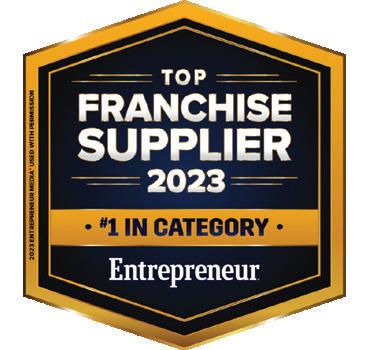

OBJECTIVE: Generator Supercenter trains and mentors new employees to help them become licensed electricians, plumbers, and office staff. Over time, the company builds strong connections with staff members, leading to long-term employee retention.
OVERVIEW: Generator Supercenter provides employees who are not suited for a college education with enrollment for licensing in trades, such as electrical or plumbing. Within several years, they can earn as much money as college graduates without accumulating tuition debt.
RESULTS: The goal of Generator Supercenter is to build strong and resilient communities across North America. It has a team of dedicated and reliable employees who represent the brand with confidence and enthusiasm in front of customers.
OBJECTIVE: When searching for new employees, Generator Supercenter looks for financial responsibility, work ethic, integrity, and character. The franchise trains and mentors new employees to prepare them for careers in the trades or office staff positions. Through this training, employees become successful enough to buy their own homes and cars and start families, establishing longterm relationships with the franchise. After several years, they can earn as much as college graduates without accumulating tuition debt. This boosts their confidence and strengthens their communities.
OVERVIEW: Realizing some young people may not be suited for a college education, Generator Supercenter provides new corporate and franchise employees with enrollment for licensing in trades, such as electrical or plumbing.
RESULTS: Generator Supercenter has a team of dedicated and reliable employees who represent the brand with confidence and enthusiasm. It has trademarked its team “The Standby Power People” as a symbol of unity and commitment. The franchise’s goal is to build strong and resilient communities across North America.
OBJECTIVE: BrightStar Care sought to increase awareness of its core business philosophy that everyone deserves to receive “A Higher Standard” of care in their home regardless of age or the amount of care they require. This campaign fulfilled the twofold purpose of reaching clients as well as current and prospective nurses and caregivers for franchises in local markets. In addition to publicly recognizing and rewarding the individuals who already fulfill their roles with distinction and compassion, BrightStar showed how team members can make a difference through the eyes, voices, and hearts of clients and fellow associates. Authentic testimonials proved to be a strong strategic approach when attracting and retaining caregivers, nurses, and clients.
OVERVIEW: BrightStar Care’s Best & Brightest annual campaign recognizes four outstanding caregivers and four nurses across a national franchise network of 20,000 healthcare workers who fulfill the organization’s mission and are described by clients and families they serve as respectful, dignified, and providing high-quality care. Sharing these stories of deserving team members illustrates the special connection they make as they deliver customized care to meet each client’s needs and showcases the fulfilling work of caring for others. The campaign is supported through social media, YouTube videos, and public relations support.
RESULTS: The Q4 2023 social media launch featured longform videos, which resulted in 28,345,361 impressions and 3,447,710 Meta ThruPlays for the eight combined videos. The second phase of the campaign retargeted the viewers with a secondary message consisting of 30-second and 15-second cutdowns of the original videos, resulting in 14,183,576 total impressions. Public relations outreach resulted in 33,778,458 total impressions while YouTube accounted for 16,984 channel views.
OBJECTIVE: Altitude Trampoline Park was seeking an innovative solution to expand its learning and development offerings in an effort to standardize training, reduce risk, and drive more revenue. It entered into a strategic partnership with Schoox, a learning management platform, to foster a culture of ongoing education and development across the system. The primary purpose of this partnership was to equip Altitude’s franchisees with cutting-edge learning solutions that address the dynamic needs of their workforces.
OVERVIEW: Altitude’s partnership with Schoox targeted five areas for improvements in Altitude’s training processes: mobile training (develop a native mobile app that is strong enough to replace desktop learning for most employees who are not behind a desk), on-the-job training (train employees in real time while moving around the park), reporting (provide a deeper look into training data beyond simple completion rates and assessment scores), digital records to reduce risk (use a cloud-based solution to ensure employees are equipped with safety and compliance information), and ROI (build out metrics to see how training is translating into membership sales, guest satisfaction, and incident reduction).
RESULTS: The partnership with Schoox has resulted in guest-experience scores improving across all locations. Franchise owners have reported noticeable improvements in employee engagement, turnover rates, and customer satisfaction. As part of Altitude’s 2023-2024 engagement survey, 40% of employees agreed they would be more effective in their roles now that they’ve completed training and 42% strongly agreed. In addition, 75% of employees said they are more likely to consider a long-term career with a company that invests in training and development.
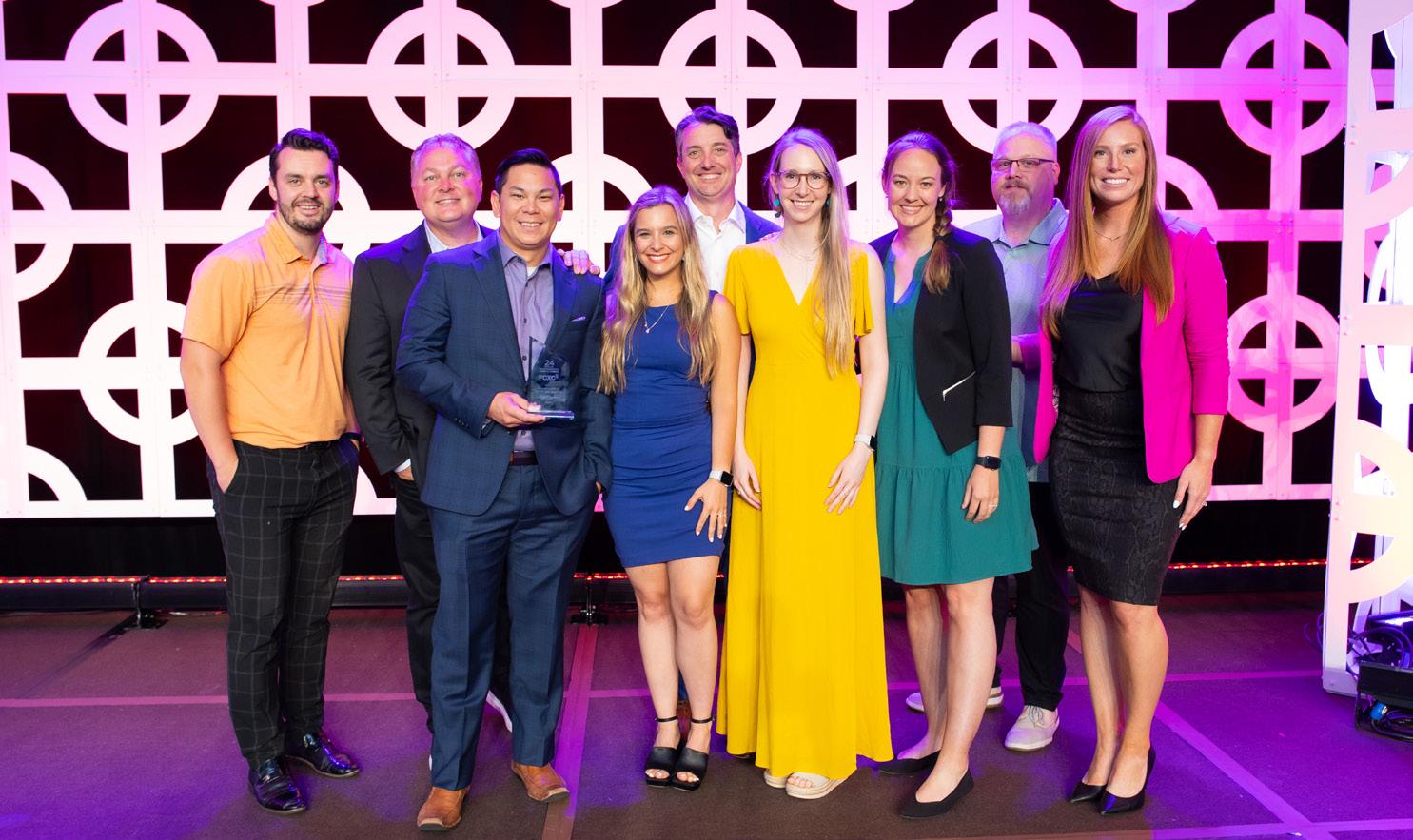
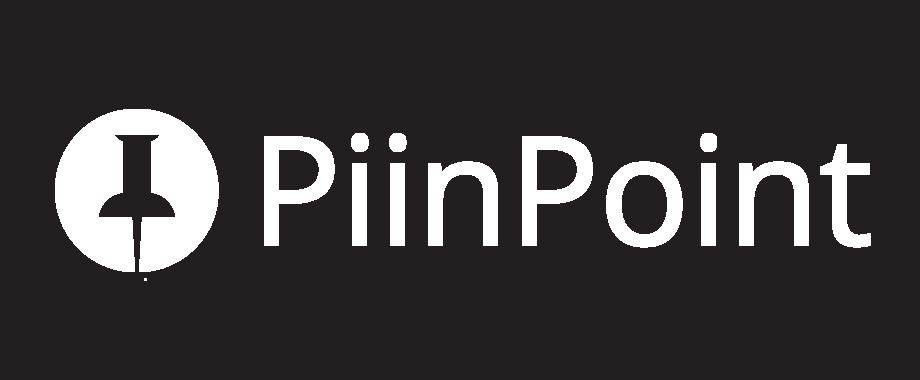
Your all-in-one platform for location intelligence.
Speed up site selection for franchisees
Need to quickly evaluate a potential franchise location? Do you have the time and resources to perform market research on each franchise location inquiry?
Collaborate with your brokers & franchisees in a single up-to-date table and map view of all listings
Predict success of your new franchise locations
Get an instant suitability score to understand the likelihood of success at that location. See new residential and retail developments to understand where the community is growing and moving to. Forecast the sales of a potential site, as well as the impact on nearby franchise locations

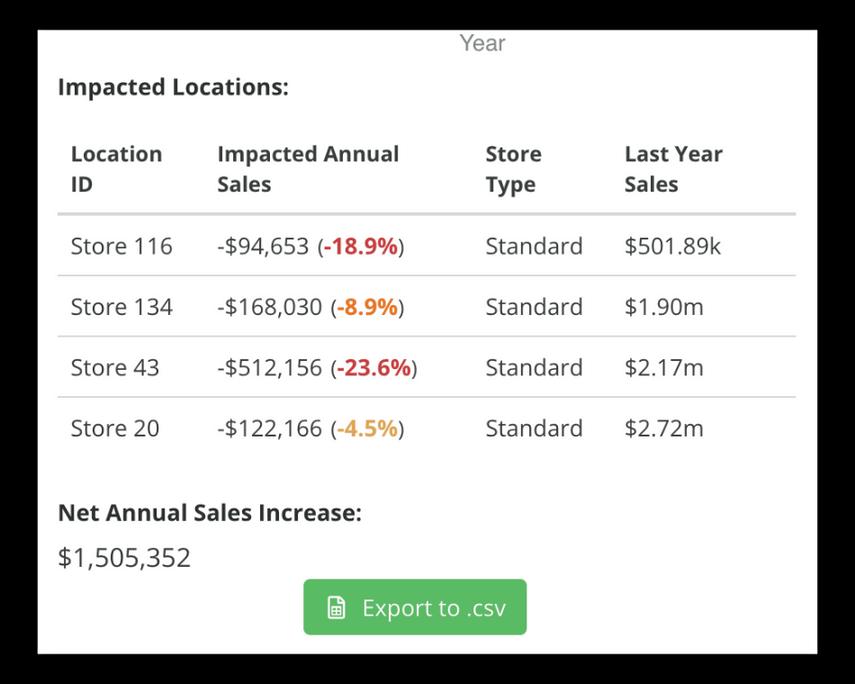
Manage your corporate & franchise network
Simulate various scenarios based on known variables such as renovations, relocations and closures. Understand market capacity and see where you can add additional locations with minimal impact to existing stores.

Ready to expand your franchise?
Let’s talk!
Tropical Smoothie Cafe wins Innovation Award with “Concierge” campaign
Written by KEVIN BEHAN
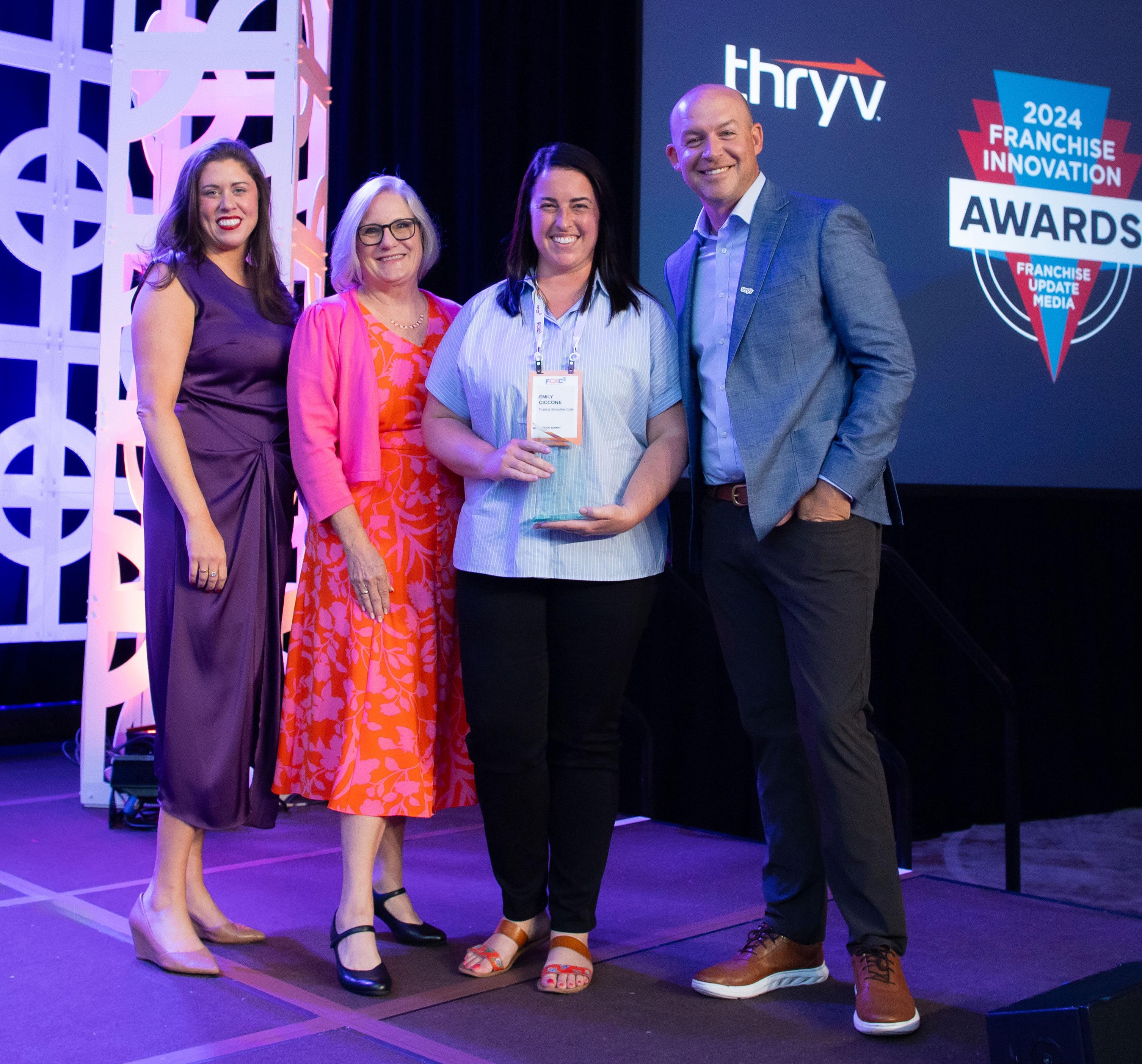

Anational campaign promising to put customers on “Tropic Time Now” helped Tropical Smoothie Cafe earn the overall award for Franchise Marketing Leadership as part of Franchise Update Media’s 6th Annual Franchise Innovation Awards.
Judges reviewed more than 150 entries in five main categories and 22 subcategories to determine Innovation Award winners. Tropical Smoothie Cafe rose to the top thanks to its “Tropic Time Concierge” national advertising campaign. It launched a new Tropic Bowl menu category and featured a concierge character played by “Saturday Night Live” star Chloe Fineman. The concierge invites guests to treat themselves to the new line of smoothie bowls, calling them a “fivestar luxury.”
The tropical getaway campaign theme was an immediate hit with customers and store operators. The average cafe has sold almost three times the volume of Tropic Bowls compared to what was sold during the product testing stages. The number of total entrees and smoothies per check increased by 4.3% in the first several months after the launch of the campaign.
Tropical Smoothie Cafe also won the Cause Marketing Award. Franchisees and guests raised more than $1.7 million to benefit No Kid Hungry.
We spoke with Emily Ciccone, Tropical Smoothie Cafe’s vice president of brand marketing, about how the brand created the campaign and the success experienced following its launch. Briefly describe the innovation. Tropical Smoothie Cafe sought to evolve its menu with the launch of the new Tropic Bowls menu category. This capitalized on the growing popularity of bowls with a new line of products that fit perfectly with the brand’s better-for-you offerings of smoothies, wraps, flatbreads, and more. The brand also sought to use this launch as an opportunity to refresh its “You’re on Tropic Time Now” campaign, which has been running successfully since 2020.
The brand also knew the importance of a product launch like Tropic Bowls needed some star power, a breakthrough creative choice to make its media work as hard as possible and create some disproportionate impact. To bring this to life, Tropical Smoothie Cafe launched its first celebrity partnership with Chloe Fineman of NBC’s “Saturday Night Live.” Fineman serves as the brand’s “Tropic Time Concierge,” a spunky, sunny hotel concierge who helps guests treat themselves to everyday getaways in the form of better-for-you Tropic Bowls. What were the original goals and objectives in launching the campaign? The original goal of the campaign stemmed from Tropical Smoothie Cafe seeking to create an uptick in food trials by guests nationwide. As a brand primarily known for smoothies, food item sales continue to be a key goal for the brand as it diversifies its menu with high-quality, on-the-go items. Additionally, Tropical Smoothie Cafe also identified the category of smoothie bowls as something the brand could uniquely own. It is the perfect intersection of “better for you” and the booming “treat yourself” culture.
How long did it take to plan, create, and launch? The launch of the new Tropic Bowls menu category was a whirlwind! The decision to launch until the live date was just under six months. What were the main results, impacts, successes, and ROI? The creative was quantitatively tested against both the QSR category
norms and all category norms. The results showed positive performance against our most important indicators:
• It over-indexed on seven out of the nine persuasion measures.
• The audience expressed emotion for “thirsty” and “yummy,” aligned with our ambition to encourage “craveability.”
• More than 60% of the viewers indicated positive purchase intent for the products (the all-industry norm is 47%).
These early indicators of success were proven in the market. Today, the average cafe is selling almost three times the volume of Tropic Bowls that was sold during the product testing stages. The Acai Bowl, in particular, is leading the pack and is now among the top-selling menu items. The energy generated by this new line of bowls is broadly impacting the business. The number of total entrees and smoothies per check has increased by 4.3%, leading to a significant positive check impact.
What role did social media play in the success of the campaign? This line of bowls meets at the intersection of “better for you” and the “treat yourself” culture. We’re seeing it explode in social trend, so social media was the perfect channel to support this launch.
Why do you think this message resonated so strongly with your customers? The “treat yourself” movement has become a cultural phenomenon (#treatyourself has more than 3.6 billion views on TikTok, and many consumers echo the theme when they talk about Tropical Smoothie Cafe). This cultural insight put a fresh spin on the brand’s core emotional promise of a tropical getaway and inspired a new creative expression of the campaign.
What was the impact for customers? Through research and social listening, Tropical Smoothie Cafe has identified that guests continue to seek out better-for-you options that can be taken on the go yet remain high quality. The addition of Tropic Bowls enables Tropical Smoothie Cafe guests to grab a quick bite from their favorite cafe while still having the chance to taste the five-minute vacation we strive to offer in each location nationwide.
What was the impact for franchisees? The impact for franchisees is clear: As a top-selling menu item, Tropic Bowls aided in increased same-store sales for Tropical Smoothie Cafe nationwide and led to a positive check impact per restaurant. Franchisees see increased profitability across the board.
How gratifying is it for a brand when a campaign not only meets your objectives but far exceeds your expectations with its success? At Tropical Smoothie Cafe, we have an ongoing goal to meet our guests where they are. Whether that’s during their lunch break, after school, or even at an airport, we want our guests to feel like Tropical Smoothie Cafe will always have the perfect smoothie or meal to help them tackle the day. When we’re able to achieve that goal, or even exceed it in this case with Tropic Bowls outperforming the testing stages, it provides us with further insight into what our valued guests are seeking in today’s market. Of course, innovation and product development are always top of mind for us, so seeing something like Tropic Bowls perform so well gives us even more ideas on what big things might be coming next in 2025.


Homewatch CareGivers wins Innovation Award by offering Total Care Solutions
Written by KEVIN BEHAN

By trying new ways to meet client, family, and employee needs, Homewatch CareGivers claimed the overall award for Franchise Operations & Technology Leadership as part of Franchise Update Media’s 6th Annual Franchise Innovation Awards.
More than 150 entries in five main categories and 22 subcategories were judged to determine the winners. Homewatch CareGivers took first place in its category for the introduction of Total Care Solutions. The program customizes care to meet the specific needs of its clients while also using technology to provide care when a staffer is not in the home. The brand was also recognized with the award for Most Innovative Franchisee Support.

Ironside builds integrated data solutions and uses Artificial Intelligence (AI) and Generative AI to enable franchise stakeholders to:
Create Personalized Communication. Use GenAI to composed emails for FranDev and perspective clients.
Internal Knowledge Base. Use GenAI to rapidly retrieve answers to HR, contractual, and unit related information.
Unit Success Factors. Identify those factors which drive unit success.
Churn, Retention and Customer Experience. Understand customer loyalty and behavior.
Competition & Cannibalization. Quantify impact from nearby units and competition.
From strategy development through implementation and monitoring, Ironside accelerates your analytics journey.
Let’s talk about how Ironside can elevate your leverage of data, analytics and AI. We combine deep franchise experience with extensive data, business analytics and artificial intelligence expertise. Request your FREE 60-minute session to get started by emailing GetInsights@IronsideGroup.com.

Burn Boot Camp, a boutique, woman-owned, and women-focused franchise with nearly 400 units.
Previous reporting efforts had created data trust issues. Burn Boot Camp needed timely, trustworthy data and reports from the disparate systems, apps and sources that underpin the business.
Ironside helped integrate data from the accounting system, CRM, POS, FranConnect™ and more to create a franchisee portal showing understandable dashboards on membership, retail sales and comparative performance data.
Created trusted data and reporting in an easy to use mobile app and portal for franchise business insight and growth.
“It’s easy to find partners who have specialized knowledge, but rarely do you find partners who can extend their breadth of expertise across so many technologies…Ironside was able to understand and embed themselves in our business.”
BURN BOOT CAMP, VP TECHNOLOGY
Homewatch CareGivers wanted to deliver personalized care to each client in an industry where more than 60% of the population reports feelings of isolation and loneliness. Rather than adopting the industry standard of minimum-hour requirements, Homewatch’s service is based on the needs of each individual. The brand uses remote technology for socialization, reminder notifications, regular monitoring of client well-being, and virtual appointments with medical providers.
Total Care Solutions has proven to be successful for both the operators and clients. With the introduction of Homewatch Connect technology services, clients have reported fewer feelings of isolation and loneliness while caregiver turnover has reduced by 40%. Increased virtual monitoring gave caregivers the ability to quickly respond to changes in clients’ conditions, which has reduced emergency room visits by 42%.
We asked Todd Houghton, Homewatch CareGivers's president, about the personalized service that helps clients age comfortably in their own homes.
Briefly describe Homewatch CareGivers’s Total Care Solutions. Homewatch CareGivers's Total Care Solutions is not just about providing care; it’s about enhancing a lifestyle. We want to ensure individuals experience personal growth and enjoyment regardless of age or health condition. Aging at home does more than comfort the heart. It brings back memories and fosters emotional well-being, and that’s an opportunity we want every client to have. What is the best thing about Homewatch CareGivers's Total Care Solutions? It’s not a one-size-fits-all service. Our focus is to deliver personalized care that meets each client’s needs. We know that each client is wonderfully unique and deserves person-centered care provided through a customized-care approach. Homewatch CareGivers's Total Care Solutions does not focus on hours of care; its focus is ensuring the amount and type of care meets the specific needs of everyone receiving care. So, here’s to aging with dignity at home and on our client’s terms.
With Total Care Solutions, services are paid in advance. This provides ease in budgeting for the client, their adult children, and our franchise owners. This is a complete solution that includes in-home caregiver visits, virtual care visits, a monthly care review visit, and the use of our technology, Homewatch Connect.
What were the goals and objectives of developing this service? It’s crucial to meet our clients where they are by offering a customized care plan and a range of services tailored to their unique needs. Our diverse offerings cater to clients who may not require daily in-person home care. Instead, some might struggle with isolation or loneliness, or they might need reminders to take their medication or eat a meal. Using technology, we can connect with clients through their televisions, offering warm smiles and friendly reminders. As care needs evolve, clients who are already familiar with our care specialists through virtual interactions often feel more comfortable transitioning to in-person care. Our ultimate aim is to enable clients to age comfortably in their own homes. With our comprehensive services, we can deliver care virtually, provide in-home assistance, and offer private-duty nursing in as many locations as needed. In essence, our primary goal is to deliver person-centered care, alleviate feelings of isolation, ensure overall well-being, and continue supporting our clients in their homes.
How long did it take to plan, build, and launch this program? The quest for the complete solution began in March 2023. By the fourth quarter of 2023, we had moved into beta testing, and the rollout commenced in the second quarter of 2024.
How does this service customize care to each customer? That’s precisely the approach Total Care Solutions takes. We begin by meeting
with the client and their loved ones to discuss their care needs. From there, we develop a customized, person-centered care plan that is specifically tailored to meet their unique requirements.
What was unique about this innovation within the home care industry? Traditional home care services often follow a one-size-fits-all model with minimum daily or weekly hours requirements that don’t always align with each client’s needs. We tailor each care plan to the specific requirements of our clients, whether that involves one, two, or seven hours per visit. We focus on the specific needs of each visit without binding clients to a set number of hours each day or week. With technology, we can also offer virtual care visits for clients who may not need in-person care. Additionally, clients can benefit from a combination of in-person and virtual visits, allowing us to connect more frequently and detect changes in their well-being sooner, which can help reduce emergency room visits.
What kind of technology is involved with this service? Our technology solution employs a smart camera to connect clients with their care networks, enabling them to interact with their loved ones and with their medical team. We collaborated with a vendor to customize this solution specifically to meet the unique needs of our clients.
How does this benefit your customers? Our clients receive care tailored specifically to their needs, free from rigid one-size-fits-all models or minimum-hour requirements. They get precisely the amount of care necessary for their situation. Through our technology, clients can easily connect with our office, their families, and even other medical professionals without leaving their homes. This technology facilitates more frequent check-in visits, allowing both our office staff and family members to quickly notice any changes in the client’s condition, to keep the client out of the hospital. Clients can comfortably age in place at home, and as their care requirements evolve, we adjust the level of care to meet their specific needs.
What was the impact for your franchisees? Franchisee owners experience higher profit margins, decreased employee turnover, and longer client retention. Clients can access care more quickly and continue receiving private-duty care services. With our revised billing processes, services are paid for in advance, allowing owners to manage budgets more effectively and compensate caregivers even if a client cancels a visit. Overall, Total Care Solutions distinctly sets franchise owners apart from other home care organizations in their local communities.
What were some of the primary results you have seen with this initiative? During beta testing, we observed remarkable outcomes:
• Caregiver turnover decreased by 40%.
• Caregivers were promoted to conduct virtual visits.
• More than 50% of clients using the technology reported feeling less lonely and isolated.
• Loved ones of clients felt more peace of mind knowing there were virtual check-in visits.
• Emergency room visits decreased by 42%.
• The average duration of a client’s stay increased by five months. What has been the response from your franchisees? Franchise owners are thrilled to offer a solution that truly sets them apart in their communities, providing a complete care solution tailored to the individual needs of each client. Owners are beginning to see results akin to those observed during our beta testing and are excited about the positive impact this will have on their businesses and communities.


Highlights from the 6th Annual
Franchise Marketing Report
By Helen Bond
The 2024 Annual Franchise Marketing Report (AFMR) is bigger than ever with new details that reflect the evolving nature of franchising.
Unveiled this summer at the Franchise Customer Experience Conference (FCXC) in Atlanta, the sixth annual AFMR provides data-driven insights that marketing professionals and other leaders can use to measure and elevate their efforts.
The franchise space is constantly faced with opportunities and challenges as marketers adapt to industry shifts, including the need to accelerate the digital transformations of their brands. This year’s survey reflects this with a greater CX focus on online reputation management, and for the first time, we tracked marketers’ views on the topic everyone is talking about: artificial intelligence (AI).
AFMR participants included CMOs, CEOs, VPs, directors of marketing, and other senior-level marketing leaders who completed detailed questionnaires. The data and statistical findings were aggregated and analyzed to examine marketing practices, budgets, and strategies across a broad spectrum of franchise brands and sectors.
The following are selected highlights and top takeaways from the report.
Franchise marketing teams are tasked with marketing to consumers, business customers, or both. This year, more than half (55%) of the respondents were B2C marketers with 8% exclusively targeting B2B and 37% saying they marketed to consumers and businesses.
As with the 2023 AMFR report, service brands accounted for the majority (69%) of respondents with 40% of marketers representing
brick-and-mortar businesses while 29% were territory based.
Another 24% of those surveyed worked for food brands (14% food, 10% retail), and the remaining 8% were in non-food retail.
This year’s report started with good news. Brands continue to strengthen their resilience in the post-pandemic era, focusing on future growth despite inflation concerns.
Leads and traffic count were up for more than half (54%) of respondents with 24% saying they were about the same. That was up collectively from 74% in 2023. Roughly 20% reported leads and traffic count experienced slight declines from the previous year.
that other forms of outreach also connected with audiences, reinforcing the need for an omnichannel marketing strategy.
Looking at lead-to-close ratios across all marketing strategies, digital marketing and company websites were the most effective lead-generation sources. The report also found
Marketing continues to solidify its place as a topline strategy for franchise brands looking to drive growth and boost brand power. This year, 66% of those surveyed increased their marketing spend in 2024 with 53% of franchises saying they added to their marketing team in the past 12 months.
Today’s path to purchase is a winding road filled with discerning consumers. Brands have responded by changing algorithms, adding automation, and embracing disruptive technologies that are transforming the way the world does business. As a result, teams are focused on strategies that provide high ROI when marketing to moving targets.
A robust online presence remains the top priority for AFMR participants with digital advertising, social media, and company websites receiving the bulk of brands’ allocated marketing budgets.
Digital advertising soared as the prominent overall marketing strategy in 2024. The report found that 72% of franchise brands cited digital advertising as most effective in driving customer leads and traffic, significantly higher than 44% in 2023. Digital advertising was followed by social media advertising (48%), referrals (42%), and websites (40%).
The survey drilled down to explore marketing’s impact on the customer experience and conversion. Although results vary by industry, the following highlights reveal where marketers invested their budgets and achieved the best results:
• Digital sources. Survey respondents allocated the most significant chunk of their digital advertising budget to pay-per-click on search engines (29%) and social media advertising (17%) with both being equally effective.
• Best social media sales platforms. Facebook dominated as the leading social sales platform across all categories with Instagram and LinkedIn tied for second. LinkedIn was on the rise for 2024 while YouTube and X, formerly Twitter, plunged to the bottom of this year’s report as marketers shifted gears to keep up with platform changes and consumer sentiment.
Respondents cited Google Analytics, HubSpot, and their own in-house marketing platforms as the top three tools and platforms used in business operations. Google Analytics, Canva, and ChatGPT topped the list of platforms and tools used to manage marketing efforts.
Local marketing programs are crucial to franchise systems. Still, challenges remain, including difficulties with buy-in and compliance from franchisees who were busy tackling labor shortages, supply chain issues, and inflation. Most of those surveyed required or recommended local marketing spend, yet nearly half (45%) left it in the hands of their franchisees, relying on the honor system.
Franchise brands have never been more aware of the importance of customer experience metrics. Marketers leveraged AI and other disruptive technologies to optimize business and deliver improved CX. Every marketer surveyed has a customer experience process or model in place for their brand. That’s up from 78% of brands in 2023.
Marketers are just beginning to understand and unleash generative AI’s power to digitally transform the future of marketing at scale. Among those asked, 57% of franchise brands said they are leveraging AI technologies to engage and enhance the customer experience. Customer support chatbots are the most used application. Other uses for AI included personalized recommendations for products and services, customer service interactions, marketing campaigns, predictive analytics for anticipating customer needs, and loyalty programs.
CX and online reputation go hand in hand for today’s brands to foster trust, boost brand power, and grow and expand business. This year’s report took an in-depth look into the metrics, platforms, and tools used to track a brand’s CX and online reputation.
Marketers revealed that 75% looked to review sites, 46% used third-party surveys, 53% used internal surveys, and 4% used other tools. Online reviews topped the list of tracking metrics by 75% of respondents followed by social media mentions, website traffic, conversion rates, engagement metrics, brand mentions, and sentiment analysis. The platforms and tools used to measure this vary with 68% using social media monitoring tools, 45% using review monitoring platforms, 43% using online reputation management platforms, 36% using SEO tools, 21% using sentiment analysis tools, and 15% citing none of the above.
Brands that are using AI are already seeing digital gains. Respondents said the integration of AI helped to resolve customer issues (43%) and improve customer satisfaction (33%) among other benefits.
With generative AI still in its early stages, marketers said they face plenty of challenges as they strive to balance cutting-edge technology with the essential human element to

Our Mission
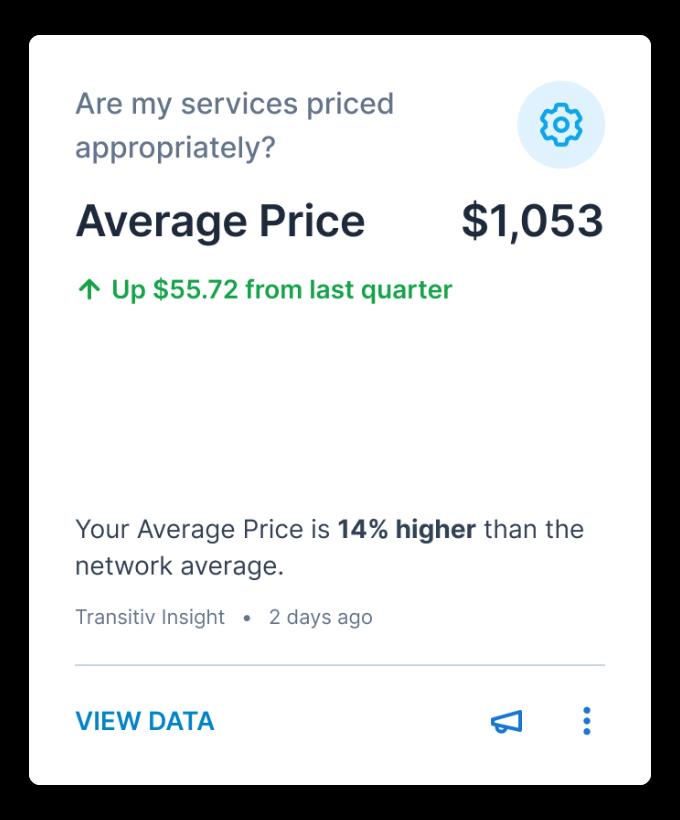

T r a n s i t i v e x i s t s t o g u i d e f r a n c h i s e s t h r o u g h t h e i r u n i q u e d a t a a n d a n a l y t i c s c h a l l e n g e s . W e
s i m p l i f y t h e c o m p l e x i t i e s o f t h e f r a n c h i s e b u s i n e s s m o d e l b y c e n t r a l i z i n g , r e f i n i n g , a n d v i s u a l i z i n g
d a t a i n a w a y t h a t b u i l d s n e t w o r k t r u s t a n d e m p o w e r s i n f o r m e d d e c i s i o n - m a k i n g .
Our Solutions
Corporate Reporting
F o r e m e r g i n g f r a n c h i s e s o r f r a n c h i s e s
t h a t o n l y n e e d t o m e e t d a t a n e e d s f o r
c o r p o r a t e t e a m s
Franchisee Insights
F
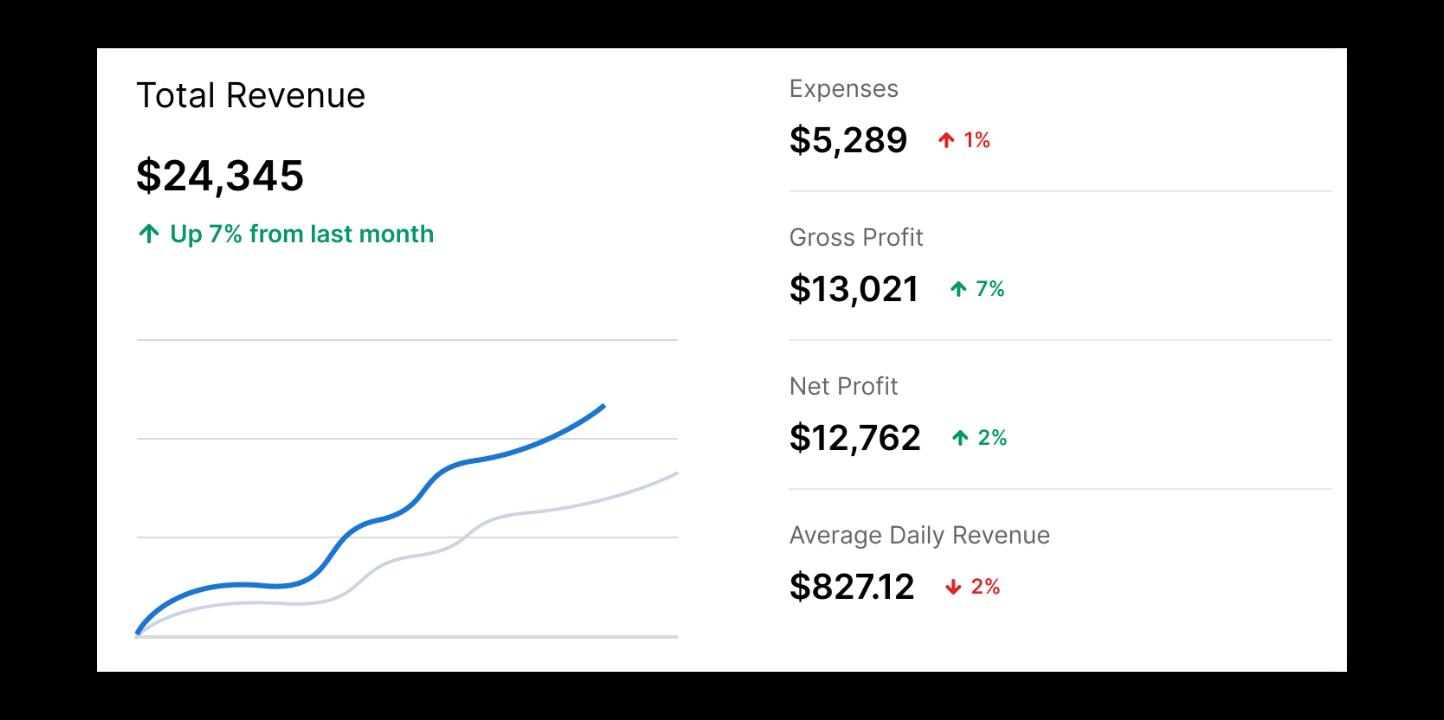
c o m p r e h e n s i v e r e p o r t i n g t o c o r p o r a t e a n d
f r a n c h i s e e s .
Analytics as a Service
F
i n t e g r a t i o n , d e l i v e r e d a t s p e e d .
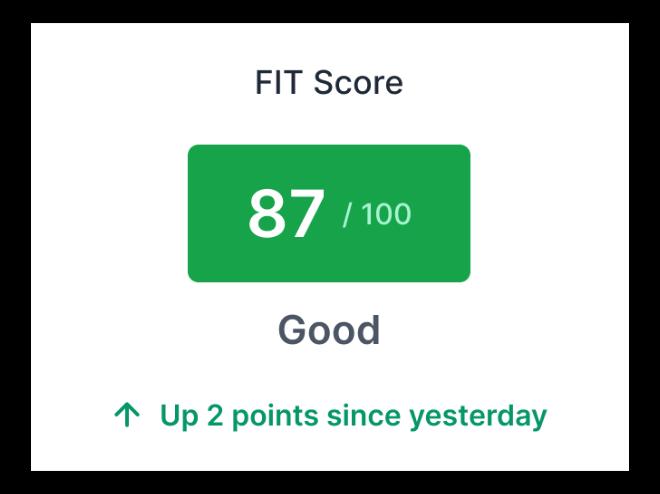
enhance CX. Difficulties included finding skilled personnel for AI management, data privacy, security concerns, technology maturity, and reliability issues.
Franchisors need to invest in training and support and focus on measuring customer feedback. AI’s effectiveness will expand as brands embrace the promise of machine learning. The majority of AFMR participants seem to have gotten the message. Most respondents say they plan to moderately or significantly invest in AI-powered marketing. For the 43% of brands that reported not using AI—and remain on the fence—experts say now is the time to start.
As futurist, organizational strategist, and FCXC keynote speaker Mike Walsh noted, “If you’re not currently using AI, you’re already behind.”
For more information about the 2024 AFMR and to order a copy, visit https://afmr.franchiseupdate.com/.
As part of the 2024 Annual Franchise Marketing Report, marketers were asked to share the obstacles they face. Areas for improvement include:
• Budget constraints
• Franchisee engagement and training
• Maintaining brand consistency
• Digital marketing
• Competition
• Consumer trends and preferences
• Data privacy and compliance

BizBuySell offers the largest audience of entrepreneurs who are looking for their next opportunity. Make your franchise their next business move.
With BizBuySell, close more deals than other leading digital marketing channels*:
"Receive high quality, targeted leads on our Franchise Directory Network
Send targeted E-Blasts to 350,000+ active buyers and franchise prospects
Advertise Franchise Resales in business for sale search results
Position yourself where buyers are looking for opportunities like yours







Written by KERRY PIPES

Ana Malmqvist is CMO of Melting Pot (part of Front Burner), a role she first stepped into in early 2020.
The experienced marketer, who keeps the focus on guests, is leading the charge behind the marketing efforts at the fondue restaurant brand that now has more than 92 locations in 31 U.S. states and Canada.
Her experience in marketing and brand management, along with her focus on developing strategic marketing solutions to drive business results, has been the hallmarks of her career in the restaurant space. She held several senior roles at Bloomin’ Brands, including vice president of product marketing at Outback Steakhouse, where she was responsible for the brand’s food and beverage strategy. She also spent time with Carrabba’s Italian Grill as senior director/director of
product marketing, overseeing all aspects of the brand’s food and beverage strategy.
Since coming to Melting Pot, Malmqvist has focused on improving the customer experience and growing a loyal fan base. The brand now has more than two million active subscriptions to its Club Fondue loyalty program. In addition, a recent remodeling initiative introduced romantic booths and designated spots for wine tasting.
Successful marketing begins with a “deep, deep understanding of the guest,” she says, adding that it requires “establishing KPIs across all of the different tactics we use.”
The end game is to drive awareness and traffic, so consumers have the chance to become loyal fans.
Describe your role as CMO. As CMO of Melting Pot, I see myself as the steward of the brand and everything it represents. My marketing team and I truly are the voice of the consumer and the guest across all divisions we work with. I oversee all divisions from a marketing perspective, including our restaurants, our proof of concept (which is Melting Pot Social), and our retail brand.
What’s the most challenging part of being a CMO today? It’s the ever-changing guest and guest dynamic. I believe many people would agree that there are three distinct periods: the world pre-Covid, the world immediately post-Covid, and the world today. Immediately post-Covid, there was pent-up demand in the restaurant industry, especially for a brand like ours. Spending reached historic proportions with people eager to get out, celebrate, and spend the savings they had accumulated. However, that demand has cooled off and traffic has softened industry wide. Navigating this has been challenging both during Covid and in the current post-Covid world. How has Covid impacted the way you have led your brand’s marketing efforts? I joined Melting Pot as chief marketing officer in January 2020 after doing some consulting with them in Q4 of 2019, pre-Covid. This presented an interesting opportunity to implement things the brand had never done before and was probably resistant to doing pre-Covid.
When we reopened, we had a menu that was supposed to launch in March 2020, which was obviously postponed. The new menu, along with new programs and promotions that the brand typically had not done, became relevant and motivating to guests looking to start going out again.
Between 2020 and 2022, we introduced new ways for guests to engage with the brand. Post-Covid, we still face challenges, such as rising costs and inflation, which affect guests’ willingness to use their disposable income in other ways.
What are the three most important keys to being an effective CMO today? The key is staying in touch with the guests. It’s easy to be distracted by chasing the shiny object, but staying true to the guests and their needs is critical. Audience relevancy is also important. You need to be relevant to your audience across all the different mediums you use. Staying on top of technology is crucial as well. Technology moves very fast, and it’s easy to bury your head in the sand and ignore it. However, technology
is your friend. If you stay on top of it and understand how to best leverage and use it, it can be a game changer.
How do you prepare a marketing plan and execute the strategies? We always start with the guests. Aided by the technology we have, we take a deep dive into the consumers and their needs. About a year ago, we conducted a detailed segmentation, which allowed us to better understand what guests were looking for.
How do you measure marketing results and effectiveness? First and foremost, we have KPIs at the company or brand level. We consider things from a consumer standpoint as well as from operational and financial standpoints. Additionally, we have specific marketing KPIs related to digital media, social engagement, email effectiveness, and so forth. Discuss your core consumer marketing strategies and objectives. As a brand, we don’t have tremendous penetration. Typically, we have only one location in a major city, and it might be the only one in the entire state. Therefore, we don’t have tremendous awareness, and we always need to drive that along with traffic. How do you convert guests who are aware of us into trying us more than just once? They might come to us for a special occasion, which is what we’re known for, but they don’t necessarily come to us more than once a year or once every few years. Our objective is always to drive awareness and traffic. We base our strategy on the intersection of consumer need states and the occasions they use us for. Research shows that guests use us for exceptional occasions, such as birthdays, anniversaries, and national celebrations, like Valentine’s Day and holidays. We know we hold a special place for these occasions, but we also understand that guests want to use us more often than just for these exceptional celebrations. For example, guests have expressed interest in using us for more frequent date nights.
How do you go about creating a customer-centric marketing and brand philosophy? The marketing team understands that being consumer centric is our job and career. We’ve done this at other companies, both restaurant and nonrestaurant. Here, it’s crucial to ensure that all stakeholders, including franchisees, also understand this.
We try to remove any subjectivity and focus on the guests and the brand. By holding this as our North Star, we can get people to buy into it. We drive traffic and increase revenue
by taking a consumer need state, matching it with an occasion they want to use, and creating a program or promotion to meet that need. Connecting all those dots demonstrates that being consumer-centric works.
Describe your marketing team and the role each of them plays. We have a team of about 10 people. When you think about Melting Pot restaurants, we have two distinct areas that we call design and delivery.
The design team owns the strategic calendar and comes up with the objectives and strategies behind it. This includes the creative team working closely with our R&D and operations teams to develop the promotional campaigns and the menu ideas that support those campaigns. They manage the creative agencies and the overall concept of the campaigns, ensuring they are relevant for guests.
The delivery team consists of the digital team, the PR team, and the local marketing team. They are responsible for communicating the experience we’ve developed to the guests. Why is it so important for the marketing department to have a personal touch when it comes to helping the brand connect with franchise prospects? We get a lot of prospects coming into the building. First and foremost, they love the brand. They come to us because they are brand users and feel a connection strong enough to invest in it as their business. Most of these prospects are family business owners taking a big leap and putting their trust in the brand.
It is all about trust and ensuring they understand what we are doing, so they don’t have to know all the details themselves. We provide a strong infrastructure from a people, team, marketing technology, and research perspective. Some things we handle at a national level, so they don’t even have to worry about it.
However, we do expect them to handle some marketing at the local level. We help them get to that point, but they need to know they are taken care of. When they sign on with us, they are assigned a local marketing manager who will guide them from a marketing standpoint. This guidance starts many months before opening and continues through the opening, leveraging all our systems, partners, and technology along the way.
How does this help your franchise sales and development effort? Now they feel they have a massive support team and infrastructure behind them, so they’re not on their own. They don’t have to find their own digital
agency or PR firm, and they don’t have to do any of the heavy lifting; we handle that for them. They can focus on specific tasks that we can’t do for them, like building local relationships and identifying key figures in their community. These are crucial tasks they must handle themselves.
What ways/tools do you rely on to do this? From a people standpoint, our local marketing managers are the ones who create that human connection between the franchisee prospect and our team. That personal touch is essential because it lets them know they’re not just sifting through websites and documents on their own; instead, they have someone they can onboard with, which is the most important way we assist.
Do today’s prospects expect more from the franchise marketing department? What, and how do you provide it? PreCovid, there wasn’t necessarily much of a national marketing effort backing the franchisees’ efforts. Each location pretty much did its own thing, and the opportunity that Covid provided was a way to come at this from a brand standpoint and have more of a national voice. With that, franchisees do expect more because these things aren’t necessarily under their control. When we market nationally, we’re the ones who determine the strategy behind that.
We have to stay on top of everything that they can’t possibly stay on top of. For example, from a digital marketing standpoint, we have a co-op that we started when we came out of Covid. From that co-op, the expectation is that franchisees provide a set amount of funds that they’re going to put against their digital media, and 100% of the money that they invest goes to driving traffic and sales to their locations.
How is today’s consumer and marketing data helping you fine-tune your marketing initiatives? We gather more data than ever before. The key question becomes: What’s the most crucial information we need now as opposed to simply collecting data? For us, it’s about gaining a deeper understanding of our guests. We’ve invested heavily in segmentation to better comprehend our guests. Segmentation factors include recency of visits, spending habits, and the psychographics of our various target groups.
Describe the evolving role of social media in your brand’s marketing efforts. This is actually my first experience working with a brand where there’s both a national
Facebook and Instagram page alongside individual location-based pages. This dynamic creates a unique situation where we manage national messaging alongside specific local messages. TikTok has emerged as a new platform, almost like the new Google, particularly popular among younger demographics.
Our approach also includes influencer strategies, leveraging social media to amplify our reach. As social media platforms evolve, so do their algorithms, impacting how we engage with our audience. Changes on Instagram, for instance, prompt us to rethink our strategies for national versus local pages.
How do you work with other internal departments, and does technology help? I work very closely with our head of technology, and we constantly collaborate to identify the relevant data and information needed to create the insights we require. We recognized the necessity to better understand our guests, particularly by leveraging the intersection of POS data, reservations data, and email database information. By combining these three sources, we began to observe distinct behaviors emerging in the data. This allowed us to gain insights into how specific guests engage with us and prompted us to ask further questions about their lifestyles and preferences. To answer these questions, we conducted additional research to identify existing guests and to find look-alikes— people who resemble our current guests but have never visited a Melting Pot location.
Which technology tools are most valuable to you, and why? We’ve put a lot of effort and investment into technology that helps us segment our consumer base to better understand our guests at a deeper level. This segmentation is made possible through the integration of three key tools: our POS data from Toast, reservation data from OpenTable, and our email database managed through Salesforce.
How do you stay on top of changing technology? I continuously collaborate with our head of technology to gather relevant data and insights that drive our marketing strategies. This integration of technology and data collection helps us better serve our guests and quickly adapt to evolving digital landscapes. How do you manage costs and budgets for the marketing department? It all comes back to the KPIs, which we set at both company and marketing levels to ensure alignment with our consumer, operational, and financial objectives. We also have our co-op program for digital media.
Do you see vendors as business partners? Why/why not? They are our strategic partners, and they know that’s how we view them. When we hire a creative agency, a digital agency, or a PR agency, it’s crucial for us to understand how they operate and how we prefer to collaborate. In past experiences where there wasn’t this partnership approach, it often felt like orders were given without a deeper understanding of our business, which I find inefficient and ineffective.
Drawing from my years at Procter & Gamble as a brand manager, I learned the importance of having a trusting relationship with agencies. They were seen as strategic partners who understood our business goals from high-level vision down to campaign execution and beyond. Having a partner who comprehends your business deeply can bring invaluable insights and perspectives, challenging you to think differently and make connections that might not otherwise be apparent. In our approach, vendors are suppliers and strategic partners who collaborate closely with us.
How have marketing strategies/tools changed over the past decade? How have you adapted? We’ve adapted by integrating comprehensive data analytics into our segmentation strategies to personalize guest experiences. We are always monitoring and adapting to changes in technology and social media to stay competitive.
How is your marketing/branding strategy developed, and how does it flow through the system? Our marketing and branding strategy is based on deeply understanding our consumer through insights derived from data. For example, the segmentation analysis I mentioned previously helps us identify distinct guest profiles and their preferences, which, in turn, informs the development of targeted campaigns and promotions crafted by our design and delivery teams. These campaigns are executed across national and local digital platforms, supported by strategic partnerships.
What advice would you offer to aspiring CMO executives? To aspiring CMO executives, I would emphasize the importance of building strong partnerships and fostering a collaborative work culture. Strategic alliances with agencies and cross-functional teams allow you to leverage expertise and achieve marketing objectives. Embrace data-informed decision-making and use technology to understand consumer behaviors and adapt quickly to market dynamics.
Every time the phone rings it creates a distraction for staff. They are forced to choose between taking care of customers in front of them and answering the phones. But with Smart Answering, your staff can focus on great customer service while all of your calls get answered by a voice AI assistant.

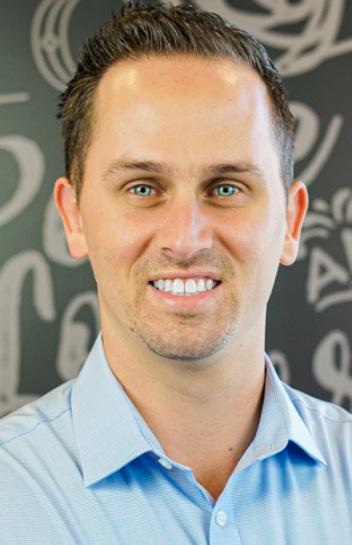
CHRIS IVES
Chief Financial Officer/Head of Marketing
Bubbakoo’s
Burritos
At Bubbakoo’s Burritos, we mainly leverage new technology to make sure our guests have the best experience possible across all avenues. We’re committed to providing personalized, 24/7 support, ensuring quick and accurate responses to any inquiries. This means we’re always ready to engage with our guests through our online ordering system, catering platforms, and our mobile app, offering recommendations and solutions tailored to their preferences.
Our technology helps us stay ahead of the game by creating a better understanding of what our customers like and how they prefer to interact with the brand. We use advanced POS systems and a smart loyalty program to analyze customer feedback and behavior. This isn’t just about making transactions smoother; it’s about collecting valuable insights that help us improve continuously for the foreseeable future. We’re always looking at this data to figure out what works and what doesn’t, so we can keep enhancing our services and hopefully create more Bubbakoo’s Burritos fans. Our loyalty program, The Green Room, is particularly beneficial because it allows us to reward our regulars and make them feel special each time they visit one of our restaurants.
Additionally, on the internal side, the program provides us with a wide array of information on what customers are buying, what they think about it, and any trends that emerge
over time. This feedback loop means we can quickly and effectively jump on any issues that should arise. We want to be reliable and accessible, making sure every interaction—from placing an order to getting the food—is topnotch. With that said, our tech strategy isn’t just designed to benefit the customer-facing side. As mentioned, these tools help streamline our operations and improve communication among our team members behind the scenes. This internal efficiency is crucial because it means our staff is always ready to meet guest needs promptly and accurately, translating into better service for our customers all around.
In short, at Bubbakoo’s Burritos, using new technology is key to our guest recovery strategy. We make sure our support is personalized and available around the clock through our online ordering, catering platforms, and mobile app. Our advanced POS and loyalty program technologies help us constantly analyze and improve our services, ensuring we’re reliable and accessible at every touchpoint. Through these efforts, we aim to exceed customer expectations and create an enjoyable and memorable dining experience.
Our Marketing Mix Model Optimizer uses AI to refine advertising plans, maximizing ROI without additional expenditure.
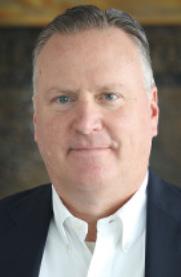
Chief Marketing Officer
Hand & Stone Massage and Facial Spa
In the past two years, artificial intelligence has exploded onto the scene. While we’ve been anticipating this explosion for years, no one could have predicted how rapidly it would be in demand—from consumer requests to business optimization. This year has already proven to be pivotal for the future of AI as businesses, including franchises, have sought out different ways to integrate this technology into our everyday operations.
At Hand & Stone Massage and Facial Spa, we have strategically integrated various kinds of advanced technology, including AI and ChatGPT, to significantly enhance our brand’s customer experience. Our recent endeavors highlight the sophisticated use of AI to optimize marketing efforts and improve customer interactions.
We have just completed our Marketing Mix Model Optimizer, a cutting-edge tool leveraging AI to analyze thousands of variable points. This helps us determine the impact of specific media channels on sales and new trials at varying levels of investment. By refining our approach using the data collected from AI, we can develop highly efficient local and regional advertising plans for our franchisees, maximizing ROI without additional expenditure. This proactive adoption of AI places us ahead of industry trends as evidenced by WPP’s GroupM midyear forecast, which anticipates a significant acceleration in AI-driven ad placement and optimization. According to GroupM, 69.5% of advertising revenue will be AI-enabled by the end of 2024 with AI projected to power more than 90% of ad buying by 2029.
Incorporating ChatGPT into our operations has further revolutionized our customer experience. We implemented ChatGPT early on for both guest and employee chatbots, enhancing communication and engagement. Additionally, we utilize ChatGPT to generate content that boosts our SEO efforts. This is done with careful consideration to ensure high-quality, original content that meets Google’s standards, thereby avoiding any adverse effects on search rankings. Our meticulous approach guarantees that AI-generated content is robust and effective.
Additionally, we apply the same thoroughness in managing consumer reviews through our partnership with Reputation.com. Our deliberate rollout of AI options ensures that AI-generated responses align closely with the authentic voice that has consistently improved our online reputation. This integration streamlines our operations and maintains the trust and satisfaction of our customers.
Hand & Stone’s strategic use of AI and ChatGPT demonstrates our commitment to leveraging advanced technology for superior customer experience and operational efficiency. By staying ahead of industry trends and ensuring quality in our AI applications, we continue to enhance our brand’s engagement and reputation in the market.

Chief Marketing Officer
Checkers & Rally’s
Committed to delivering innovative customer experiences, Checkers & Rally’s has harnessed AI and ChatGPT to enhance its marketing efforts. These advanced technologies are integrated into various facets of the business to optimize customer engagement, streamline operations, and improve overall satisfaction. Here are key examples of how these technologies impact the business:
• Customer data platform. AI plays a crucial role in developing custom audiences and personalized experiences by analyzing enriched customer insights. This data-driven approach allows Checkers & Rally’s to create more relevant and engaging marketing strategies, ensuring the right message reaches the right audience at the right time.
• Content development and enhancements. Using AI and ChatGPT, Checkers & Rally’s optimizes content for paid and organic social media across Meta platforms. This includes developing compelling captions and personalized content tailored to specific audience segments. AI ensures content is relevant and engaging, increasing customer interaction and brand loyalty.
• Email personalization. AI-enabled technologies personalize email communications based on individual preferences. By analyzing customer behavior, AI helps create targeted email campaigns that resonate with recipients. This personalized approach boosts open rates, click-through rates, and conversion rates, making email marketing more effective.
• Reputation management. AI-powered tools are essential in managing the brand’s reputation. These tools tag conversations and raise alerts about shifts in public customer conversations. By monitoring sentiment across branded social media platforms and content responses, Checkers & Rally’s can stay on top of relevant trends and respond effectively. This proactive approach helps maintain a positive brand image and quickly address potential issues.
• Reviews and customer management. AI-based monitoring platforms provide localized experiences via an enterprise system. These platforms offer strategic business insights that help protect and improve the overall customer experience. By identifying areas needing improvement, the brand can evolve to better meet customer expectations.
• Reporting and analytics. Integrating AI into reporting functions streamlines the process of tracking KPIs. AI saves time by automating data collection and analysis, identifying optimization opportunities, and ensuring the brand stays on track to meet its business goals. This efficient approach to reporting allows the marketing team to focus on strategic initiatives.
• Employee recruitment and experience. For future and returning employees, Checkers & Rally’s offers a ChatGPT-like experience to simplify the job-hunting process. This AI-driven approach provides a user-friendly and efficient way for job seekers to find relevant positions, apply, and receive timely updates. Enhancing the recruitment process helps attract and retain top talent.

“Technology as a Service” solutions built for franchise businesses.
You have enough spinning plates. Software agnostic and franchisewise, we can support your path to a unified, smarter retail tech ecosystem built uniquely for you.
Standardize Your Tech Stack
Supplement Your Call Center with 24/7 Support
Support Your New Store Buildout
Integrate Your Software Platforms
Franchise-Specific Portals Standardized at the Zor Level and Customized at the Zee Level
All hardware, SaaS, and support in one fixed monthly payment





Written by JACK MONSON
The way to market a franchise has changed once again. Marketing strategies and tactics are drastically different from what they were four years ago. Some successful tactics are even different than just one year ago.
Imagine your next five new franchisees.
None of them will be attending any franchise expos. None of them will be going to any online portals. None of them will be Googling your brand. They may not use Google at all.
How are you going to get their attention for your franchise opportunity?
Let’s think about what they will be doing. We know they will be scrolling on their phones all day and all night (just like the rest of us). This is good news! Create content to put in front of them on whichever platform they spend their time. Note: They may not be thinking about the term “franchising,” but they are thinking about owning their own business. Keep that in mind as you create content that platforms want them to see.
Who are you targeting and why?
Back in the “old days”—a year or so ago!— we spent a great deal of time managing and tweaking the audience targeting. Activity, geography, financials, and demographics made for a complex, multi-layered approach to ad management.
The most recent change on Meta’s platforms is the reduction in the need for this kind of complicated targeting. Meta’s AI tools and algorithm updates have allowed the platforms to serve up ads to people most likely to engage with those ads regardless of how the advertiser has set up targeting.
Now more than ever, good copy and good content are king. Let the content do the work. Stop overthinking the targeting and let Meta do its thing. Our team was initially skeptical about this, but we’ve seen great results already this year.
Newer tactics, including content-based targeting, will lead to fewer but better leads. Everyone says they want quality over quantity until they see fewer leads. As you move to higher quality, be sure to manage the expectations of your sales team and the executive team. Remember, you would rather have 50 solid, qualified leads than 500 junk leads.
This also means your CPL will increase, and these expectations should be managed as well. The leader of our lead-generation team, Jason Weaver, often says, “Your cost per lead is going up. And that’s a good thing!”
There are a few brands that are looking for more leads to keep their salespeople busy. These brands won’t be growing this year or next. If you just want more leads, run some generic Facebook ads with a form fill, and you'll have enough lousy leads to make plenty of busy work for your sales crew.
The most important channel for your content is currently LinkedIn. Here are some updated tips to maximize your engagement with your next candidates:
• Post daily. No exceptions!
• Don’t use AI to write your post. Can you tell when a friend or colleague is using AI for a long LinkedIn post? I’ll bet you can. And I’ll bet your candidates can too. Be genuine.
• Don’t use external links. This has been a best practice for a while, but links appear to be performing worse than ever.
• Upload native videos. LinkedIn is becoming more like TikTok every day.
Many franchise marketers are using shortform videos to get their executives in front of many potential candidates every day without a dollar in ad spend. To get started, record an executive from your brand and add captioning, animations, B-roll, and anything to which you have access.
Post those clips daily on all social channels. We recommend LinkedIn, TikTok, Reels for both Facebook and Instagram, X (formerly Twitter), and YouTube Shorts. This works on two levels:
• On the strategic level, it’s coming from a person, not just a brand. Candidates want to engage with a person, not a company.
• On the tactical level, we’re giving the social media channels’ algorithms exactly what they want. They want short-form videos, and they want to show them to people who have watched similar videos.
The content here is advice from your executive, who is a thought leader. And that’s the key: TikTok especially is used for advice. YouTube is useful for people searching “how-to,” but TikTok is all about sharing advice that the audience doesn’t yet know it needs.
Regarding the frequency: You must post daily with no exceptions. The only way to rise above the increasing noise is to get louder. Some brands push pack on this but consider the world’s top content creators. Does Gary Vaynerchuk worry about being overexposed? No. Does Taylor Swift worry about people getting tired of hearing so many songs? No. Put out good content and put it out often.
Marketing to multi-unit, multi-brand owners (MUMBOs) is not a new phenomenon, but the numbers are skyrocketing. With the current economy and inflation, the efficiencies of combining expenses and managing costs across multiple units and brands will not be decreasing in the next year if ever.
The digital marketing tactics discussed above, especially those for LinkedIn, will work even better in finding the right candidates for multi-unit opportunities. And unlike individual operators, these MUMBOs are repeatedly engaging with many brands’ content. Make sure yours is in front of them.
Jack Monson is the CEO of franchise development marketing agency Brand J and has been helping franchisors with digital marketing for 15 years. He is also the owner and host of “Social Geek,” the top podcast in franchising.


Written by JOHN DIJULIUS
Editor’s note: The following is adapted from an excerpt from John DiJulius’ new book, The Employee Experience Revolution: Increase Morale, Retain Your Workforce, and Drive Business Growth.
So many businesses appear desperate when understaffed, making them less attractive to top talent. Most companies hire reactively, racing to fill openings caused by either turnover or growth. When companies hire after they have a need, their objectivity is distorted, and their hiring standards become compromised.
Hiring objectives
The objective of hiring is not simply to fill job openings with warm bodies. Your No. 1 job is to find a candidate who fits your culture and will enhance it. The first step is creating a world-class recruitment experience (RX).
Great leaders and organizations understand that as much as the potential employee needs to be the right fit for their company and team, the company needs to be the right fit for the potential employee. If not, within the next six months, both are likely to be back at the drawing board.
Evolve at every level
Everything a brand does, internally and externally, must be an experience. Your organization needs to focus on being BX strong (brand-eXperience strong), an entire experience ecosystem. The companies that will dominate their industries for the next decade will be obsessed with evolving the experience at every level.
We are not just talking about a good or even great interview process that helps you better select the seemingly superior applicants. Who’s to say the people applying are truly rock stars? And if they are rock stars, who’s to say that they will accept your job offer? Today, rock-star employees have choices.
Before the Great Resignation and labor shortage, if a person wanted a new job with a new company, they most likely would apply and interview with one company and then wait to hear if they got the job. Not today. They are interviewing at several companies, looking for the best offer.
Now, the best offer doesn’t always mean the highest compensation. It can mean many different things, typically a combination of factors, including pay, opportunity for advancement, flexibility, workplace culture, hard and soft benefits, professional development, autonomy, mission, purpose, core values, meaning, and the opportunity to work with leaders who will impact their personal and professional development.
When a candidate interviews with your company and then interviews with different organizations, you want those other businesses to pale in comparison to your recruitment experience. The candidate actually becomes worried that your company might not select them. That’s world-class RX.
Your culture’s branding needs to be strong and defined in every way a candidate can be exposed to it, including your website, social media, comments from existing and past employees, reviews on Glassdoor and other employment sites, customer reviews, and interview process.
Your company culture needs to be so definitively clear that one of two things happens: They are either turned on or turned off. And their being turned off is great for both the company and the candidate. Neither the company nor the new employee needs to find out in three months that it wasn’t a good match.
The best way to increase a candidate’s interest in working for your company is by educating them on how hard it is to get hired there. The top employee experience brands articulate
that they are not for everyone nor do they want to be. They are for the 2% who want to emerge as the best of the best, who are not afraid to work hard and challenge themselves to see how much greatness they have inside. Not only will potential candidates appreciate that, but it will also tell them that if they get hired, your screening process will protect their workplace culture, ensuring a jerk-free environment.
If you go to the career page on most companies’ websites, they tend to say the same generic messages. Every company has a mission and purpose statement. People don’t believe what they read; they believe what they experience. One of Enron’s core values was integrity: “We work with customers and prospects openly, honestly, and sincerely. When we say we will do something, we will do it; when we say we cannot or will not, we won’t do it.” However, the company’s actual practices and behavior did not always align with these values as evidenced by Enron’s collapse in 2001.
I don’t want to waste a lot of time with wrong-fit candidates. They can be weeded out long before the interview process. When visiting a career page, have it say, “Before filling out this application, watch this video first to make sure our company’s culture is a match for you.” It will make a candidate pause and think, “Maybe this company isn’t for me,” or “This is exactly the type of company I want to be part of.”
The absolute best recruiting and culture companies stand out and articulate their mission, purpose, and values with energy, clarity, and gusto. You clearly know what type of culture they have and whether you would be a fit or not.
John R. DiJulius III, author of The Customer Service Revolution, is president of The DiJulius Group, a customer service consulting firm that works with companies including Starbucks, Chickfil-A, Ritz-Carlton, Nestle, PwC, Lexus, and many more. Contact him at 216-839-1430 or info@ thedijuliusgroup.com.







Franchisors see common cause with multi-unit operators
Written by Colleen McMillar
Not too long ago, Launch Family Entertainment found itself in full-on survival mode.
Covid-19 was spreading across the land, and business at its indoor recreation facilities was at a near standstill as it was throughout the entertainment and hospitality industries.
In the downtime, the franchisor focused on the welfare of its staff by implementing stringent safety protocols. Brand leaders also decided to turn inward, reset, and refine the brand’s concept.
The company emerged from the pandemic with an ambitious plan for strategic growth, spurred by an infusion of capital from Silver Oak Service Partners. The brand added three units as business rebounded, bringing its total to 27. This year, seven units are under construction. In 2025, another 12 are expected to open, bringing the number to 46.
Like many brands, Launch Family Entertainment is looking to multi-unit franchisees to help drive its expansion. “We have a lot of white space, and that attracts investors to come in on the ground floor. They can buy a territory and put their mark on it,” says Chief Development Officer Jeff Todd.
While the brand remains committed to its single-unit franchisees, he says, “the majority of the owners and investors that we’re talking to have aspirations of becoming multi-unit, and we offer white space with a model that we believe is really viable.”
Today, more than half of the franchise industry is controlled by entrepreneurs who own and operate two or more franchise locations. Brands are increasingly wooing multi-unit operators to help fuel their growth for good reason: A franchisee who is successfully running
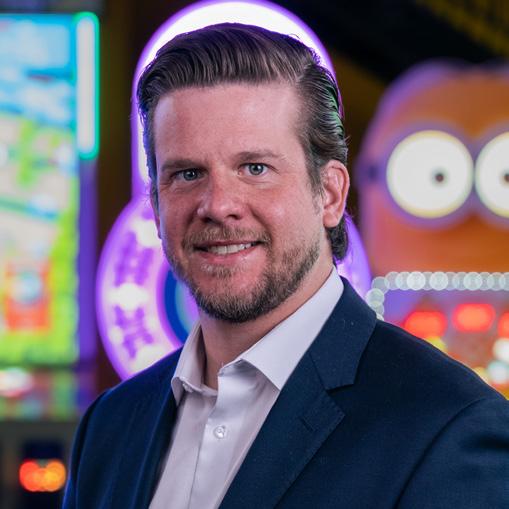


Jeff Todd Chief Development Officer Launch Family Entertainment
more than one location or territory most likely already possesses operational know-how. That’s a valuable commodity for all brands. Lenders also place a high premium on experience.
A meticulous evaluation
Launch started as a trampoline park in 2012. The concept gradually evolved to include something for every family member. There are trampoline courts, arcades, and rock-climbing walls. Add to that bowling, laser tag, ax throwing, a restaurant, a bar, and more. The brand found its niche in a diversified attraction mix.
“It’s full-family entertainment. A lot of entertainment focuses more on the adult—sports bar or things of that nature—or the child. There’s not typically a blending,” Todd says. “At Launch, parents can take their child there or have a birthday party there, but they can have a good time hanging out at the restaurant, having a beer or pizza, or going bowling with their kids. We create an environment that’s unique.”
It’s that unique vision that Launch is counting on to attract multi-unit franchisees as it expands its footprint.
“There are a handful of core benefits to going the multi-unit direction,” Todd says. “First and foremost, it’s a lot more simple to roll out operational and marketing programs to fewer owners. If you have 100 locations owned by 20 owners, that’s 20 phone calls or meetings to implement that strategy versus 100 locations with 100 owners. With fewer owners, you can be faster to market with certain programs, and that will allow for more consistent customer experiences.”
For franchisors, there’s another benefit to attracting potential owners who want to open multiple locations. “Typically, you’re going to structure it to where you have agreed-upon development schedules,” he says. “Looking into the future, you predictably know how many units you’re going to open up each year. And with that predictability, there’s faster growth.”
Faster growth doesn’t mean hasty growth. Launch is careful and thorough in the way it evaluates potential owners, Todd says.
Like other brands, the company seeks multiunit operators with several key qualities: financial stability, operational skills, leadership ability, and strategic vision. The brand doesn’t offer perks to sign on with Launch. “We believe our concept is compelling on its own,” Todd says.
On the flip side, multi-unit operators are looking for brands that have a stellar reputa-
tion among their franchisees, trusted leadership, good system-wide performance, and plenty of growth potential.
“When you’re working with someone to become a franchisee for one unit or for multiple units, you want to understand their history and track record just as they are evaluating Launch’s history and track record,” Todd says. “We’re going to look at their financial wherewithal not just to open a location, but to make sure they have capital reserves, multiple streams of income, and that they are in a strong financial position.”
All candidates go through a meticulous interview process. “I personally want to hear about their history with managing employees and creating culture as well as how they believe Launch will fit into their portfolio or how growing more locations will fit in,” Todd says. That includes “changes they’ll have to make to their business or to their lives. Because, right now, we all use our whole week, all of our hours. If you’re going to add something on, typically something needs to go. Whether you do that by empowering employees, creating systems, or delegating, there needs to be a plan for that.”
Todd likes to remind potential franchisees that there’s no hurry. “We believe in going slow,” he says. “Take your time, build it out correctly, find the right location. You don’t want to rush for sure.”
Over two decades, Walk-On’s Sports Bistreaux has grown from one restaurant next to Louisiana State University’s Tiger Stadium in Baton Rouge to 80 units primarily in the Southeast. The brand is still in growth mode. The goal is to increase the sports bar franchise’s number of units to more than 300 in the next five years, says Chief Development Officer Jennifer Striepling.
The team at Walk-On's believes its food sets it apart from the competition. Whereas consumers can watch a game anywhere, they can’t get food made from scratch at any sports bar, Striepling says. That attracts customers and franchisees.
“Food is the big driver for us—that fromscratch flavor profile with a touch of Louisiana,” she says. “Then there’s the family-friendly component. We’re not your typical sports bar.”
To expand its footprint, Walk-On’s is working on increasing brand awareness to spark interest from potential franchisees interested in
single units and multiple locations. The key is “putting restaurants in the right places,” Striepling says.
The brand’s aim is to fill out white space in the South while continuing to make inroads in other regions. Doing that might mean offering incentives to those interested in joining the brand. “It would depend on the deal structure, the territory, and the background of what they’re offering. It’s a tailored approach,” Striepling says.
Last year, a new CEO was brought in to shepherd the franchise. The first order of business for Chris Dawson was a listening tour to hear about existing franchisees’ experiences with the brand and to take in any suggestions. It was an important move because before a franchise can expand, it needs to make sure the people in its system are satisfied. Of course, potential multi-unit operators will be talking to current franchisees.
Striepling says Walk-On’s prides itself on providing franchisees with excellent support and resources. The brand is there to offer advice on every aspect of a franchisee’s journey, from “real estate all the way through to marketing, operations, training. Our level of support is unlike any other casual dining brand in the industry,” she says. “We are with that franchisee every day, every moment of the way. They know they can pick up the phone and say, ‘I need help. I need someone to come into this restaurant,’ or ‘I’m looking for some managers,’ or ‘I’m having challenges with this,’ and that level of support is throughout the organization in any facet of the business. They feel like they’re not alone. They’re truly part of the team.”
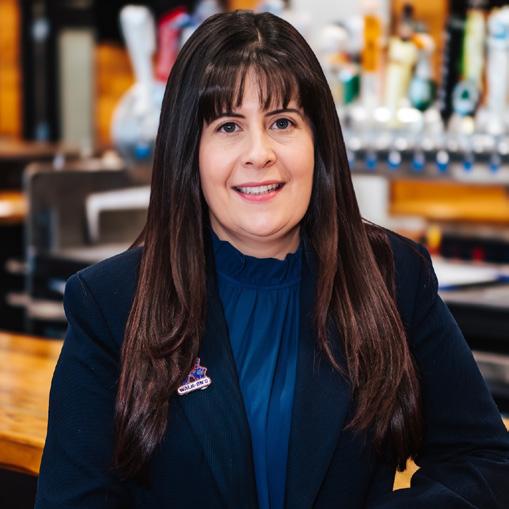


Jennifer Striepling Chief Development Officer Walk-On’s Sports Bistreaux
Regardless of what segment of franchising multi-unit operators might be exploring, they are all interested in one thing: success.
When it comes to that, PuroClean has an ace in the hole: a 3% failure rate.
The brand specializes in water and fire damage restoration as well as mold remediation and biohazard clean-up. By the end of the year, it will have 500 locations open in the U.S. and Canada.
“We call ourselves the paramedics of property damage,” says Vice President of Franchise Development Tim Courtney. Franchise operators “go in to save the day and put the property back to its preloss condition. It’s a feel-good business.”
Until five years ago, all of its franchisees were single-unit operators. Now, “we’re starting to see our fair share of multi-unit franchise owners and multi-brand franchise owners looking at this opportunity as a diversification play in their business,” Courtney says.
What’s the attraction for multi-unit operators? “It’s a recession-resistant business, which is driving a lot of interest,” he explains. “If gas goes to $20 a gallon, you might pull back on getting that massage or getting your nails done or eating out. But if you have water damage to your home—you have a mortgage—you have to fix it. Fire damage? You have to fix it.”
As PuroClean has worked its way up to becoming one of North America’s largest property restoration franchises, franchise operators have seen average annual gross sales exceed $1 million.
The brand’s goal is to open 80 new units a year. “Out of those 80 units that we shoot for, 12 to 18 are expansions, additional territories taken on by existing owners. Also, we probably do a handful of resales. We’re a 25-year-old brand. We do have an aging franchise community that’s exiting the business,” he says, “and they’re transitioning those franchises to new owners or existing franchisees.”
Most new franchisee candidates aren’t often looking for more than one territory. However, so far this year, eight existing owners have added territories. Those multi-unit operators are especially highly valued by PuroClean.
“You’re growing with somebody who’s already experienced at the brand,” Courtney says. “The ramp-up time on a new territory is drastically cut short. For the owners themselves, there’s a big advantage too. Let’s say



Tim Courtney
Vice President of Franchise Development PuroClean
their territories are contiguous, meaning that they can all fit together like a puzzle piece. They have the ability to centralize their own services. You can pretty much run almost like a hub and spoke. You can set yourself up with an administrative location. You can have one centralized warehouse location. You might have a few sublocations just based on how big those territories are, so you can quickly respond to water damage incidents or emergency services.”
When those owners are congratulated at brand conventions on their expansions, it can spark the interest of other existing franchisees, he says. Operators who ring up more than $1 million in mitigation revenue qualify for 50% off franchise fees for a second location and reduced royalty fees for the first three years.
“What better compliment does a franchisor have than when franchise owners want to buy more of what you’re offering?” Courtney says.
The work of enticing multi-unit franchisees begins long before any kind of formal inquiry, says Jennifer Durham of Hand & Stone Massage and Facial Spa.
It starts with making sure current franchisees feel satisfied and supported, which encourages them to open more spas or to refer other potential candidates. It continues when customers feel they’ve had a good experience, which sometimes encourages them to purchase their own location. “That is a really rich, fertile spot for us to pursue potential owners,” says Durham, the brand’s chief development officer.
In the 20 years since the brand started, the number of franchise units has soared to 550 in the U.S. and 60 in other countries. In the pipeline right now are 90 new locations, 60%
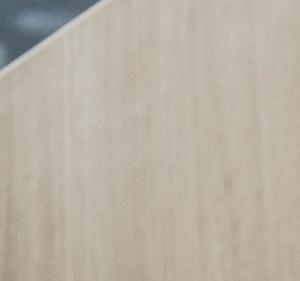









































APPROACH TO SERVICE




Electronic Movement of Data/QBO “Bridges”
Franchise Experts
ROBS Experts
Service Oriented-Access to Accountant Team
U.S. Based Production of Services
National Scope
Focused on Success, Not Moving Numbers













Jennifer Durham
Chief Development Officer
Hand & Stone Massage and Facial Spa
of which are owned by people who are already franchisees in the brand.
With the health and wellness industry continuing to explode, the franchise is seeking to expand its reach even more. “We have more than 1,300 available trade areas in the U.S. and Canada, so there’s plenty of room to grow,” Durham says. “We think that we can easily approach about 2,000 locations.”
Multi-unit operators gravitate to Hand & Stone for many reasons. One of those is “our average unit volume for our locations is about $1.4 million, and our competitors are at $1 million or below,” she says. “We really stand apart because we generate more revenue per location than our counterparts.”
The brand also offers a discount on franchise fees for those buying two or more locations. But the franchisor is careful in its evaluation of who can take on such a load.
“From a financial perspective, we do assess the capacity for someone who’s interested in multi-unit ownership,” including liquidity and net worth, Durham says. “We also look at their experience and what they bring. It’s always better to crawl before you walk and to walk before you run. We want to make sure that we’re setting them up for success.”
Right at Home will celebrate its 30th anniversary next year. The franchise provides inhome care and assistance for seniors and adults with disabilities.
Roughly 75% of Right at Home’s franchisees own more than one territory. But they aren’t allowed to buy in bulk. Two territories are the most that can be purchased at one time. If the
person meets Right at Home’s qualifications for acquiring two territories at the same time, the brand offers a 25% discount on the second territory’s franchise fee.
“Existing franchise owners go through a very formal expansion approval process because we want to make sure that their current business is moving right along before we move on to expanding and purchasing another territory,” says Jen Chaney, vice president for franchise development.
Sometimes, a franchisee’s current operation might show the person isn’t ready to take on more, and the application is denied regardless of financial ability.
“Our recruitment is really just for a single unit right out of the gate. From time to time, we do get very strong candidates who are in a wonderful position to purchase two territories instead of one,” she says. But prospective franchisees “go through a special review before they get approved to purchase two territories.”
That review includes a close examination of their leadership and management experience as well as a determination of how well capitalized they are and their passion for caring for seniors.
The priority is safeguarding the quality of care offered by Right at Home, Chaney says. “That’s always going to be top of mind,” she says. “At the end of the day, what is most important is that our franchisees and caregivers are providing the absolute best-in-class care that Right at Home is known for, making sure it’s the best that it possibly can be.”
Whether franchise brands have proven existing franchisees itching to grow or new multi-unit franchisees looking to expand into new brands, markets, and territories, multi-unit franchising is a hot commodity these days. There are, of course, exceptions, but multi-unit operators can offer numerous benefits to franchise brands and their growth strategies:
• Reduced risk.
Existing franchisees who are successful have a proven track record, lowering the risk of failure for the brand.
• Consistent brand execution.
Existing franchisees already understand the brand standards and how to implement them effectively as they seek to add locations or territories.
• Cultural fit.
Existing franchisees already share the brand’s values and passion. That means a smooth business relationship between franchisor and a growing franchisee.
• Less training and support.
Existing franchisees are already trained and have established successful business practices, requiring less ongoing support than new franchisees.
• Infrastructure.
Multi-unit operators typically have streamlined operational processes in place, allowing them to easily add brands/units and ramp up quickly.
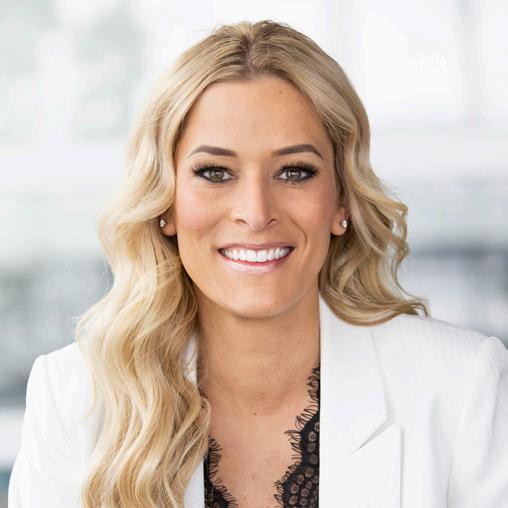


Jen Chaney
Vice President of Franchise Development Right
• Fewer operational issues. Multi-unit franchisees generally understand every facet of business operations, reducing start-up problems and bumps along the way.
• Lower costs.
Multi-unit franchisees generally require fewer resources and less attention from the brand than new franchisees. This can easily result in reduced operational, marketing, and training costs for the brand.
• Access to capital.
Banks are more likely to lend to multiunit franchisees with proven track records of success than to someone new to franchising.




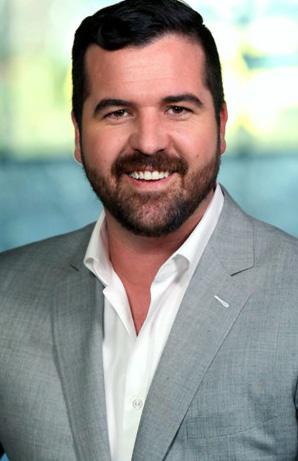
JORDAN WILSON
Senior Vice President, Franchise Development Authority Brands
At Authority Brands, we excel in recruiting and supporting multi-unit franchise owners. Entrepreneurs, whether looking to convert or expand their existing businesses with new franchise brands, are drawn to us because of our successful track record. Many see the value in joining a family of industry-leading home service franchises like ours as we offer a road map that can help them achieve success that features standardized processes, marketing strategies, and operational guidelines. We pride ourselves on our flexible and gradual growth approach, encouraging smart scaling so franchisees can expand at their own pace. We also offer additional territory discounts for those who choose to further expand down the line.
Many of our leads come from company conversions as these business owners seek help to scale or manage large territories. While some owners initially want to purchase several territories at once, we recommend starting with one to three, so they are in a better position to build a strong foundation. Some of our trade brands, like Benjamin Franklin Plumbing, One Hour Heating & Air Conditioning, and Mister Sparky, offer conversion programs with incentives. These can include deferred franchise fees for five years and potential fee forgiveness based on business performance. Participating franchisees may also be eligible to receive credits and discounts on vehicle wraps, marketing materials, uniforms, and signage to help get their businesses up and running.
We also recruit from within our existing franchise owner network, where multi-unit and multi-brand ownership is common. Many of our franchisees recognize the benefits of operating sister brands under the Authority Brands umbrella as a significant number operate three or more trade concepts. This approach has the potential to create synergies between brands, expand customer bases, share leads, and maximize referrals, all aimed at increasing revenue. Being part of a franchise also provides owners with a large network of like-minded individuals. We regularly host town hall meetings and events, both virtual and in person, where franchise owners can learn from successful multi-unit operators and replicate shared best practices in their own businesses. By encouraging and facilitating open dialogue, franchisees stay attuned to expansion strategies, which we believe is a key reason they continue growing with us. Additionally, we offer consistent comprehensive training, advanced technology, and safety protocols across our 16 franchise brands. This uniformity brings familiarity to franchise owners, assuring them of the extensive resources and unwavering support available to help them succeed.
Building strong franchisee-franchisor relationships is paramount in achieving recruitment goals.
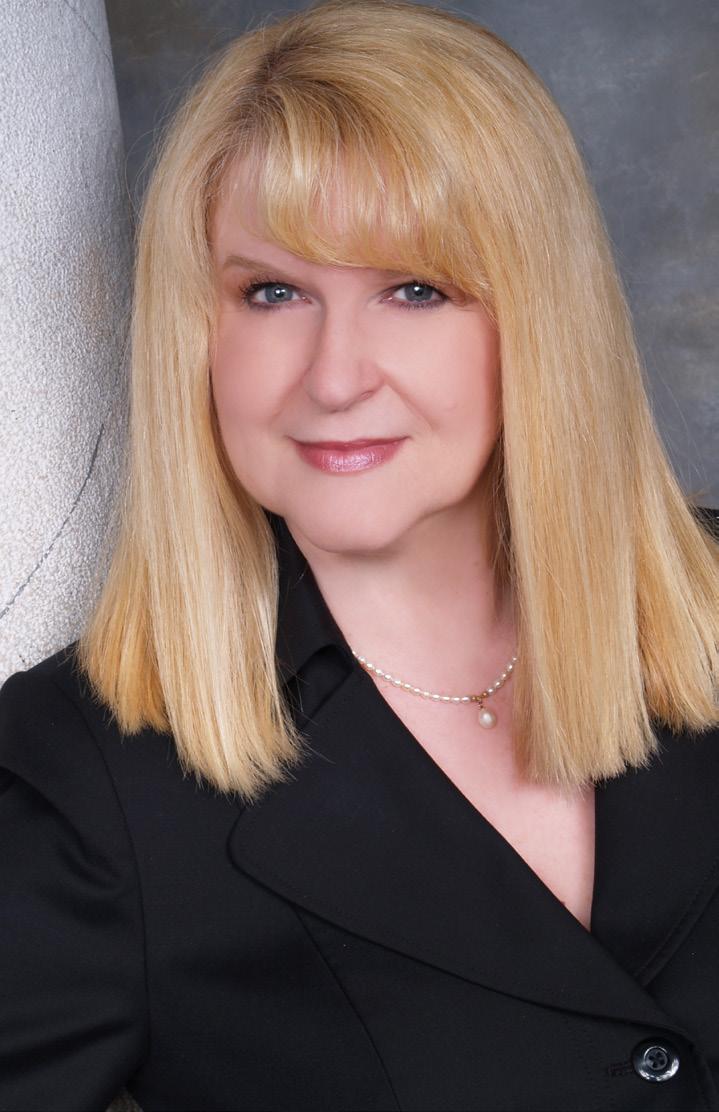
Senior Vice President of Franchising
With more than 25 years of experience in franchising and working alongside renowned global restaurant brands, I’ve gained a deep understanding of what multi-unit franchisees are interested in when considering their next investment. Across segments, owners and operators seek high-performing brands that align with their current portfolios and longterm goals. Strategic positioning of a brand to showcase the type of support and resources the franchisor can provide is crucial for long-term growth and recruitment.
Building strong franchisee-franchisor relationships is paramount in achieving recruitment goals. To interest qualified operators, we ensure those needs are top of mind. We’ve built a criterion that needs to be met to be considered, but first and foremost, we seek franchisees who are as passionate about Potbelly and our mission as we are—making guests happy through good vibes and great food. Genuine enthusiasm from our operators drives the quality of customer experiences and ensures the consistent delivery of our values.
Beyond that, we have focused our efforts on enhancing Potbelly’s recruitment pipeline through extensive real estate research and tech innovation to determine high-interest locations as well as operators who bring a proven track record of multi-unit management success, exhibit strong business acumen, and maintain reputable financial strength. Our investment in real estate innovation has
allowed us to provide various shop formats to fit the needs of any market, including endcap, drive-thru, in-line, and freestanding locations. We recently rolled out our smaller, digital-centric prototype, made to lower construction and lease costs. Each new prototype is enhanced with our digital kitchen, a digitized back line to streamline online ordering and pickup.
Backed by a strong leadership team with more than a century of combined experience, we use various recruitment channels to find ideal franchisees, including informational webinars held to detail growth opportunities and which markets remain a priority for expansion. We regularly engage in industry events and within local communities by hosting strategic in-market meetings to generate leads and continue fostering the relationships of interested operators to explore growth opportunities.
As operators grow with Potbelly, they receive significant operational support, including supply chain, field operations, extensive training, enhanced digital platforms, real estate, design, construction assistance, and comprehensive marketing support to generate local buzz in their respective markets.
Gaining continuous momentum, these focused strategies have allowed us to grow our pipeline of impressive operators and maintain interest throughout all stages of recruitment as we scale nationwide.
Our strategic focus on multi-unit franchisees with proven operational expertise is a key driver of our growth at Qdoba.
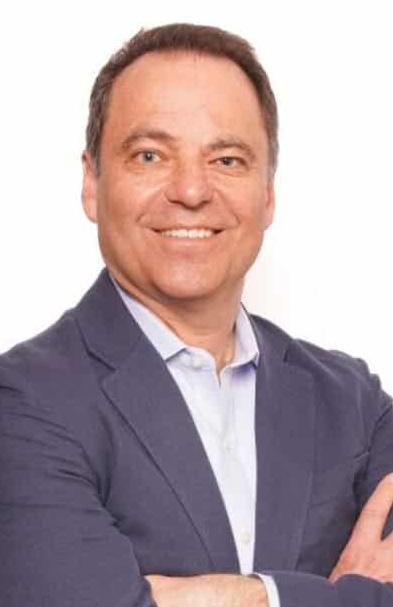
Chief Development Officer Qdoba
At Qdoba, our strategic approach to identifying, targeting, and recruiting multi-unit franchisees is a cornerstone of our growth strategy. We seek franchisees with a proven track record in the industry, specifically those experienced in managing multiple locations. Key attributes we look for include operational expertise, financial capacity, a growth-oriented mindset, and alignment with Qdoba’s brand values and culture.
Building strong relationships is key to identifying and recruiting qualified multi-unit franchisees. We leverage our industry network through conferences, expos, and associations while also employing data-driven marketing and digital outreach—targeted social media, email marketing, and online advertising—to attract potential candidates in high-growth markets. Existing franchisees and industry partners are encouraged to provide referrals, further strengthening our pipeline. Once interest is sparked, our development team takes over, providing in-depth information about the Qdoba brand: its diverse menu, strong market presence, and comprehensive support system. Personalized meetings are then arranged to delve into the goals and expectations of each prospective franchisee, ensuring a perfect fit for both parties.
Thorough due diligence is conducted to evaluate financial stability, operational history, and market potential of prospective franchisees, ensuring they meet our stringent criteria for multi-unit ownership. Qdoba offers a virtual discovery day to prospective franchisees as an exclusive opportunity to meet the team, delve into the brand’s unique offerings, and have all their questions answered. Once they are approved and the franchise agreement has been executed, franchisees receive comprehensive support: site selection assistance, training programs, marketing support, and ongoing operational guidance.
Franchisees are drawn to Qdoba for several compelling reasons. The flexible restaurant formats we provide allow for a variety of location options, from traditional storefronts to nontraditional venues. Our innovative and customizable menu appeals to a wide range of customers, driving repeat business and fostering customer loyalty. Additionally, the comprehensive support we provide ensures our franchisees have the tools they need to succeed. This approach ensures we build a strong, committed franchise network that drives our brand forward, enhancing our market presence and achieving sustained growth.















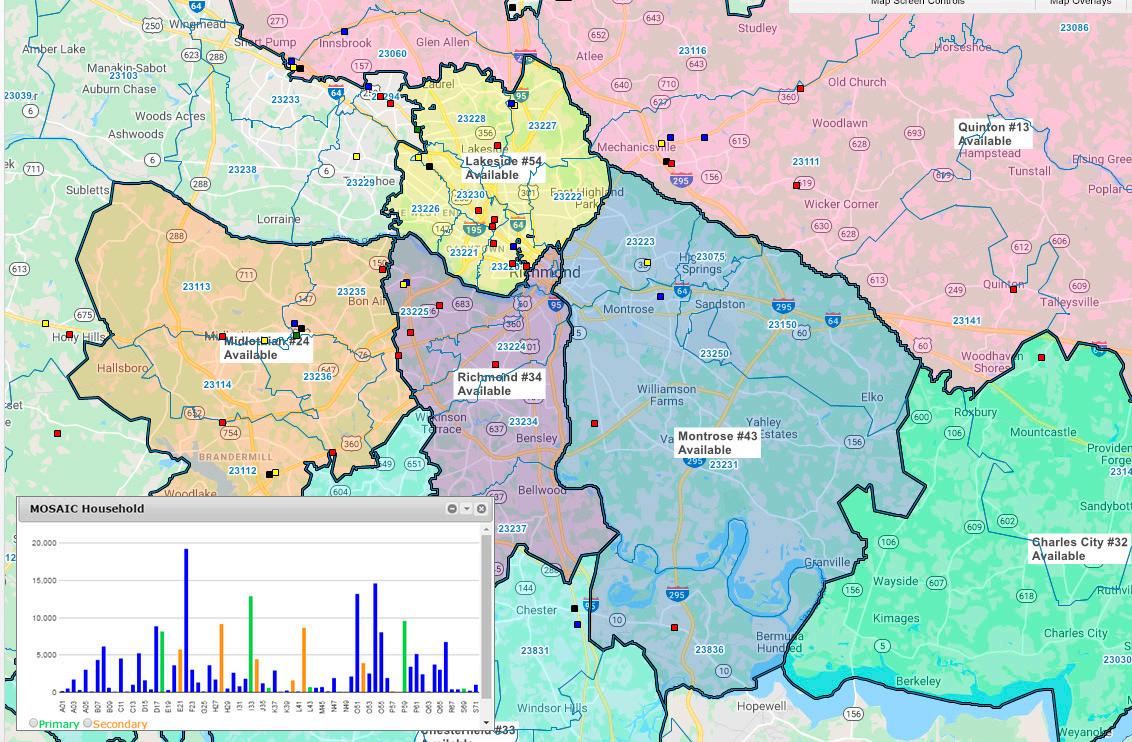



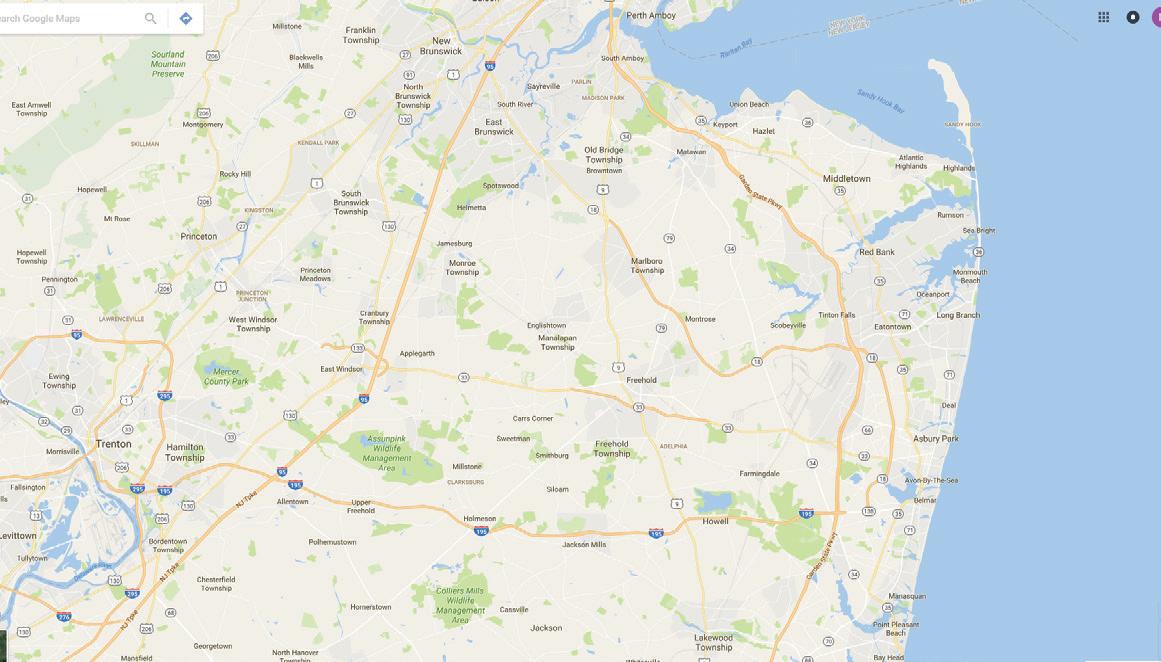
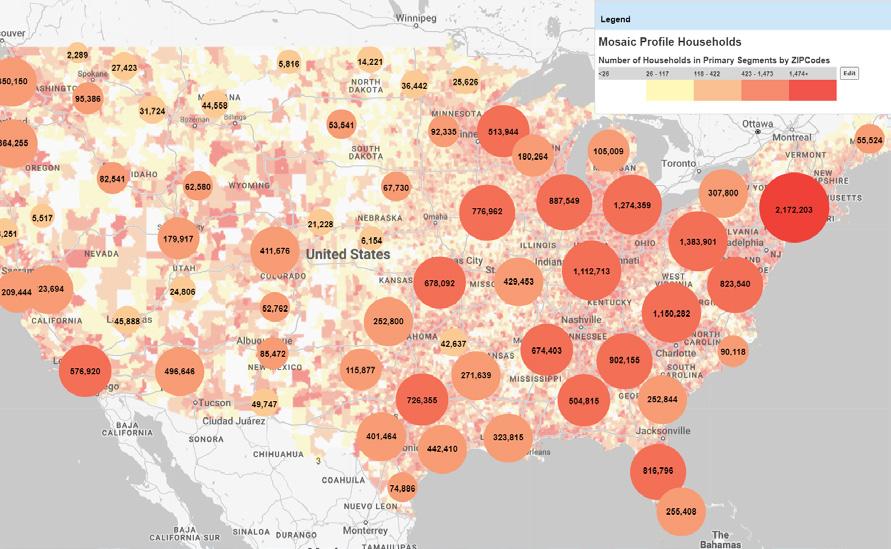

From detailed customer profiling to precise market analysis, Gbbis provides comprehensive support to help you achieve your growth objectives.
• Tailor our powerful analytic solutions to meet your specific goals and challenges.
• Maximize revenue and operational efficiency with our advanced territory management tools.
• Identify and select the best locations for your franchise, ensuring each site reaches its full potential.
Ready to take your franchise to the next level? Contact us today and let’s discuss how Gbbis can help you achieve your goals.

October 16 - 18, 2024 | Atlanta, GA Visit Gbbis at Table #22

Our franchisees receive extensive training and support, ensuring they deliver our chef-driven menu and attractive bar program with excellence.
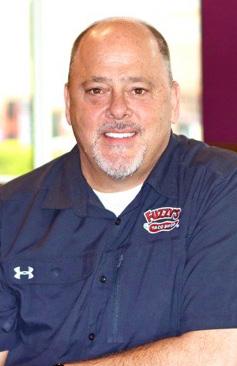
PAUL DAMICO Chief Executive Officer
Fuzzy’s Taco Shop
As a fast-casual-plus Mexican restaurant concept with a full bar and three dayparts, we offer multi-unit franchisees the ability to fully capitalize on their investment and to join a very on-trend brand with tremendous opportunity for growth in new markets nationwide.
We’ve focused our recruitment efforts on multi-unit franchisee groups with a proven track record in the restaurant and hospitality industries that possess the financial strength and operational expertise to manage multiple locations. We strategically source qualified candidates with a deep understanding of their respective markets through a presence at key industry events. We use targeted market outreach through both digital and PR efforts, and we tap our industry networks to identify qualified operators eager to expand their portfolios with us.
We offer a variety of shop models for operators, including our traditional prototype, smaller footprint taqueria, and a freestanding drive-thru, allowing more flexibility as real es-
tate concerns stay top of mind. Our franchisees receive extensive training and operational support, taking operators through tried and tested processes, like recipe preparation and working in our taco production kitchen. We work closely with our franchisees to equip them with our ingredients and supplies to deliver our Baja-style, chef-driven menu and attractive bar program we’re known for.
Fuzzy’s was acquired by Dine Brands in December 2022, so franchisees also benefit from a dynamic brand leadership team and bestin-class restaurant support center that serves nearly 3,600 restaurants globally across three leading restaurant brands. And we’re just beginning to realize the interest in Fuzzy’s from other existing Dine Brands franchisees.
Fuzzy’s today has nearly 130 locations open in 18 states and is gaining momentum in the fast-casual-plus segment, enticing qualified prospects who share the same passion and commitment to growth.













Written by EVAN HACKEL
The integration of artificial intelligence (AI) into franchising is reshaping the industry. As franchisors and franchisees adapt to the evolving digital landscape, AI is becoming a pivotal tool for enhancing efficiency, improving customer service, and driving growth.
AI is increasingly embedded in common software programs, providing powerful tools for data analysis, process automation, and decision-making:
• Operational efficiency. AI-powered software can automate routine tasks, such as inventory management, scheduling, and bookkeeping. This reduces human error and frees up time for franchisees to focus on strategic activities. For example, AI can predict inventory needs based on historical sales data.
• Predictive analytics. AI algorithms can analyze vast amounts of data to identify trends and patterns that might not be apparent to human analysts. This allows franchisors to make data-driven decisions about marketing strategies, product offerings, and expansion plans. Predictive analytics can forecast customer demand, optimize pricing strategies, and predict potential issues before they arise.
• Integration with everyday software. AI functionalities are becoming part of everyday tools, like Microsoft Outlook and CRM systems, enhancing email management, scheduling, and customer interactions and helping franchisees manage communications and operations efficiently.
AI is transforming franchise training programs by providing personalized, on-demand learning:
• Virtual training assistants. AI-powered virtual assistants can guide new franchisees through the training process,
providing instant answers and relevant resources. Personalized support ensures that franchisees receive the information they need.
• Customized learning paths. AI can analyze a franchisee’s progress and performance to tailor training programs to their specific needs. It can recommend targeted learning modules and resources.
• Selection of franchise candidates. AI can play a crucial role in selecting the right candidates to buy franchises. By analyzing data from applications, social media profiles, and previous business experiences, AI can identify candidates who are likely to succeed.
As franchising becomes increasingly global, effective communication across different languages is crucial. AI-powered language translation tools enable seamless communication between franchisors and franchisees worldwide:
• Real-time translation. AI-driven translation tools can provide real-time translation of documents, emails, and live conversations, ensuring that franchisees, regardless of their native language, can access the same information and participate fully in the system.
• Localized content. AI can help create localized marketing and training materials that resonate with different cultural contexts. By identifying regional nuances and preferences, AI ensures that content is accurate and culturally relevant.
AI is revolutionizing customer service by providing fast, personalized, and efficient support:
• Chatbots and virtual assistants. AI-powered chatbots can handle everything from answering frequently asked questions to assisting with order placements. Virtual assistants are available 24/7.
• Personalized customer interactions. AI can analyze customer data to provide personalized recommendations and offers. By understanding individual preferences and behaviors, AI can tailor interactions to meet specific needs.
One of the most exciting developments in AI is its ability to help franchises build comprehensive reference libraries, which are invaluable resources:
• Content management systems. AIpowered content management systems can organize and index vast amounts of information, making it easy for franchisees to find what they need.
• Knowledge sharing. AI can facilitate the sharing of best practices and success stories by identifying strategies that work and spreading the knowledge throughout the system, benefiting all franchisees.
The future of franchising is intertwined with the advancements in AI. From enhancing operational efficiency and improving customer service to breaking down language barriers and building robust content libraries, AI is transforming the way franchises operate. As we move through 2024 and beyond, franchisors and franchisees need to embrace these innovations to stay competitive and drive success. The integration of AI into franchising is not just an opportunity but a necessity. By leveraging AI, franchises can enhance their operations, deliver superior customer experiences, and foster a culture of continuous improvement. The AI revolution in franchising is here, and those who adopt it will lead the way into a new era of growth and prosperity.
Evan Hackel is CEO of Ingage Consulting and Delta Payment Systems and an advisor to Tortal Training. He is a thought leader in the fields of leadership and success and an author, speaker, and entrepreneur who has been instrumental in launching more than 20 businesses. He has managed a portfolio of brands with system-wide sales topping $5 billion. He is the creator of Ingaged Leadership and author of <Ingaging Leadership Meets the Younger Generation.> Reach him at ehackel@ingage.net, 781-820-7609, or www.evanhackel.com.


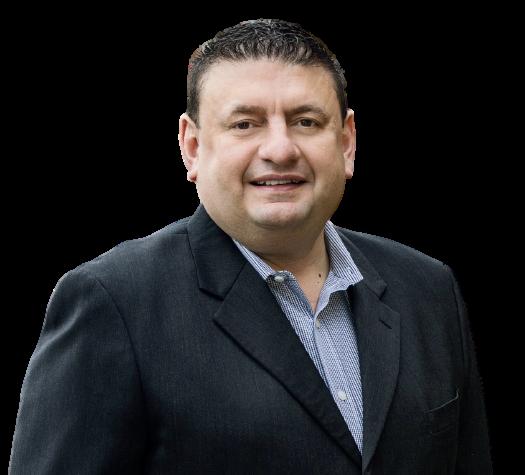
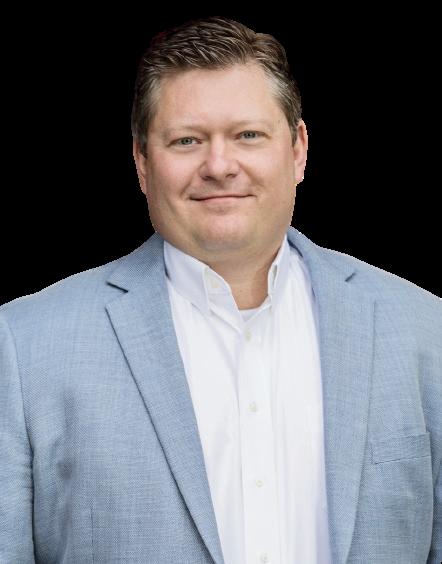


Written by PAUL WILBUR
As you might expect of someone personally involved in franchise research, I’ve watched carefully how artificial intelligence tools like ChatGPT are transforming the way franchises can gain insights into their franchise operations. FRANdata has been offering such insights for years, and we have embraced these technologies to help our clients understand their businesses better, stay competitive, and drive growth. However, while AI offers numerous advantages, it also presents some challenges that we need to navigate carefully.
One of the most exciting benefits of AI tools is their ability to handle vast amounts of data. Traditional methods often struggle with the sheer volume and variety of data that franchises generate. AI can process this data seamlessly, integrating information from various sources to provide a comprehensive view of operations. For example, a hotel brand may use AI to analyze guest preferences and behaviors across its entire system, allowing the company to personalize guest experiences and enhance operational efficiency. That sort of global analysis would have been a major initiative a decade ago if it was possible at all.
What’s more, as promised by the hype, AI-driven data analysis is typically faster and more cost-effective than traditional methods. Automation reduces the need for extensive manual data processing, saving time and labor costs. AI tools can quickly identify patterns and trends, delivering insights that would take much longer to uncover using conventional approaches.
AI can provide a deep understanding of customer sales patterns and store operations. By analyzing sales data and customer feedback, franchises can identify popular products, peak sales times, and customer preferences.
Franchise operations can benefit from this analysis too. Support and compliance can monitor franchisee operations and ensure ad-
herence to brand standards. AI’s ability to perform predictive analysis can allow these teams to foresee potential problems and address them proactively.
AI tools can also help a franchise analyze competitive data, providing valuable insights into how other franchises in the industry are performing. This includes benchmarking performance against competitors, identifying market trends, and understanding competitive positioning.
AI’s advanced capabilities, such as web scraping and social media analysis, can uncover new sources of information for this sort of comparison. By analyzing online reviews, social media posts, and competitor websites, AI tools provide a comprehensive view of the competitive landscape. This approach helps franchises stay informed about industry trends and customer sentiment.
Again, while this sort of analysis has been used before, now it is faster, cheaper, more comprehensive, and available as needed.
Because of franchising’s unique business model, AI cannot completely understand it. There are some serious limitations to the analysis that these tools can do for a franchise.
First and foremost is the difficulty of getting access to the data these tools need. Even if all FDDs were available to everyone, which they are not, we know that while the FDD provides some information, it’s often not detailed enough for in-depth analysis. Every franchise system has its unique qualities, and the data in an FDD often needs contextualization in order to truly understand what it is telling us. We invest a lot of time understanding the limitations and misinterpretations of franchise data. Further, the risk of AI hallucinations is real.
The major headlines that we all read about industry trends usually comes from gigantic research groups trying to analyze data (often incorrectly) from a handful of publicly trad-
ed brands, but the vast majority of franchises are privately held and do not publish extensive data that publicly traded companies are required to produce, limiting the availability of public information. Furthermore, public data only covers the franchisor and company units, ignoring all private company franchisees, something AI would struggle to understand. Finally, smaller brands have less of an online presence than larger brands, complicating web scraping. Without all this data, it is difficult for AI to produce an accurate and meaningful competitive and industry analysis.
FRANdata has been actively using AI and learning its limitations. We realized long ago that primary research must be done to understand the complete picture of a franchise system and its peers. This includes conducting surveys, interviews, and field studies to gather firsthand information that complements AI-driven insights.
AI tools offer significant advantages for franchises looking to gain deeper insights into their operations and competitive landscape. They are helping us to analyze large data sets, deliver real-time analysis, and offer cost-effective solutions for comprehensive data analysis. However, challenges of limited data (on franchisees in particular) and misleading and often bad information drive a necessary need for primary research to fully leverage AI’s potential. At FRANdata, we believe that by combining AI-driven insights with traditional research methods, franchise systems can enhance their operational efficiency, improve customer satisfaction, and maintain a competitive edge in the market.
As COO of FRANdata, Paul Wilbur is instrumental in building the research and consulting framework at FRANdata. He plays an integral role in the strategic development of FRANdata’s suite of franchise solutions. Nearly a 20-year veteran at the company, he is the franchise business model expert and plays a key role in fostering strategic advisory relationships with some of FRANdata’s biggest clients.



Help for growing your franchise across the globe
Written by WILLIAM EDWARDS AND ROBERT JONES

Expanding your franchise into new countries can be filled with opportunities and challenges. With the right resources, a solid plan, and a long-term commitment, you can navigate different cultures, regulations, and market dynamics. We’ve compiled a guide to essential resources and strategies for franchisors looking to expand internationally.
The U.S. Commercial Service is a primary resource, offering a range of free and low-cost services. Its Gold Key Service provides customized appointments with prescreened potential licensees while the International Company Profile (ICP) offers background checks on potential partners. It can also organize promotional events, like franchise market entry launches, through the Single Company Pro -
motion service and provide tailored insights into market opportunities through customized market research.
Other valuable government resources include the Small Business Administration (SBA.gov), which offers counseling, training, and financial assistance through export loan programs and Small Business Development Centers (SBDCs). U.S. Export Assistance Centers (USEACs) provide localized export assistance across the U.S. while the State Trade Expansion Program (STEP) offers grants to help small businesses cover costs associated with international expansion.
Online platforms, like Export.gov and Trade.gov, provide tools, information, and services to assist U.S. businesses in international markets. The U.S. Department of

“ SUCCESSFUL INTERNATIONAL EXPANSION OFTEN REQUIRES ADAPTING YOUR BRAND, PRODUCT, OR SERVICE TO MEET LOCAL TASTES AND PREFERENCES. THIS MIGHT MEAN MODIFYING MENUS, PRODUCTS, OR SERVICES TO CATER TO LOCAL PREFERENCES, AS EXEMPLIFIED BY MCDONALD’S OFFERING VEGETARIAN OPTIONS IN INDIA.”
State offers country-specific information on economic conditions, market opportunities, and regulatory environments in its Country Commercial Guides.
The International Franchise Association (IFA) is an indispensable resource for U.S. franchisors looking to go global. Through webinars, white papers, industry reports, educational resources, and legal guidelines, the IFA keeps franchisors informed about best practices and regulatory changes. IFA’s networking events and conferences provide opportunities to connect with peers and experts.
The World Franchise Council (WFC) serves as a bridge to 40 local country franchise associations, offering insights into local regulations, market conditions, and cultural nuances. These associations can assist with market entry strategies, regulatory compliance, and local market insights.
Successful international expansion often requires adapting your brand, product, or service to meet local tastes and preferences. Localization involves tailoring your entire business approach to align with cultural, legal, and economic differences. This might mean modifying menus, products, or services to cater to local preferences, as exemplified by McDonald’s offering vegetarian options in India and Denny’s offering beef or turkey bacon in the Middle East.
Compliance with local regulations is crucial and may involve adapting product formulations to meet local health standards or modifying packaging to comply with labeling laws. Working with local partners can significantly ease this process, providing insights into consumer preferences and helping navigate regulatory requirements. Localization companies can ensure that marketing materials, customer service scripts, and product names resonate with local audiences.
Understanding cultural differences is essential for international franchise success. Resources like the book Kiss, Bow, or Shake Hands by Terri Morrison offer insights into business etiquette, customs, and practices across cultures. Euromonitor International, Economist Intelligence Unit (EIU), Dun & Bradstreet, Kroll, and Nielsen provide market research reports and data analytics to inform your strategy.
International trade shows and expos offer networking opportunities. Franchise Expo Paris and the International Franchise Expo New York can help you connect with potential partners and gain market insights.
Franchise management software can help manage operations and track performance across international locations. FranConnect and FRM (Franchise Relationship Management) offer platforms for international franchisee onboarding, training, performance analytics, and marketing automation.
Proven international operations and development consultants bring specific knowledge of new markets and offer advice on site selection, market entry strategies, consumer behavior, competitive landscapes, and local business practices.
Legal, tax, and accounting advisors with documented international experience are essential. While legal fees can be significant, these services are crucial for drafting franchise agreements, ensuring compliance with local legal requirements, and mitigating legal risks.
Partnering with global logistics providers involves significant investment but ensures efficient supply chain operations, timely delivery of products, reduced costs through optimized logistics, and consistent product quality.
Accessing reliable information on international markets is vital. The Economist, Finan-
cial Times, Bloomberg, and Harvard Business Review offer comprehensive global reports. Caixin Global provides insights into doing business in China while the World Bank and International Monetary Fund offer detailed reports on economic conditions and investment climates worldwide.
Success in international franchising requires thorough market research, cultural adaptation, legal compliance, strong local partnerships, and technology integration. It’s crucial to establish a reliable global supply chain and stay informed about global trends and market changes. Above all, patience and long-term commitment are essential. This is not a shortterm revenue source!
Expanding a franchise internationally is a complex process. By strategically leveraging these resources and understanding cultural differences, franchisors can overcome challenges and achieve sustained success. There are no shortcuts that don’t lead to increased legal costs over time. With the right approach, resources, and support, international franchising can lead to substantial growth, global brand recognition, and financial success.
William (Bill) Edwards, CEO of Edwards Global Services (EGS), and Robert (Bob) Jones, EGS’ chief international officer, have a combined eight decades of helping many companies across diverse sectors successfully expand their businesses to more than 30 countries. For current country rankings as places to do business, download the EGS quarterly GlobalVue™ country chart at https://edwardsglobal.com/globalvue. Subscribe to EGS’ biweekly global business update newsletter for the very latest global business trends that can impact your business at https://insider. edwardsglobal.com. Contact Bill to evaluate your international franchise opportunities and challenges at +1-949-375-1896 and bedwards@edwardsglobal.com

Franchisors
Ignite Franchise (formerly IDS) is an award-winning digital marketing agency with a strong track record of success, having partnered with dozens of franchise brands and supported hundreds of franchisee locations. Our solutions are designed to elevate your brand's visibility and expand your franchise network, while our localized marketing tactics ensure your franchisees attract the right audience to drive growth and success. Our Services
Search Engine Optimization
Public Relations
Content Marketing
Social Media Marketing
Dashboard Reporting

Written by ART COLEY
Understanding the nuances between setting targets and accurate forecasting can make or break your brand’s success. Setting realistic targets and mastering accurate forecasting are not just optional skills; they are critical components of any successful franchise recruitment strategy. By distinguishing and implementing both, you can revolutionize your recruitment efforts and secure your brand’s future.
Targets are your ambition made clear, a declaration of your recruitment aspirations. Forecasts are your reality check, grounded in data and trends. They offer a prediction of future results based on current and historical data. They are not just numbers but a narrative of what your brand can realistically accomplish in the given time frame.
Targeting and forecasting are like heading to a destination and watching your speedometer and Google Maps. The time you want to arrive is your target. The time you’ll actually arrive, provided by Google, is the forecast.
Many franchises fail to distinguish between targets and forecasts, leading to misaligned strategies and disappointing outcomes. From various industry reports, hundreds of assessments we’ve conducted, and experience, only about 10% of franchise companies will achieve their recruitment goals this year. That means nine out of 10 brands will miss their signing and revenue goals for franchise development. In other words, 10 brands will line up at the bottom of Mount Kilimanjaro, but only one will reach the summit.
Failing to differentiate between targets and forecasts can have severe repercussions. Brands risk disappointing stakeholders, wasting resources, and getting stuck in the relentless cycle of ineffective recruitment strategies. I call it the merry-go-round of frustration and missed opportunities. A brand begins the year excited to hit aggressive targets. The mantra is, “This year will be different!” But by the end of Q2, most
are way off the mark, and nobody really knows why. And then they start to treat symptoms vs. root causes. Or worse, they start looking for the proverbial silver bullet that will turn everything around.
Conversely, consistently hitting goals and targets can create energy for your culture, driving excitement. Strong development rejuvenates your brand and makes a significant impact on recruitment, setting a solid pace for the next three to five years of royalty and EBITDA growth.
To break free from a disappointing merry-go-round, set manageable targets and use forecasting to diagnose your strategy’s efficacy.
Break it down
Targets are aspirational yet achievable goals that your franchise aims to hit within a specific time frame. They provide direction and motivation. For example, setting a target of recruiting 20 new franchisees in a year gives your team a clear objective to work toward.
Forecasting, in contrast, is a strategic process that involves analyzing your data, market trends, and other relevant factors to predict future outcomes. Forecasts are grounded in reality and offer a data-driven estimate of what is likely to happen. If your target is to sign 20 new franchisees over the next 12 months and a reliable, proven data forecast is predicting 15, you can adjust. But if you don’t have the forecast tools and lack the understanding of how to read a forecast to conduct root-cause analysis on the gaps and voids, you are driving without directions. You’re likely going to join the 90% who don’t achieve annual recruitment targets.
Here’s how you can start to align your targets and forecasts more closely with reality:
• Review baseline metrics. Analyze conversion rates and sales cycles to get an accurate picture of outcomes. If it takes six months from lead to a new franchisee signing, you should have an accurate six-month forecast.
• Understand market conditions. Your forecast isn’t just about your brand; it’s about the world your brand operates in. Economic indicators, trend analysis, and marketing opportunities should all feed into your forecasting model. A strong manager or leader can look at these factors and consider things the algorithms won’t see.
• Set clear, actionable targets. Your targets should be more than wishful thinking. They need to align with the reality of the details even if they’re partially based on emotion or aspiration. Clarity makes them more tangible and your team more accountable.
• Regularly review and adjust. Targets and forecasts are not set in stone. They should evolve with an understanding of your brand’s performance and the market. Regular reviews allow you to adjust your strategies in real time, staying agile in the face of change.
As we approach the end of Q3, it’s the perfect time for reflection and forward planning. How close are you to your targets? Are your forecasts proving accurate?
Ask the harder questions: Are your goals realistic? How are you setting your targets, and are they based on solid data? Can you forecast the next 90 days with confidence? If you know you need more step ones or applications, you can focus on training and coaching to improve those areas. You’re not looking for a silver bullet; you’re watching and managing your numbers.
These questions aren’t just about accountability; they’re about laying the groundwork for future success. Knowing where you’re heading is just as important as understanding how you’ll get there.
Let’s go to work!

Art Coley is CEO of CGI Franchise. Using the proven Recruitment Operating System (ROS), Art and the ROS Support Team help franchise companies implement and execute a predictable, repeatable, and sustainable franchisee recruitment program. The company is based in Temple, Texas, and works with brands worldwide. Contact Art at acoley@cgifranchise.com or 281-658-9409.

Stop fielding all the day-to-day and repetitive questions from your Zees.
The all-in-one AI Support Assistant for your Zees.
Unleash the full potential of your content and coaches.
1
Not another file management platform. Trained exclusively on your content, directly from wherever it lives.



2
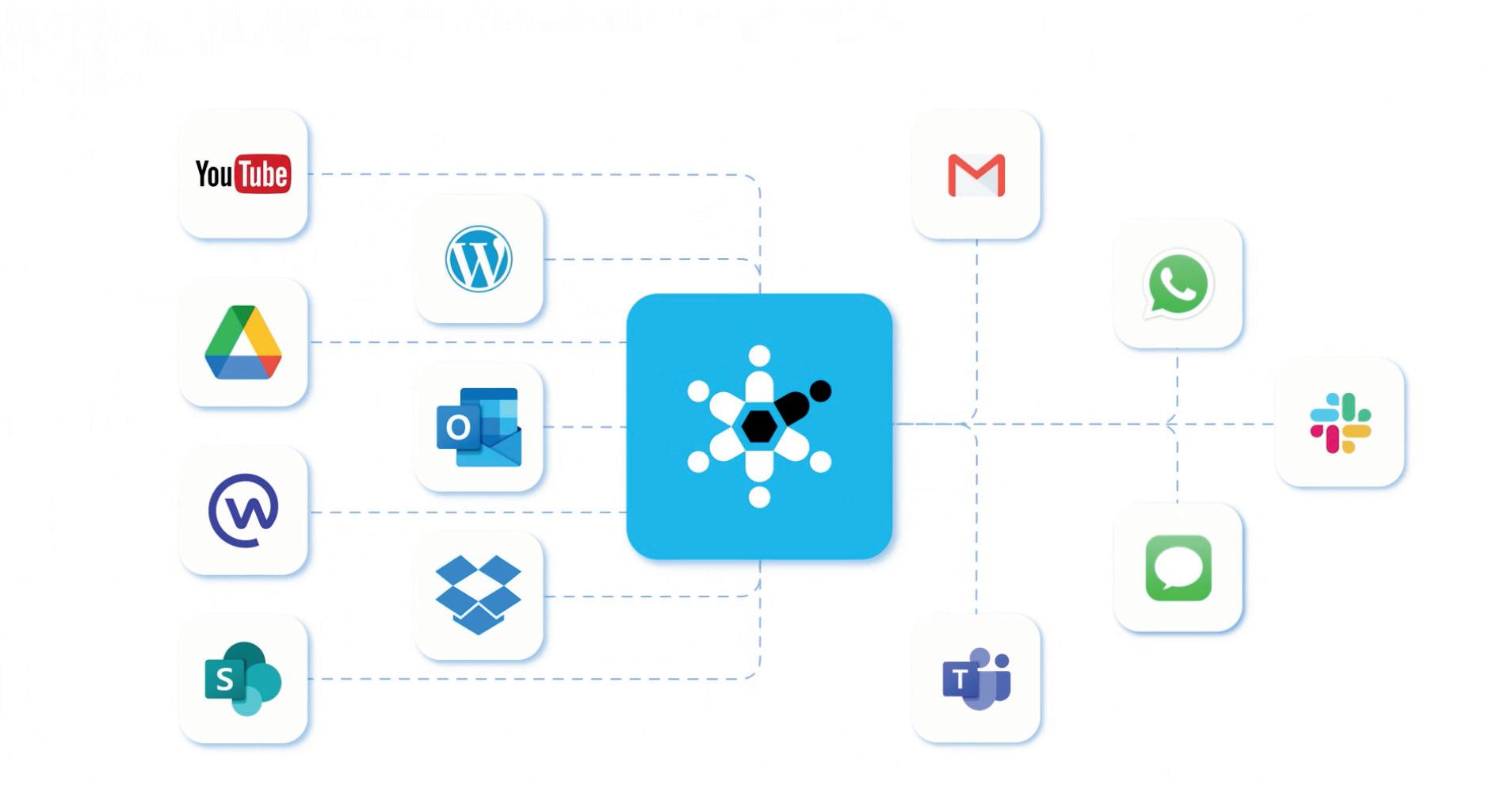
4

No behaviour change required. Zees continue to receive support how they're used to.
3
Provides insights on how your content is being utilized at scale. Intelligent ticketing workflow.
Know your content effectiveness and gaps.
“EZee Assist's solution and desire to solve problems has made them a key partner for EverLine. I am proud to say that our franchisees have embraced this technology.” - John Evans, CEO, Everline Coatings Trusted by leading brands in franchising.

Loops in your FBCs only when it matters most. For inquiries and product demo, please contact: sales@ezeeassist.com www.ezeeassist.com











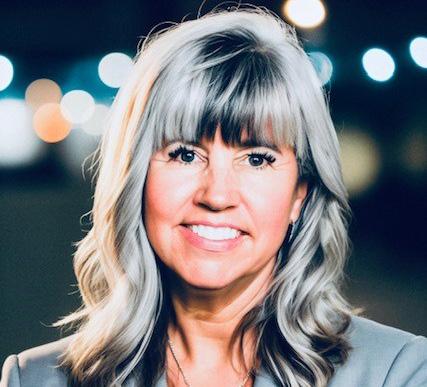
January 23-24, 2025
Palm Beach Atlantic University

CEO, Loyalty Brands
KEYNOTE SPEAKERS
























SEPT. 6 - 7, 2024
SEPT. 6 - 7, 2024
Fort Lauderdale, FL
Fort Lauderdale, FL




FEB. 28 - MAR. 1, 2025
FEB. 28 - MAR. 1, 2025
Los Angeles, CA



NOV. 15 - 16, 2024
NOV. 15 - 16, 2024
Austin, TX
Austin, TX
APR. 4 - 5, 2025 Charlotte, NC
Los Angeles, CA APR. 4 - 5, 2025
MAY 29 - 31, 2025
MAY 29 - 31, 2025 New York, NY
New York, NY


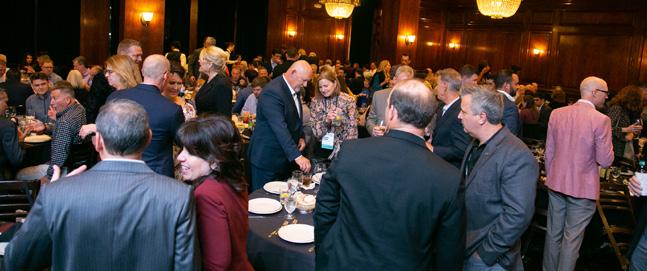

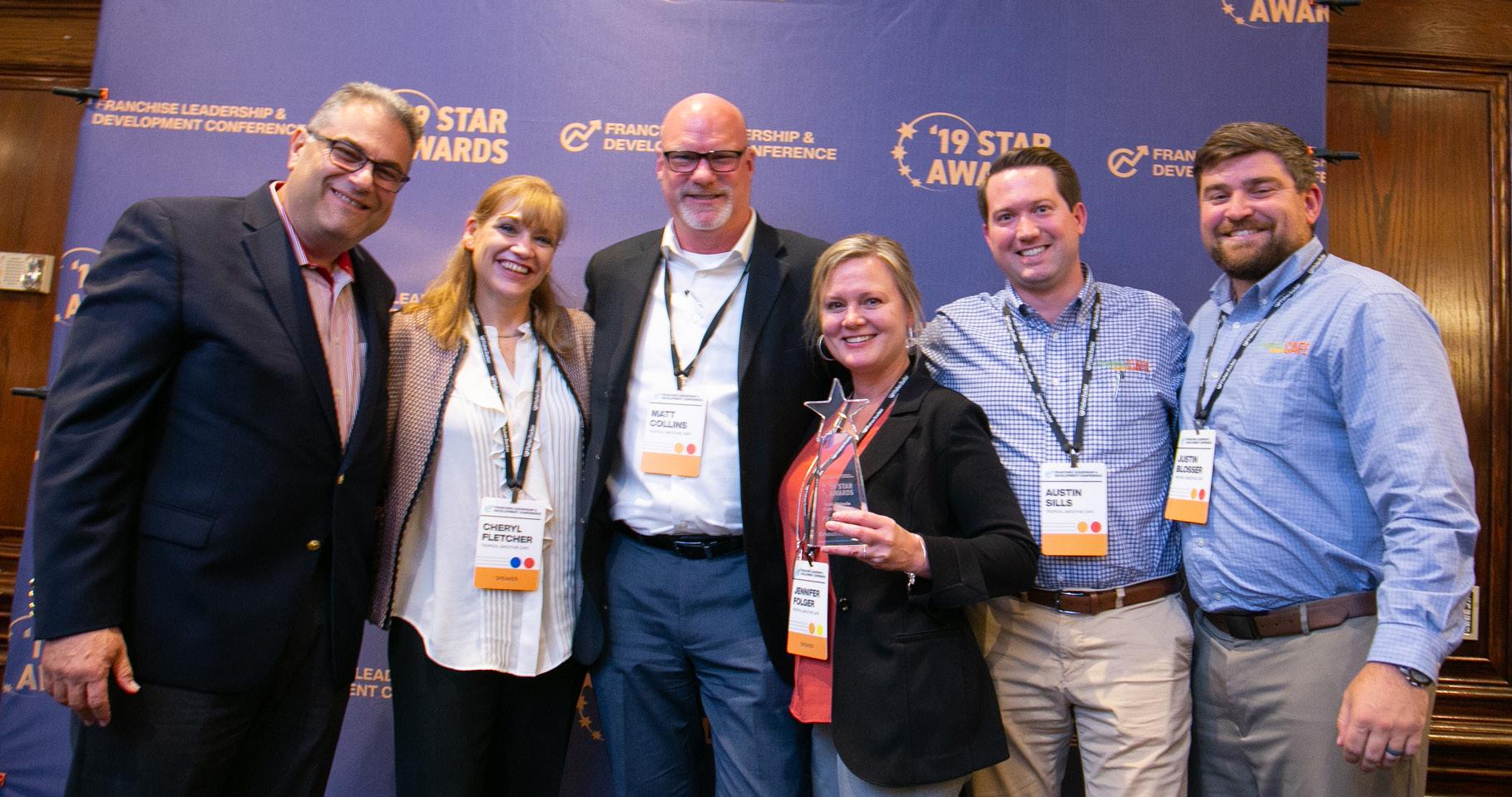
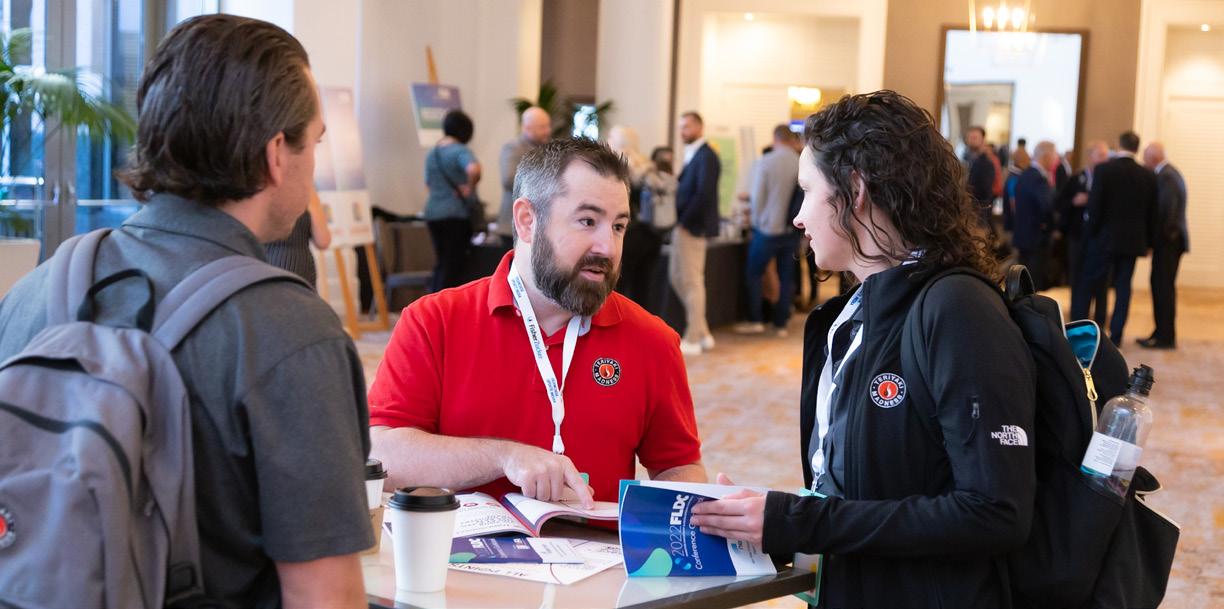

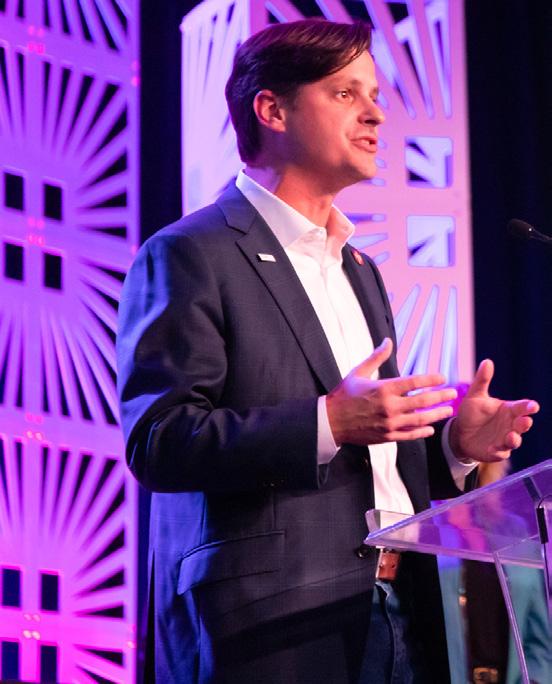
This year marks the 25th anniversary of the Franchise Leadership and Development Conference. A lot has changed since we first met in San Jose, CA in the fall of 1999. Back then, our goal was simple: to create a unique space where franchise development leaders could learn and grow – together.
Over the years, with the input of our franchisor advisory board and involvement of attendees, we’ve innovated new ways to grow this event, from creating the Annual Franchise Development Report to the STAR Awards to the CEO Summit.
We strive to learn from you in this rapidly evolving industry – but there’s one thing we know for sure. In Franchising, we grow our learning, our network and our brands with the support of this community. It’s been our honor to host an annual gathering of the best and brightest leaders in franchising, focused not just on their own brand’s growth – but supporting each other, too.
And we’re just getting started. We know that tactics to grow a brand 5 years ago might work tomorrow, we also know the timeless value of making trusting connections with prospects, leading a team authentically and adapting to change.
So that’s what we’re building for your 2024 Franchise Leadership and Development Conference. Expanding on winning strategies learned over 25 years and bringing you new ideas for growth.
Welcome to FLDC 2024: The Foundation for Your Future.
Gary Gardner, Founder & Chairman & Therese Thilgen, Founder & CEO Franchise Update Media
Register Today and catch Chris Rollins at FLDC on October 16th!
WORKSHOP KEYNOTE

CREATOR OF THE RIPPLE EFFECT LEADER
After skyrocketing through corporate America to become a top HR exec by the age of 30, Chris Rollins learned that human-centric skills are at the heart of great leadership and business success. He also learned that trust is built and broken through the powerful ripple effects of seemingly insignificant moments.
KEYNOTE SPEAKER
KEYNOTE SPEAKER
KEYNOTE SPEAKER
KEYNOTE SPEAKER KEYNOTE SPEAKER
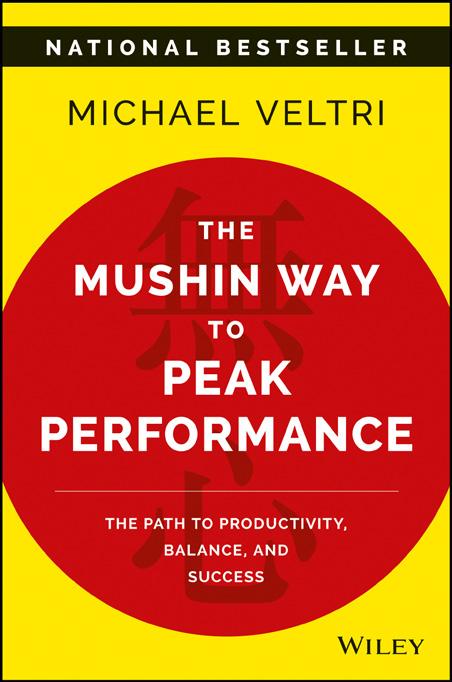

MICHAEL VELTRI
LEADERSHIP EXPERT & BESTSELLING AUTHOR
Michael Veltri is a leadership expert, battle-hardened business executive and Nationwide Bestselling author. Recognizing that success in business and life is created by the daily decisions we make, Michael elevates teams, fuel-injects leadership and improves business performance through better decision-making practices.
Platinum Sponsors
Awards Reception Sponsors

Gold Sponsors
Opening Keynote Sponsor

Mobile App Sponsor
powered by
Breakout Video Sponsor
Silver Sponsors
ActiveCampaign
agEnterprise
BILL
BizBuySell
BizCom Associates
Capital Connect Brokered by eXp Commercial
Consumer Fusion
Curious Jane
Delightree
EZee Assist
FranchiseHelp
Franchise Ventures
FRANdata
FranFast
Gbbis
GoGather
Guidant Financial
Integrated Digital Strategies
Internet Strategy Labs
iPost
Photo Booth Sponsor
Benetrends Financial
Coffee Break Sponsor
ClientTether
*as of press time
IQ BackOffice, Inc.
Ironside
MFV Expositions
PiinPoint
Quatrro Business
Support Services
Replicant
SnapCom
SOCi
SocialMadeSimple
SoundHound AI
Specialized Accounting Services
Text Request
Transitiv
Vendasta
Vox-Pop-Uli
Wells Fargo Bank
Xpressdocs
Zbra Studios
Tote Bag Sponsor
Northeast Color
Lead Generation Track Sponsor
JBecca
Handbook Sponsor Registration Sponsor
Citrin Cooperman
Agenda At A Glance Sponsor
Franchise Business Review
Lanyard Sponsor



Enspire For Enterprise
FisherZucker
Snack Break Sponsor Hospitality Sponsor
AnswerConnect
Presentation Resource
Sponsor
Reshift Media
Bronze Sponsors
All Point Retail
ClickTecs
Corporate Tax Incentives
Fishman Public Relations
Franchise Consortium
FranFund
CEO Summit Sponsors
Elysium Marketing Group
Notepad Sponsor
All Points Public Relations
IFPG - International Franchise Professionals Group
MSA Worldwide Scorpion
Suttle-Straus
Careertopia Franchise Executive Search
Fish 919
MSA Worldwide


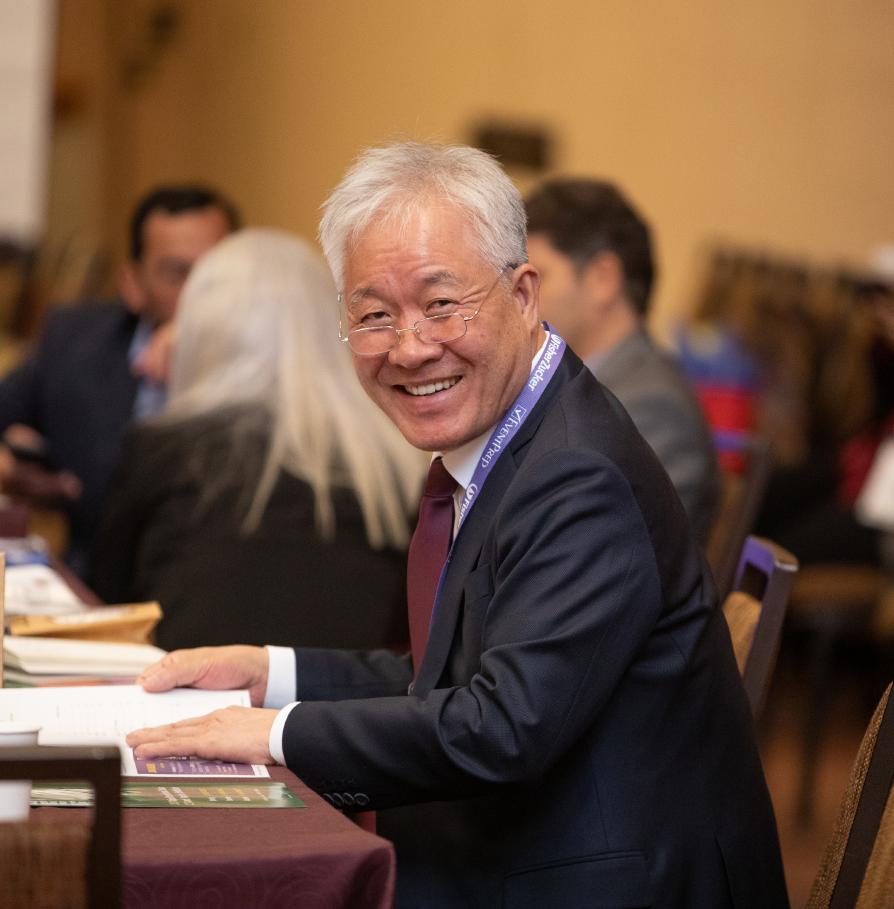
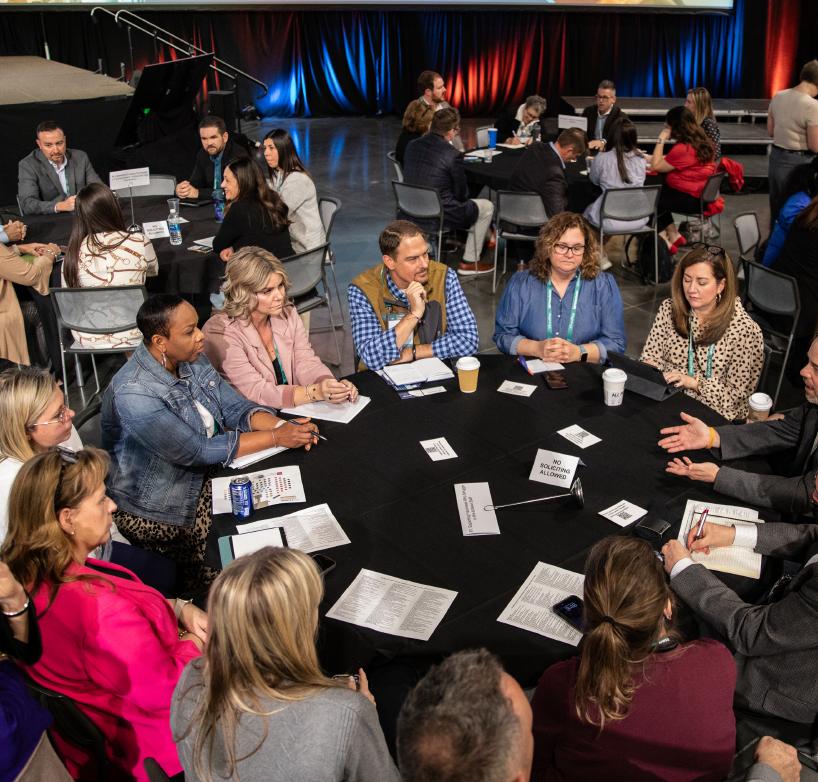

IFA ADVOCACY SUMMIT
September 9-11 | Washington, DC
FRANCHISE LEADERSHIP AND DEVELOPMENT CONFERENCE
October 16-18 | Atlanta, GA
Partnership event with Franchise Update Media
EMERGING FRANCHISOR CONFERENCE
November 18-20 | Austin, TX
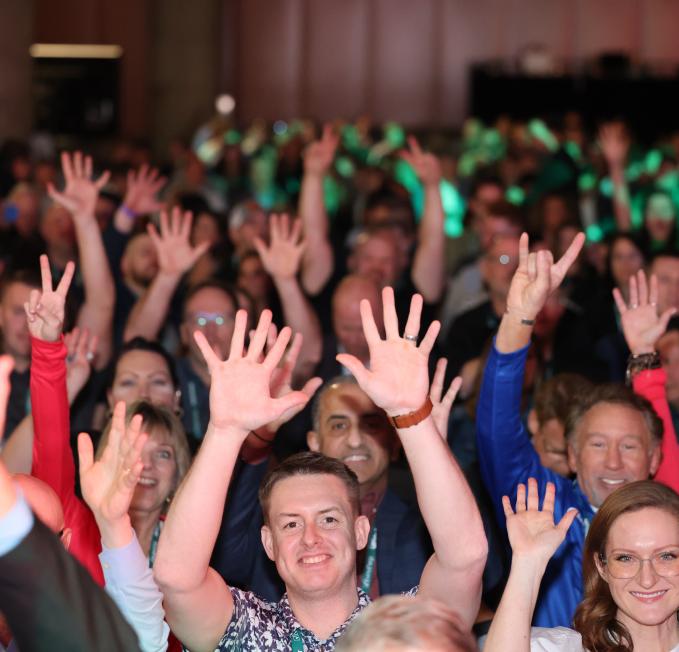
IFA Annual Convention
February 10-13 | Las Vegas, NV
International Franchise Show London
April 11-12 | London, England
Partnership event with MFV NSE
Legal Symposium
May 4-6 | Washington, DC
IBA/IFA Joint Conference
May 6-7 | Washington, DC
Franchise Customer Experience Conference
June 24-26 | Atlanta, GA
Partnership event with Franchise Update Media
IFA ADVOCACY SUMMIT
September 15-17 | Washington, DC
FRANCHISE LEADERSHIP AND DEVELOPMENT CONFERENCE
October 7-9 | Atlanta, GA
Partnership event with Franchise Update Media
EMERGING FRANCHISOR CONFERENCE
November 10-12 | Nashville, TN

Scan here to learn more about these events and plan your year with IFA!

m Specializing in Rollovers for Business Startups (ROBS), AKA 401(k) Business Financing.
m Providing customized business funding strategies, ranging from SBA loans to portfolio loans and beyond.
m Offering a suite of business services (Payroll, Bookkeeping & Tax, and more).
m Delivering expert support.

